Paul Finch's Blog, page 6
September 7, 2021
Dark days ahead, and dark anthologies too
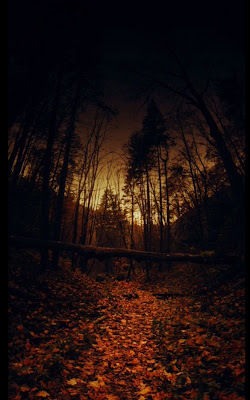 Okay, it’s that time of year again. September is already getting on, and the mist and mellow fruitfulness of the autumn has arrived. That means it’s time for some dark and eerie stories.
Okay, it’s that time of year again. September is already getting on, and the mist and mellow fruitfulness of the autumn has arrived. That means it’s time for some dark and eerie stories.Come off it, I hear you say. It’s always time for dark and eerie stories on this blog.
Well yes, that’s true. But it’s even more the case in the waning of the year, with the longer nights, mistier mornings and the fast approach of our favourite ghostly festivals, Halloween and Christmas. Mustn’t get carried away, of course … most of us are probably still nursing sunburn from the hot days of July, but today’s blog is all about preparation for the dark time, and the deluge of brand new spooky ANTHOLOGIES that are about to descend on you and make it even darker.Yes, indeed. Today we’re going to be talking about a whole glut of forthcoming collections of terrifying tales that should easily see you through this autumn and winter.
In addition to that, because we’re looking specifically at short stories this week, I’ll also be reviewing and discussing Steve Duffy’s latest incredible book of short fiction, FINDING YOURSELF IN THE DARK. If you’re only here for the Duffy chatter, you’ll find it in the usual place: the Thrillers, Chillers section at the lower end of today’s blogpost.
However, if you’re a keen follower of short scary from a variety of sources, then check out …
DARK FICTION FOR DARK SEASONS Forthcoming Anthologies for this autumn and winter
Before we get into the nitty-gritty, I’m very happy to announce that TERROR TALES OF THE SCOTTISH LOWLANDS, volume 14 in my round-Britain folk horror anthology series, has now been accepted by those spiffing chaps at TELOS , and they’ll be looking to publish it this October. But some minor things are still in the works, so there is no guarantee of that date yet. Keep watching this space for updates, artwork, tables of contents, blurbs, excerpts, and of course ordering details.
And now let’s get onto today’s business.
Roughly in publication order, here are 15 of the most exciting-looking dark fiction anthologies due for publication between now and next February.
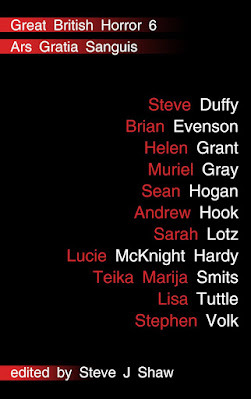 GREAT BRITISH HORROR 6: ARS GRATIA SANGUIS
GREAT BRITISH HORROR 6: ARS GRATIA SANGUISEdited by Steve J Shaw
(Out Now)
The high quality Brit horror series continues in the capable hands of editor Steve J Shaw, this time focused on the UK arts scene, which will never have been as dark and twisted as this.
Untitled (Cloud of Blood) – Brian Evenson
From Life – Muriel Gray
Having a Benny – Sarah Lotz
Our Lady of Flies – Teika Marija Smits
Everybody’s Always Losing Somebody – Sean Hogan
Sibyl – Lisa Tuttle
The Acolyte’s Triptych – Steve Duffy
The Field Has Eyes, the Wood Has Ears – Helen Grant
The Redeemers – Andrew Hook
Blind Man’s Buff – Lucie McKnight Hardy
The Waiting Room – Stephen Volk
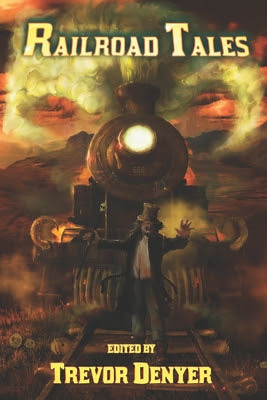 RAILROAD TALES
RAILROAD TALESEdited by Trevor Denyer
(Out Now)
Long-serving horror and spec fiction editor, Trevor Denyer, takes to the railways in his latest exploration of the dark shadows that lurk behind those deceptively ordinary icons of what appear to be our everyday lives.
The Tracks Through the Forest – John Kiste
Awaydays – Allen Ashley
The Hoosac Tunnel Legacy – Norm Vigeant
Railway Mutton Curry – Nidheesh Samant
The Number Nine – James E Coplin
Ghost Walker – Andrew Darlington
Sparrow’s Flight – Nancy Brewka-Clark
Harberry Close – CM Saunders
Geisterbahnhof – Saroise Ni Chiaragain
The Anniversary – David Penn
Across the Vale – Catherine Pugh
Where the Train Stops – Susan York
The Nibbler – Gayle Fiddler
Short Platform – Gary Couzens
Wilshire Station – Caitlin Marceau
And You Heard the Rattling Death Train – Simon Bestwick
Not All Trains Crash – Steven Pirie
Ballyshannon Junction – Jim Mountfield
Caboose – Andrew Hook
The Tracks – Michael Gore
The Devil Rides the Night Train – Curtis James McConnell
The Pier Station – George Jacobs
The Samovar – AJ Lewis
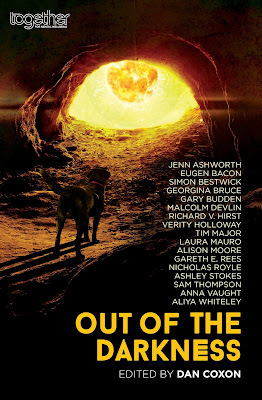 OUT OF THE DARKNESS
OUT OF THE DARKNESSEdited by Dan Coxon
(Due for publication on September 16)
Dan Coxon joins forces with Together for Mental Wellbeing and a host of quality authors to challenge our worst fears through the medium of horror fiction. As Dan himself says, we must understand our demons to overcome them.
Nocturia – Nicholas Royle
The Note – Jenn Ashworth
Lonely Souls in Quiet Houses – Laura Mauro
Seabound – Alison Moore
Goodbye, Jonathan Tumbledown – Tim Major
The Chorus – Aliya Whiteley
Meet on the Edge – Gareth E. Rees
The Forlorn Hope – Verity Holloway
Oblio – Richard V. Hirst
Still She Visits – Eugen Bacon
Bloodybones Jones – Sam Thompson
Flotsam and Jetsam – Malcolm Devlin
The Lightness of their Hearts – Georgina Bruce
The Residential – Gary Budden
Replacement Bus Service – Ashley Stokes
Temple – Anna Vaught
The Hungry Dark – Simon Bestwick
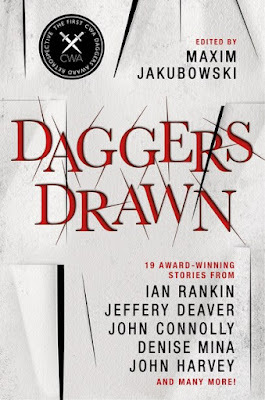 DAGGERS DRAWN
DAGGERS DRAWNEdited by Maxim Jakubowski
(Due for publication on September 21)
One of crime fiction’s most knowledgeable editors and authors, Maxim Jakubowski, gets together 19 of the Crime Writers Association’s scariest and most intense Dagger Award-winning short stories in one unforgettable must-have volume.
Swift 98 - Peter O'Donnell
Some Sunny Day – Julian Rathbone
Funny Story – Larry Beinhart
Herbert in Motion – Ian Rankin
Roots – Jerry Sykes
Martha Grace – Stella Duffy
The Weekender – Jeffery Deaver
Needle Match – Peter Lovesey
The Bookbinder’s Apprentice – Martin Edwards
Homework – Phil Lovesey
Laptop – Cath Staincliffe
The Message – Margaret Murphy
Fedora – John Harvey
Apocrypha – Richard Lange
On the Anatomization of an Unknown Man (1637) by Frans Mier – John Connolly
The Trials of Margaret – LC Tyler
Nemo Me Impune Lacessit – Denise Mina
The Dummies’ Guide to Serial Killing – Danuta Kot
@Me Too – Lauren Henderson
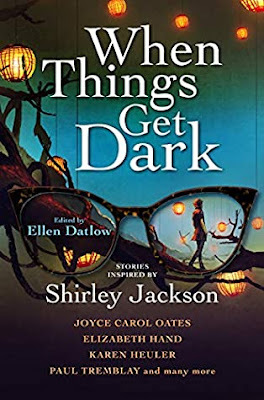 WHEN THINGS GET DARK
WHEN THINGS GET DARKEdited by Ellen Datlow
(Due for publication on September 21)
American mistress of horror, Ellen Datlow, summons top class authors to channel the spirit of Shirley Jackson in a brand new volume of completely original tales.
Funeral Birds – M Rickert
For Sale by Owner – Elizabeth Hand
In the Deep Woods; The Light is Different There - Seanan McGuire
A Hundred Miles and a Mile – Carmen Maria Machado
Quiet Dead things – Cassandra Khaw
Something Like Living Creatures – John Langan
Money of the Dead – Karen Heuler
Hag – Benjjamin Percy
Take Me, I am Free – Joyce Carol Oates
A Trip to Paris – Richard Kadrey
The Party – Paul Tremblay
Refinery Road – Stephen Graham Jones
The Door in the Fence – Jeffrey Ford
Pear of Anguish – Gemma Files
Special Meal – Josh Malerman
Sooner or Later, Your Wife Will Drive You Home – Genevieve Valentine
Tiptoe – Laird Barron
Skindler’s Veil – Kelly Link
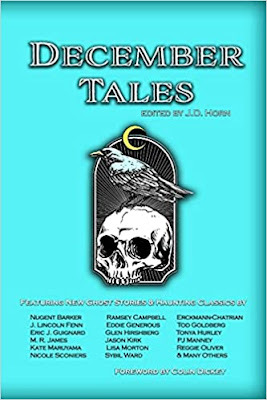 DECEMBER TALES
DECEMBER TALESEdited by JD Horn
(Due for publication on September 28)
Terrifying ghost stories have long been an essential ingredient of the Christmas festivities. JD Horn gathers a whole host of them here, both old and new, to chill your bones in time for the season of frost.
Grey Glass – Reggie Oliver
Whessoe – Nugent Barker
Cold Reflections – Sybil Ward
The White and the Black – Erckmann-Chatrian
Jetty Sara – Glen Hirshberg
Oh, Whistle and I’ll Come to You, My Lad – MR James
Ours – PJ Manney
The Queen of Spades – Alexander Pushkin
A Plague on the House – Lisa Morton
The Doll’s House – F Marion Crawford
The Shadow of the Dream – J Lincoln Fenn
The Old Nurse’s Story – Elizabeth Gaskell
Two Alices – Kate Maruyama
Aunt Joanna – Sabine Baring-Gould
A Blacksmith’s Gift – Eddie Generous
The Spectral Rout – Frances Power Cobbe
Fairytale of New York – Tonya Hurley
The Red Room – HG Wells
Epiphany – Nicole D Sconiers
Vera – Auguste Villiers de L’Isle-Adam
Incident at the Red Hawk Road Stop – Eric J Guignard
Above the World – Ramsey Campbell
Last Night at the Dairy Bar – Tod Goldberg
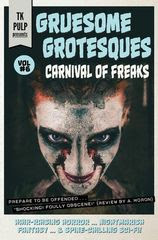 GRUESOME GROTESQUES Vol 6: CARNIVAL OF FREAKS
GRUESOME GROTESQUES Vol 6: CARNIVAL OF FREAKS Edited by Trevor Kennedy
(Due for publication on October 4)
The latest, much-awaited volume in the amazing, ultra-pulpy horror series, Gruesome Grotesques, from top DJ and tireless horror fan and editor, Trevor Kennedy.
Welcome to Circus Americana – Abdul Qaadir Taariq Bakari-Muhammad
Freakshow, A Show for Freaks – Adrian Baldwin
Sweet Susie Webb – Allison Weir
Nanosophobia: The Fear of Clowns – AP Sessler
The Uncanny Valet – Julianna Ocean
It Found Me – Belle Taine
Gone Fishing – Carl Redding
The Hidden Carnivale – Con Connolly
Black Candle Spell – Con Connolly
Three Eyed Jack – David Riley
Eye Attack – David L Tamarin
Dreams of Fertility – David L Tamarin
A Letter from a Lunatic – Dean M Drinkel
The Lost Smile – DT Langdale
Hello Sailor – EF Hay
Wish You Were Here – Henry Myllyla
Don’t F**k with Mr Weasles – HR Boldwood
Smack the Baby – Johnny Mains
Shoot All the Clowns – Kasey Hill
Dickless in Seattle – Kasey Hill
The Incredible Mr Maisers – Lyedson Enrique
Mark Mackey – Elizabeth Thornhill
Hall of Dreams – Mike Chinn
The Octo-Man – Randy Broecker
Closing Night – Raven Dane
Lady Charade – Rick Mohl
The Canned Tuna (A Fantastic Fish Tale) – Rob Thomas
Night of the Wereclowns – Russell Holbrook
The Crookback King – Aveto Manev
The Ringmaster – Ty Schwamberger
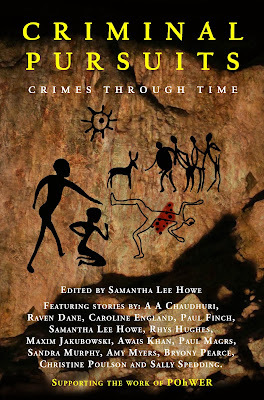 CRIMINAL PURSUITS
CRIMINAL PURSUITSEdited by Samantha Lee Howe
(Due for publication on October 10)
In support of human rights charity, POhWER, top crime and thriller writer, Samantha Lee Howe, pulls together a bunch of stories from some of the classiest names in the business to prove that murderous mayhem is not a pastime reserved for the present.
Changeling – Bryony Pearce
Flesh of a Fancy Woman – Paul Magrs
Dangerous Women – Sandra Murphy
Travellers – Maxim Jakubowski
Nights on the Town – Sally Spedding
Blindsided – Caroline England
The Victim – Awais Khan
The Way of All Flesh – Raven Dane
And Here’s the Next Clue – Amy Myers
The Trap – AA Chaudhuri
The Caveman Detective – Rhys Hughes
Faceless Killer – Christine Poulson
Slash – Samantha Lee Howe
The Good Neighbourhood – Paul Finch
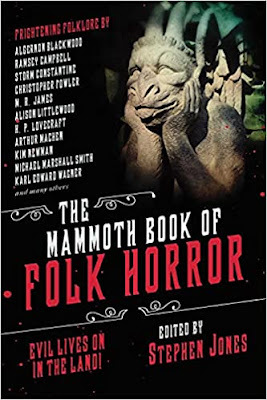 THE MAMMOTH BOOK OF FOLK HORROR
Edited by Stephen Jones(Due for publication on October 14)
THE MAMMOTH BOOK OF FOLK HORROR
Edited by Stephen Jones(Due for publication on October 14) Stephen Jones, one of the world’s most successful and respected horror anthology editors, meets folk horror, the genre’s current most popular craze. Seriously … what more could you ask for?
The White People – Arthur Machen
Jenny Greenteeth – Alison Littlewood
All I Ever See – Mike Chinn
Wailing Well – MR James
The Offering – Michael Marshall Smith
St Ambrew’s Well – David A. Sutton
Sticks – Karl Edward Wagner
Gravedirt Mouth – Maura McHugh
Gavin’s Field – Steve Rasnic Tem
The Hound – HP Lovecraft
The King of Stones – Simon Strantzas
The Devil’s Piss Pot – Jan Edwards
The Mistake at the Monsoon Palace – Chris Fowler
Wyfa Medj – Storm Constantine
The Dark Country – Dennis Etchison
Ancient Lights – Algernon Blackwood
Porson’s Piece – Reggie Oliver
The Fourth Call – Ramsey Campbell
The Gypsies in the Wood – Kim Newman
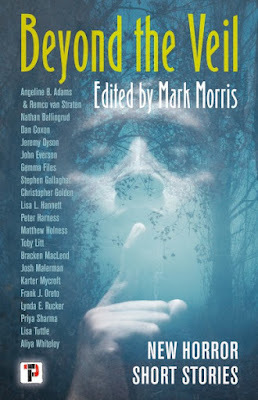 BEYOND THE VEIL
BEYOND THE VEILEdited by Mark Morris
(Due for publication on October 19)
With a horror pedigree spanning decades, Mark Morris edits his second horror anthology for Flametree Press, again calling on a host of world-class talent to produce brand new tales of terror.
The God Bag – Christopher Golden
Caker’s Man – Matthew Holness
The Beechfield Miracles – Priya Sharma
Clockwork – Dan Coxon
Soapstone – Aliya Whiteley
The Dark Bit – Toby Litt
Provenance Pond – Josh Malerman
For All the Dead – Angeline B. Adams and Remco van Straten
The Girl in the Pool – Bracken MacLeod
Nurse Varden – Jeremy Dyson
If, Then – Lisa L. Hannett
Aquarium Ward – Karter Mycroft
A Mystery for Julie Chu – Stephen Gallagher
Away Day – Lisa Tuttle
Polaroid and Seaweed – Peter Harness
Der Geisterbahnohof – Lynda E. Rucker
Arnie’s Ashes – John Everson
A Brief Tour of the Night – Nathan Ballingrud
The Care and Feeding of Household Gods – Frank J. Oreto
Yellowback – Gemma Files
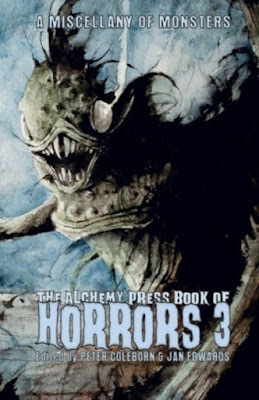 ALCHEMY PRESS BOOK OF HORRORS 3
ALCHEMY PRESS BOOK OF HORRORS 3Edited by Peter Coleborn and Jan Edwards
(Due for publication on October 29)
Indefatigable Alchemy Press crack on with their ever popular horror anthology series, in Volume 3 focusing on the subgenre of monsters.
Build Your Own Monster!!! Guaranteed to Scare the Whole Family!!! — Bryn Fortey and Johnny Mains
The Head — Garry Kilworth
Inappetence — Steve Rasnic Tem
Songs in the Dark — Jenny Barber
The Beast of Bathwick — Sarah Ash
Cuckoo Flower — Tom Johnstone
A Song for Christmas — Ashe Woodward
Dream a Little Dream of Me and My Shadow — Adrian Cole
Memories of Clover — KT Wagner
Sun, Sand, Stone — Marion Pitman
Redwater — Simon Bestwick
Dreamcatcher — Pauline E Dungate
The Daughters — Tim Jeffreys
Black Spots — John Llewellyn Probert
Echoes of Days Passed — Mike Chinn
What the Snow Brings — Ralph Robert Moore
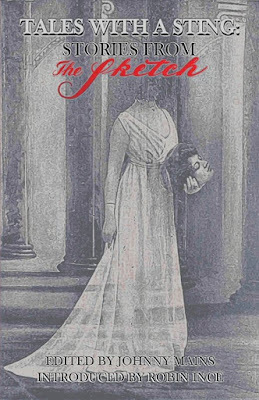 TALES WITH A STING: STORIES FROM ‘THE SKETCH’
TALES WITH A STING: STORIES FROM ‘THE SKETCH’ Edited by Johnny Mains
(Due for publication on October 31)
Author and editor Johnny Mains is fast becoming the go-to guy for forgotten dark fiction. Here, he brings our attention to some of the true treasures contained in The Sketch magazine, ‘a journal of art and actuality’, which ran from 1893 until 1959!
His Wife – Christine Castle
A Story with a Week Ending – Captain FRH Greenbank
As Luck Would Have It – E Winch
Taking the Veil – Katherine Mansfield
An Awkward Corner – Beatrice Heron-Maxwell
Eve and the Serpent – A Whatoff Allen
The Ring – Cyrus Brooks
The Waiting-Room – Winifred Duke
A Night’s Adventure – ‘Tanjong’
A Chapter of Them – W Douglas Newton
The Horoscope – Olga A Rosmanith
Plot by Mr Herringshaw – Norah Cotterill
Mr Hazeltip’s Villa – RC Cole
Fighter Pilots Shouldn’t Dream – ‘Wing Slip’
Recognition – St Vincent Troubridge
Lost Eden – Katherin Hortin
I Am Hanged! – Basil MacDonald Hastings
The Face – William Freeman
Panic – Winifred Agar
 BEST HORROR OF THE YEAR: Vol 13
BEST HORROR OF THE YEAR: Vol 13Edited by Ellen Datlow
(Due for publication on December 23)
One of the few annual ‘best of’ round-ups still on the market. Editor Ellen Datlow reads every single scrap of original short horror fiction so that you don’t have to, and here presents the absolute pick of the crop.
Exhalation #10 — AC Wise
A Hotel in Germany — Catriona Ward
A Deed Without a Name — Jack Lothian
Lords of the Matinee — Stephen Graham Jones
Cleaver, Meat, and Block — Maria Haskins
The Eight-Thousanders — Jason Sanford
Scold’s Bridle: A Cruelty – Richard Gavin
Come Closer — Gemma Files
It Doesn’t Feel Right — Michael Marshall Smith
Mine Seven — Elana Gomel
Sicko — Stephen Volk
Mouselode Maze — Christopher Harman
Heath Crawler — Sam Hicks
The Devil Will Be at the Door — David Surface
Let Your Hinged Jaw Do the Talking — Tom Johnstone
Scream Queen — Nathan Ballingrud
We Do Like to Be Beside — Peter W Sutton
Contrition (1998) — JAW. McCarthy
Tethered Dogs — Gary McMahon
Bloody Rhapsody — Alessandro Manzetti
In the English Rain — Steve Duffy
A Treat For Your Last Day — Simon Bestwick
Trick of the Light — Andrew Humphrey
Two Truths and a Lie — Sarah Pinsker
The Whisper of Stars — Thana Niveau
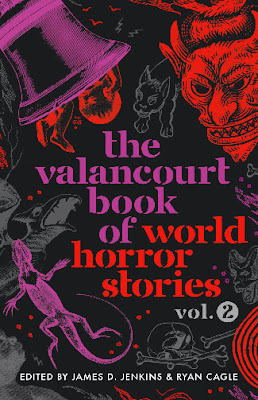 VALANCOURT BOOK OF WORLD HORROR STORIES: Vol 2
VALANCOURT BOOK OF WORLD HORROR STORIES: Vol 2Edited by James D Jenkins and Ryan Cagle
(Due for publication on February 22)
Valancourt Books are currently rocking the horror world in all sorts of ways, not least with their short fiction series, Valancourt Book of World Horror. Vol 1 was a huge success; Vol 2 is likely to follow that same path.
The Nature of Love – Luciano Lamberti
Train of Consequences – Roberto Causo
Screamer – Braulio Tavares
The Recording of the Will – Yavor Tsanev
Whitebone Spirit – Zhang Yueran
The Wonders of the Invisible World – Teddy Vork
The Grain Dryer of Tammõküla – Indrek Hargla
Dreams of Ash – Mélanie Fazi
Firstborn – Konstantinos Kellis
Lucky Night – Gary Victor
The Bell – Steinar Bragi
Shelter from the Storm – Jayaprakash Satyamurthy
The Pallid Eidolon – Stephan Friedman
The Old Wound and the Sun – Yasumi Tsuhara
The Ant – Anton Grasso
Owolabi Olowolagba – Dare Segun Falowo
The War – Wojciech Gunia
Footsteps of Hunger – Ana María Fuster Lavín
The Regensburg Festival – Val Votrin
Mask – Bora Chung
The Runner – Viola Cadruvi
 UNCERTAINTIES: Vol 5
UNCERTAINTIES: Vol 5Edited by Brian J Showers
(Out Now)
A bit of a cheat in this case, as Uncertainties 5 has actually been out since last spring, but this unsung series of weird and horrific short fiction from Ireland’s Swan River Press is a complete gem. And as Vol 5 is still available, you need to check it out while you still can.
Three Sisters Bog – Eoin Murphy
First a Bird – Ramsey Campbell
To See the Sea – Sean Hogan
Everything We Say and All the Things We Do – Jason E Rolfe
Not Even Legend – Alan Moore
Skeleton Day – Aislinn Clarke
Malady of Laughter – Inna Effress
Little Lives – Deirdre Sullivan
So Much Potential – Simon Strantzas
Away – Nina Antonia
Washed in the Blood of the Sun – John Langan
Trap – Carly Holmes
THRILLERS, CHILLERS, SHOCKERS AND KILLERS …
An ongoing series of reviews of dark fiction (crime, thriller, horror and sci-fi) – both old and new – that I have recently read and enjoyed. I’ll endeavour to keep the SPOILERS to a minimum; there will certainly be no given-away denouements or exposed twists-in-the-tail, but by the definition of the word ‘review’, I’m going to be talking about these books in more than just thumbnail detail … so I guess if you’d rather not know anything at all about these pieces of work in advance of reading them yourself, then these particular posts will not be your thing.
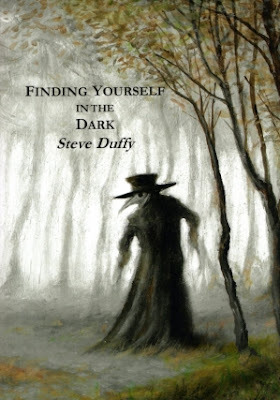 FINDING YOURSELF IN THE DARK
by Steve Duffy (2021)
FINDING YOURSELF IN THE DARK
by Steve Duffy (2021)
Another installment of Sarob Press’s superb series of single-author collections of weird fiction. For those not in the know, Sarob trade exclusively in beautiful hardback editions (their jackets invariably illustrated with great panache by Paul Low), and have now published an extensive list of titles. They have a strong preference for supernatural fiction with a traditional feel, material reminiscent of the British greats of yesteryear, MR James, EF Benson, HR Wakefield and the like, though they are not bound by that, favouring contemporary authors with a generally much wider scope.
Steve Duffy is the perfect example. A writer for today though with a vast appreciation of the many masters and mistresses of ghost story excellence that went before him.
Finding Yourself in the Dark is his fifth collection to date, and, surprisingly, his first for Sarob Press. Here’s the blurb from its dust-jacket.
Robes, she decided; robes and an old-fashioned hat. No features were visible beneath the broad lowered brim of the hat, and the long brown mantle shrouded the body. Still, there was a general formlessness about it that went beyond whatever it was wearing. It’s the wrong shape, she thought, quite arbitrarily. Phoebe’s steps began to falter. She forced herself to go on, to get close enough to see what it was that she found so disconcerting. Slowly, the figure seemed to take notice of her, looked up at her approach. Now Phoebe could see what was wrong in its shape. For a head it had only a mask that covered all of its features; a medieval plague mask, the head of a bird or some other beaked creature, stark, grotesque, atavistically cruel. Its eyes, hollow voids in bone whiteness, goggled at her as if daring her to proceed. With a scream, she turned and ran …
Steve Duffy first came to my attention back in the 1990s as a member of the so-called ‘James Gang’, an unofficial bunch of relatively new writers who were strongly influenced by the works of MR James and whose stories came to populate such mainstay ghost fiction magazines of that halcyon age as Ghosts & Scholars and All Hallows . Many of his earlier stories were Jamesian in the extreme. But note that I say ‘many’, not ‘all’, for as a writer learning his trade, Duffy ventured far and wide within the parameters of weird and disturbing fiction, sometimes with straightforward non-Jamesian ghost stories, sometimes with near-comedies, sometimes with raw horror, and sometimes with multi-layered tales that were more concerned with the human condition and the state of contemporary society.
The years have passed since then, of course, and the more Duffy has poured out his fiction, the more of these deeper stories we are seeing. To my mind, his work is now firmly in the category of literary horror, though no doubt Duffy himself would dismiss such pigeon-holing as arrant silliness. In reflection of which, I’m pleased to say that, whatever pretentions he does or doesn’t have, he’s still keen on scaring the pants off his readers, and thus has no hesitation in filling his pages with ghouls, goblins and other eerie and unknowable beings.
Duffy is a versatile writer. Poetic, occasionally mischievous, always compelling. On top of that, his craftsmanship is exquisite. Only those who could really write became regulars in the unofficial club that was the James Gang, and Duffy was outstanding even by those standards. On that basis, imagine how good he is all these years later.
In which spirit, I don’t think I’ve read a single collection by any author as commandingly well written as Finding Yourself in the Dark . There isn’t a single dud here, every one of its twelve stories an exquisite piece of literature in its own right. And though the fine style is consistent, we’ve also got that wide range of subject-matter, the author hitting us alternately with straight-up bone-chillers and deeper, more introspective pieces. In all cases though, these stories cut. That’s the other thing with Steve Duffy. When he does horror, he does horror … and by that I mean it’s either scary or distressing or both. There is nothing ‘vanilla’ about his work, but it’s subtle too. Don’t expect to see an axe-murderer on the first page (though that could easily happen later on).
Here are a few teasers, just to whet your appetites.
Chambers of the Heart : Beautiful Olivia, now ageing somewhat, is bored working the low class Chelsea art gallery, which she fronts for a minor player in the London underworld. Then, one day in 1981, the mysterious, charming and strangely scary Mr Aamon comes to call …
The Other Four O’Clock : Matt and Samiya take a cottage on the East Anglian coastline during a cold and foggy winter. Everything is fine despite this, until they hear the other church bell tolling, the one from the distant past …
The Ice Beneath Us : In a remote, snowbound cabin in northern Alaska, two hardbitten ice fishermen relive a night of fear when they were menaced by a sinister stranger from the deep-frozen forest …
Next up, two particularly special pieces of horror writing …
The Clay Party : In 1846, a wagon train founders in hard country and terrible weather. When starving, the marooned settlers fall on each other, marshalled by the cannibalistic maniac, Hiderick. But spirited widow, Elizabeth, a woman of Eastern European heritage, will do anything she must to protect her child ...
A Day at the Hotel Radium : Jewish academic, Apalkov, has finally escaped Nazi Germany by taking a train to the fairy tale-like European free state of Grenzsental, where he joins an old colleague for an indefinite stay at the truly glorious Hotel Radium. It’s a heavenly location. Almost too good to be true …
And now …
FINDING YOURSELF IN THE DARK – the movie
Well, no film maker has optioned this book yet, and whether or not it’s ever likely to happen I couldn’t say, but seeing as this part of the review is always the fun part, here are my thoughts (for what they’re worth) just in case some film-maker opts to get it onto the screen.
Note: these four stories are NOT the ones I necessarily consider to be the best in the book, but these are the four I perceive as most intense, most filmic and therefore most right for adaptation in a portmanteau horror. Of course, no such horror film can happen without a central thread, and this is where you guys, the audience, come in.
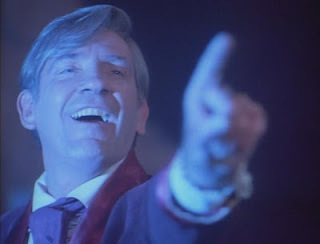 Just accept that four strangers have been thrown together in unusual circumstances which require them to either relate spooky stories or listen to them. It could be that they find themselves in an eerie old wax museum, where each one of them finds his/her reflection in one of several grotesque effigies (Waxwork, anyone?), or maybe each story is a nervous offering made by some prospective new member to the merciless Club of the Damned (a la Supernatural).
Just accept that four strangers have been thrown together in unusual circumstances which require them to either relate spooky stories or listen to them. It could be that they find themselves in an eerie old wax museum, where each one of them finds his/her reflection in one of several grotesque effigies (Waxwork, anyone?), or maybe each story is a nervous offering made by some prospective new member to the merciless Club of the Damned (a la Supernatural). Whatever, and without further blabber, here are the stories and casts I would choose:
The God of Storage Options: On a dreary Christmas Day, a young employee at a large, impersonal storage facility is asked into work to help his recently separated boss, Brough, drown his sorrows. It’s a desultory affair and the youngster gets drunk, only to wake up later alone and in the dark ...
The Youngster – Michael Socha
Brough – Lennie James
The Last House on Mullible Street: A London council worker uncovers a tape on which a bunch of East End workmen recall an incident from their shared youth. How during the Blitz, they broke into the house of an old Jewish neighbour and encountered a hulking creature, a man made entirely from mud …
Charlie, Ted, Ivor, Morrie, Titch – A bunch of Cockney urchins. Name ’em if you know ’em.
Even Clean Hands Do Damage: After losing her little daughter, heartbroken Rae begins to have visions of the dead trying to contact her. In an effort to lay these ghosts, she passes comforting messages to their loved ones. But then one day a mysterious and persistent spirit calls to her from far across the country, and she has no option but to travel …
Rae – Nathalie Emmanuel
Mrs Bayliss – Eve Myles
No Passage Landward: Phoebe seeks solitude on a private Welsh headland, but when a spiteful gatekeeper locks her into the parking area for the night, she learns that it was once the site of a leper colony. And very quickly, as the darkness falls, she begins to suspect that she isn’t alone …
Phoebe – Jodie Comer
August 25, 2021
Delving into the deepest, darkest dystopias

Hello all. If it seems that I haven’t been posting as many blogs as usual in recent times, that’s correct, I haven’t. Basically, I’m waiting to make announcements. But August is the height of the holiday season, and people are not at their desks.
If I could unveil the jacket for my next stand-alone thriller, NEVER SEEN AGAIN, and go to town a little more on the synopsis, believe me, I would. Likewise, if I could show you the cover and the amazing table of contents for the next TERROR TALES volume, or talk about the next HECK novel, or the proposed LUCY CLAYBURN TV series, or if I could say anything at all about the new screenplay I’ve just been commissioned to write after one of my older novellas was very unexpectedly optioned for film development last month, I would eagerly do so.
I would go to town, trust me. I would trumpet it from the rooftops.
But in all these cases things are not quite ready yet, and even here at du Cote de Chez Finch, we must patiently await developments. Therefore, this is another of what I consider to be my ‘holding pattern’ blogposts. In other words, I blabber a bit and chuck out a few radical ideas that some writers, readers and general followers of dark fiction might find interesting.
Therefore, I’ll this week be looking at some of the Most Extreme Cities on Earth, grim metropolises that literally scream to be written about in crime, thriller or horror fiction, urban locations that for various reasons would make absolutely perfect backdrops for dark, strange and stressful reading.
On that same theme, today’s Thrillers, Chillers book review will focus on Admed Saadawi’s remarkable postmodernist nightmare of present day Iraq, FRANKENSTEIN IN BAGHDAD .
If you’ve only called in for the Saadawi review, that’s absolutely fine. You’ll find it, as always, at the lower end of today’s blogpost. Zoom on down there straight away.
On the other hand, if you’ve got a minute to spare, you might find time to enjoy …
Extremes of urban darkness
Neither thriller fiction, crime fiction, horror fiction, nor dark fiction in general, is any stranger to inaccessible and hostile locations. In fact, it’s often enhanced by them. My last blogpost, which I made at the end of last month, focussed on far-flung places, the extreme ends of the Earth (and beyond), where some of the greatest and most chilling novels ever written have been set. For the most part, though, these were wilderness environments noteworthy for their terrifyingly low or high temperatures, their dangerous flora and fauna, their challenging geography, their utter isolation from everyday human contact, and so on.
 This week I thought why not take a similar idea into the city, because there are lots of inhabited places on Earth – real places! – which, while not necessarily horrendous to live in (I’m sure many of their occupants are rightly happy with their lot), would drop the jaw of the average outsider, and could make highly atmospheric backgrounds against which to set suspenseful, frightening fiction.
This week I thought why not take a similar idea into the city, because there are lots of inhabited places on Earth – real places! – which, while not necessarily horrendous to live in (I’m sure many of their occupants are rightly happy with their lot), would drop the jaw of the average outsider, and could make highly atmospheric backgrounds against which to set suspenseful, frightening fiction. The ten cities I’ve picked today may already feature in novels or movies. If they do, apologies … I was unaware of the fact (which is not unusual, to be fair), but even if they don’t that doesn’t mean there haven’t been some great works of fiction set in some of the world’s most extreme urban locations.
 For example, Julianne Pachico’s
The Anthill
is a literary but very frightening ghost story set in the heart of Medellin, Columbia, once known as the most dangerous city in the world due to the power and ruthlessness of the infamous Medellin Cartel.
For example, Julianne Pachico’s
The Anthill
is a literary but very frightening ghost story set in the heart of Medellin, Columbia, once known as the most dangerous city in the world due to the power and ruthlessness of the infamous Medellin Cartel. Sam Hawken’s The Dead Women of Juárez , meanwhile, takes us to the once romantic but now desolate Mexican border town, Ciudad Juárez, in the middle of the 1990s, where an alcoholic detective struggles to get off first base as the city is overwhelmed by an unstoppable epidemic of feminicides.
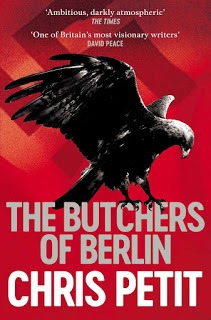 Then we have Chris Petit’s
The Butchers of Berlin
, wherein we travel back to a time when Germany’s capital burns nightly due to Allied air raids, the blacked-out streets are riddled with crime, violence and corpses, the terror of the advancing Russians is overwhelming, drunkenness, poverty and madness are rife, the Nazis still rule, and yet a conscience-stricken cop must somehow investigate a heinous conspiracy.
Then we have Chris Petit’s
The Butchers of Berlin
, wherein we travel back to a time when Germany’s capital burns nightly due to Allied air raids, the blacked-out streets are riddled with crime, violence and corpses, the terror of the advancing Russians is overwhelming, drunkenness, poverty and madness are rife, the Nazis still rule, and yet a conscience-stricken cop must somehow investigate a heinous conspiracy. Of course, cities don’t have to be deprived, or overrun by crime and squalor, or flattened by war, or impossibly isolated, or simply forgotten in order to play host to serial killers, satanic cults, organised crime, human slavery, torture-for-hire, Snuf pornography, etc. But just imagine that your fictional detective is investigating something along these lines at the same time as having to cope with everyday life (and crime) in any one of these …
STRANGE DYSTOPIAS
1. Pyongyang, North Korea
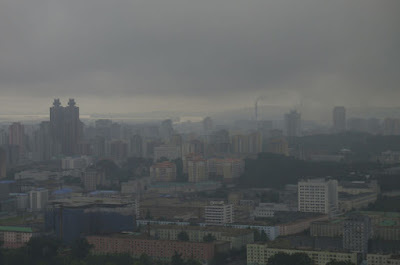
Possibly the ultimate real-life dystopia. It’s not just the brutal and secretive regime that overshadows everyday existence here, it’s the near-shameless way the capital city reflects this. Pyongyang is filled with bleak architectural monstrosities, many seeming to serve no purpose and many standing empty. It’s also famous for its roads, huge highways in some cases, that lead absolutely nowhere. At least on this image you can’t see the notorious Ryugyong Hotel, where the lifts don’t work (even those connecting to the lowest of its 105 floors), many interior walls are bare concrete, and of course, where almost no one ever stays. Assuming you could ever think of some method by which to convincingly set your thriller in Pyongyang, you’d lack for no obstacles to put in your hero’s way.
2. Norilsk, Russia
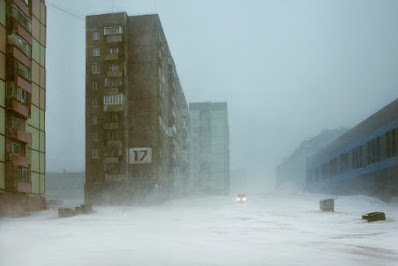
The world’s northernmost city and one of the coldest continuously inhabited places on Earth is Norilsk, which is situated far into the Russian Arctic. It’s also one of the most polluted, its chemical and metallurgic operations running night and day, innumerable pipes and chimneys pumping out smoke, gas and other unregulated toxins, though in truth you won’t notice this easily when the city is swept by blizzards for approx 130 days a year, deep snow covers the ground for 270 days, and darkness reigns 24/7 for six weeks in the depths of winter. Even in summer the air is cold and if it doesn’t snow, the rain is highly acidic. Add to that the usual Stalinist infrastructure – concrete filing-cabinets passing for blocks of flats, public services that work inadequately and intermittently in the harsh conditions – and most authors I know would struggle to make their book grimmer than the average day in a real Norilsk citizen’s life.
3. Tijuana, Mexico
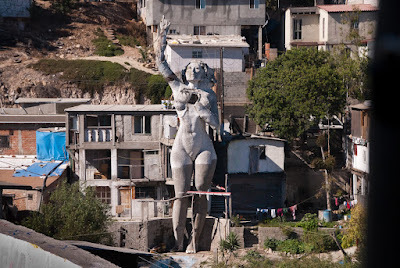
The tragedies of Mexico’s border cities are widely known, but Tijuana embodies them. There are good things here, but bad things too, including Friendship Park, where locals can approach the wire fence and hold sad conversations through it with relatives who were successful in their efforts to enter the US. Much local industry comprises foreign-owned industrial plants where sweatshop conditions prevail and pay is poor. Many Tijuana neighbourhoods are thus slums, tin-shack housing balanced precariously on piles of tyres. And then there is the crime. The border outpost long attracted rough trade, meaning that sex shows and drugs were always available. But the dope wars have left the city battle-scarred, kidnappings and robberies happen regularly, and everyday tourism has collapsed. This sadly eroded statue, erected in 1990 to look to the future, says much.
4. Ashgabat, Turkmenistan

At first glance, Ashgabat looks as though it doesn’t belong anywhere near this list. Even though it’s located in the middle of barren nothingness, on the edge of Central Asia’s Karakum Desert, it’s incredibly neat, tidy and pretty. In fact, you might say that it’s actually a bit too neat and pretty. And there’s the rub. A former Soviet state, Turkmenistan is still a dictatorship, current and former rulers enjoying such power (and wealth from the country’s vast gas reserve), that they’ve been able to pass edicts to the effect that all public buildings must be sheathed in glimmering white marble, that only white cars are permitted, and that public entertainments (oh, and dogs!) are banned. Monuments dominate every skyline: fabulous statues and hugely OTT buildings. It’s a mystical, pristine fantasy land, but strictly controlled. The secret police are never far away.
5. Iquitos, Peru
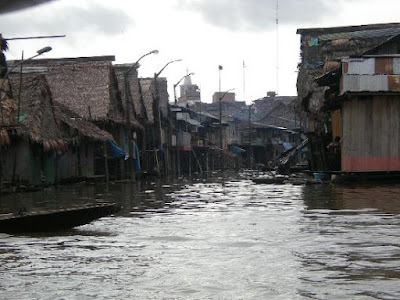
It’s easy for people who haven’t been there to picture the Amazon River as a picturesque waterway flowing slowly and dreamily through an endless, emerald paradise. And while this may be true along some stretches it’s less the case when you arrive at the Amazonian city of Iquitos in Peru. First off, it has the unenviable reputation of being the world’s largest city that can’t be reached by road, though even travelling by river it’s four days to the next town. Living conditions can be very hard here; Iquitos suffers from intense thunderstorms, which often cause flooding (and that’s a serious risk to life when you look at the teeming stilted shanties built along the muddy riverbanks!). Poverty is also much in evidence, which causes regular social unrest. If you want to tell a tale set literally in an ‘urban jungle’, this could be the place.
6. Yakutsk, Russia

Back to the frozen north again, and this time a city in Siberia that can only be reached along a wilderness track, the Kolyma Highway, which was built by gulag prisoners, so many of whom died and were buried there that even today it’s known as the Road of Bones. Another road, the Lena Highway, also connects to Yakutsk, but only for part of the year as at one point it requires you to drive over the ice covering the River Lena (as yet unbridged). Little wonder it’s generally regarded as the most isolated city on Earth (it’s just under 5,000 miles from Moscow!). It’s also another one that’s incredibly cold, boasting a year-round average temperature of -8 (though predictably, it’ll probably be the one warm day of the year when your fictional hero chances his car on the Lena). A city for which the term ‘back of beyond’ was surely coined.
7. Agbogbloshie, Ghana
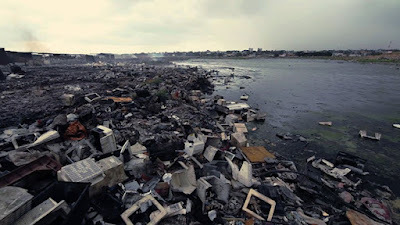
The closest locality on this list to the living Hell we saw in Blade Runner 2049 . But in all seriousness, the waste and pollution here is ghastly. Part of Ghana’s capital city, Accra, Agbogbloshie commenced life as an out-of-town wetland, but during the 1980s became home to refugees fleeing a tribal war. Slum settlements arose, and in the 1990s, when electricity was introduced, a demand grew for household appliances. Most of these arrived second-hand, did not last and subsequently were consigned to open landfills. The area’s reputation for ‘processing’ electrical waste grew, and soon it was shipping in from other African cities and even overseas. Agbogbloshie is now a dumping ground for such vile e-rubbish, the whole town overwhelmed by mountains of the stuff. It’s allegedly vital to the local economy, but ruinous to local health.
8. Kangbashi, Inner Mongolia (China)

Kangbashi is actually part of a city rather than a city in itself. It is connected to Ordos, a thriving metropolitan zone close to the Yellow River. But the big mystery here is how eerily deserted it is. A huge showpiece suburb built in response to an unexpected mining boom in central China, it was designed (and equipped, because it has everything a city could need, from children’s play areas to fully functioning bus services) to house over a million people. But somehow, for reasons never fully explained, that anticipated influx of workers never arrived. For years, Kangbashi stood almost entirely empty, the silence echoing along its unused subways, ringing around its numerous identikit apartment complexes, though if that disappoints you because you can’t write a book with no one in it, don’t worry … by all accounts, the apartments are now, finally filling.
9. Caracas, Venezuela
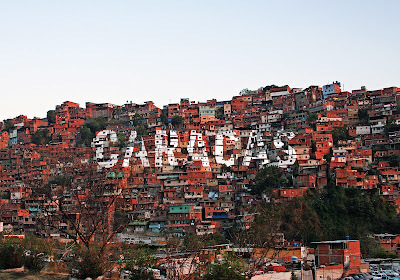
Venezuela is yet another country whose political and economic problems have become endemic, a grim fact that feeds directly into Caracas’s main problem: violent crime. It has the highest murder rate of any capital city in the world, about twenty a day, approximately nine out of ten such incidents going unsolved. Street robberies and kidnappings, meanwhile, are almost beyond counting. It is particularly dangerous for foreigners, who are perceived to be carrying dollars, but even the impoverished locals follow simple rules: don’t flash any jewellery, cash or your watch; don’t drive a swanky car; always hurry through crowded areas; and if you’re going to a party, don’t leave and head for home until daylight. The perpetrators are mostly street-gangs who live by the rule ‘the strong take everything’. And mostly, they do.
10. Dzerzhinsk, Russia

I feel guilty including another Russian city, but if dystopia exists anywhere today, it’s surely in Dzerzhinsk, where the life expectancy for women is 48, and for men 42. Located near Novgorod, all kinds of nasty substances were made here during the Soviet era, everything from pesticides to poison gasses for use in chemical warfare (for which reason it was closed to foreigners until very recently). But even now, at least ten chemical factories are still at work in the city, filling the air (and supposedly the water supply) with dioxins and heavy metals. Perhaps the city’s most shocking feature is the ‘White Sea’, a legacy of the toxic waste products once routinely buried in the earth here. It resembles a huge salt flat, but it’s actually a sludge of deadly chemicals left suppurating in the open air. It covers 100 acres and killed off an entire forest as it spread.
(Many thanks to the various photographers originally responsible for these images, which I picked up simply by trawling the Net. If any would like to make themselves known to me, I will happily credit their work. The painting at the top of this blogpost, meanwhile, is by the amazing STEFAN KOIDL, much of whose work takes a deeply dystopian look at the world we know).
THRILLERS, CHILLERS, SHOCKERS AND KILLERS …
An ongoing series of reviews of dark fiction (crime, thriller, horror and sci-fi) – both old and new – that I have recently read and enjoyed. I’ll endeavour to keep the SPOILERS to a minimum; there will certainly be no given-away denouements or exposed twists-in-the-tail, but by the definition of the word ‘review’, I’m going to be talking about these books in more than just thumbnail detail, extolling the aspects that I particularly enjoyed (I’ll outline the plot first, and follow it with my opinions) … so I guess if you’d rather not know anything at all about these pieces of work in advance of reading them yourself, then these particular posts will not be your thing.
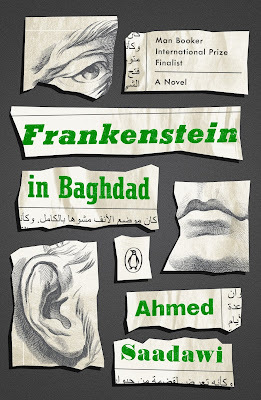 FRANKENSTEIN IN BAGHDAD
FRANKENSTEIN IN BAGHDAD
by Ahmed Saadawi (2013)
Outline
Iraq, 2003. A shell of a country in every sense of the word, but nowhere does that apply more visibly than in Baghdad itself, where the social and architectural fabric of the city has been near-enough destroyed even though the war is still raging. Saddam and his forces have gone, while the Americans and their allies have retreated into fortified enclaves, from which they only occasionally emerge in armoured columns, making swift and futile patrols. But now a range of replacement killers, not just the Sunni and Shiite militias and the Iraqi National Guard, but armed gangs of seemingly every persuasion, shoot it out daily on the shell-ravaged streets, and bombings are a common occurrence, the resulting indiscriminate explosions killing dozens each time and annihilating more and more of the city’s infrastructure, doing so much damage that what remains of the Iraqi government are completely unable to repair it.
The ordinary citizens eke out an appalling existence amid corpses and bullet-scarred ruins, and yet somehow they survive. One of these, an eccentric, happy-go-lucky junk dealer called Hadi, prowls the rubble looking for things to sell, and occasionally entertains his neighbours in the time-honoured tradition of Scheherazade with his tall stories.
Hadi, we realise, like so many of his fellow Iraqis, is in a state of ongoing traumatic stress, so much so that he barely knows it anymore. His grasp of reality is so tenuous that one day, instead of collecting rubbish and trying to sell it in his shop, he collects disparate human body parts, thinking that if he can stitch them all together and give them a proper burial, it will soothe a great number of aggrieved souls.
At the same time, in a particularly effective, near hallucinatory sequence, Hasib Mohamed Jaafar, a conscientious security guard, is killed in yet another suicide truck-bomb attack, his body almost vapourised in the blast, his spirit cast to the four winds.
Though it doesn’t remain there.
Deeply affronted by its own murder, Hasib’s spirit comes in search of a new host, and discovers the sewn-together travesty in Hadi’s outhouse. It duly possesses the homemade corpse, bringing it to a monstrous kind of life.
The patchwork horror has no initial purpose other than to wander the devastation of its former home city, though of course it can’t do this by daytime, for it is so hideous to look upon. Instead, it travels by night … and starts to commit murders.
These are not carried out for their own sake, for the hybrid thing, utterly deranged, is a mix of personalities, and having heard the prayers of those slain from whom it is comprised, now seeks vengeance on all their behalf. There is thus a rhyme and reason behind its crimewave, though few initially notice this thanks to the surplus of criminal violence already in progress. Nevertheless, urban legends spread that a monster, the Whatsitsname, as they call it, is on a non-stop nocturnal rampage, and soon the population are as terrorised by this as they are by any of the insurgent militia.
No one can locate the Whatsitsname during daytime because it has found a place to lie low. Elishva, an Assyrian Christian widow, who lives in the district of Bataween at the very heart of the guerrilla war being waged in the city, has long been in mourning for a son who never came home from the Iran/Iraq conflict of the early 1980s. When the Whatsitsname breaks into her house, the disturbed woman confronts it, and immediately decides that this is her disfigured son, returned at last.
Her home and the motherly care she provides prove convenient for the Whatsitsname, which is far from done in its quest for vengeance. It has now expanded its search, hunting down anyone it considers to be a criminal, though its righteousness is increasingly compromised because as the body parts it seeks vengeance for rot and fall away, it replaces them with new chunks of humanity, and some of these, inevitably, come from slaughtered men who were once criminals themselves.
Meanwhile, determined to investigate the ongoing bloodbath are two very different characters.
Mahmoud al-Sawadi is a local journalist who is working on the story, though his life is complicated by his Machievellian editor, Ali Bahir al-Saidi, whose mistress, Nawal al-Wadir, Mahmoud happens to be in love with, and whose intrigues look increasingly likely to get the magazine closed. Mahmoud’s direct opposite in terms of temperament and intellect is Brigadier Sorour Mohamed Majid, head of the Tracking and Pursuit Department, and a brutal, autocratic man drawn from the old regime but now charged with finding the Whatsitsname. Denuded of all his old methods, his spies and informers, Majid relies increasingly – and this is another nod, I suspect, to the magical days of The Arabian Nights and The Thief of Baghdad – on astrologers, soothsayers and other mystics, who attempt to collect intelligence by contacting the djinn.
Meanwhile, our main antagonist continues to scour the benighted backstreets, killling with a free hand, and at the same time, amassing a band of fanatical followers, creating, in effect, yet another insurgent group with which to torment the tragic city …
Review
It’s perhaps an obvious point to make that Frankenstein in Baghdad was published in English in 2018, 200 years to the year after the first publication of Frankenstein (or, as it was alternatively titled, The Modern Prometheus ), but that is largely it in terms of similarities. Though both novels share a murderous, sewn-together monstrosity as their central antagonist, in the latter book there is no real concept of good v evil, minimal debate between science and religion, and no musing at all on the folly of Man playing God. In any case, Frankenstein in Baghdad was first published in Arabic in 2013, so it was never intended to be an anniversary reboot.
In truth, it’s a whole different animal from the original but it’s also a hugely affecting read, and no surprise to me that Iraqi author, Ahmed Saadawi, won the prestigious International Prize for Arabic Fiction (an Arab-speaking world version of our own Booker Prize, for which it was also later shortlisted).
On its first publication here, Frankenstein in Baghdad was rightly marketed as a horror novel. It contains so much death and brutality that it couldn’t really be anything else, apart from an anti-war novel, which it also is, but ultimately it’s much more than either or both of those things.
Throughout his intense narrative, Ahmed Saadawi muses movingly on the nature of his home country, and not just as the hellhole it became during the violence-stricken years immediately following the Allied invasion, but as a relatively new country in the midst of an ancient land, on its hugely diverse and cosmopolitan citizenship (the multipart creature referring to itself as ‘the first true Iraqi citizen’), and on how problematic all this appears to have become in modern times in the absence of effective leadership.
It’s all portrayed through the metaphor of the meaningfully-titled Whatsitsname, a composite creature progressively more at war with itself than those around it, the outcome of which confusion is a blood-trail that goes on and on, seemingly without end.
However, Ahmed Saadawi isn’t talking completely in riddles and parables. He also gives us a very stark account of life in a teeming city defeated in war and crushed by its enemies, and where the worst kind of lawless anarchy is an ongoing reality. Much of this darkness is lightened by sardonic humour, though it’s a poignant tale too, perhaps the saddest aspect of which is Saadawi’s eyewitness testimony to the resilience of his own people, who have had no option but to adapt their daily lives to a world where bombers and gunmen are running amok, to a cityscape that’s been physically devastated, to blocked roads and endless half-demolished houses, and to a government once famous for its ruthlessness but now more notable for near-comical ineptitude.
He paints a vivid but what we must also assume is an accurate picture of a broken society in which hope lies in short supply. The western powers who overthrew Saddam are nothing more by this time than omnipotent, uninterested figures who have no real stake in the country they destroyed, and yet Frankenstein in Baghdad , while a hard-hitting satire, is not a polemic or even politically slanted (it’s curious but maybe telling that among the many and varied individuals the Whatsitsname seeks to punish, there are no members of the Allied military, even though they are still present in the city). Much like the journalist version of himself, who briefly appears in the novel later on, Saadawi seems to be more interested in reporting the plain facts than offering colourful opinions. Even his monster occupies a strange twilight place between good and evil, the author simply describing the things it does and why it believes it does them (even though the creature itself is a confused mess by the end), along with the myths that are soon woven around it: a reflection perhaps of many societies’ inability to face the results of their own failings as seen in their creation of imaginary evil-doers.
It’s also a tale well-told. Originally written in Arabic, this translation of Frankenstein in Baghdad was provided by Jonathan Wright, and while it doesn’t comprise mercurial prose, it is solidly and enjoyably readable, packing in great descriptive work and much clarity of time, place and character.
As a non-Arabic speaker, I can never know what kind of impact the original text would have had on me, but I concur with the general opinion that this must be a superb rendition simply because it’s so damn good. Despite being sold as a horror novel, it was clearly never intended to be just that, and in that regard the translation’s tone is pitch-perfect, the horrors of war balanced nicely with Saadawi’s waspish humour (the monster frustrated at having to continually replace its decaying constituent parts, Brigadier Majid’s cruel but amateurish security service, who all look exactly the same as each other, and so on). And again – and I mention this again because I enjoyed it so much – we are repeatedly but subtly reminded about Iraq’s long tradition of mystery and legend, journalist Mahmoud al-Sawadi creating his own One Thousand and One Nights in the form of a scrapbook he is putting together containing his country’s strangest stories, Majid surrounding himself by buffoonish mystics and fake magicians.
I strongly recommend Frankenstein in Baghdad to fans of all literary disciplines. It’s a detailed study of present-day Iraq as well as a rattling good thriller. It’s also the Middle East as you’ll never have seen it before, and that can only be a good thing.
And now, as usual, I’m going to try and cast this saga in the event that it gets made into a film or TV series. It’s only a bit of fun of course (not least because my knowledge of Middle Eastern actors and actresses is not exactly encyclopaedic), but the authors always seem to like this part of the review, so I’m doing it anyway.
Mahmoud al-Sawadi – Malek Rahbani
Elishva – Nour Bitar
Hasib Mohamed Jaafar / the Whatsitsname – Oded Fehr
Brigadier Sorour Mohamed Majid – Hamzah Saman
Hadi – Omid Djalili
Ali Bahir al-Saidi – Anouar H. Smaine
Nawal al-Wadir – Sandra Saad
July 27, 2021
From neat hedgerows to man-eating plants
 I’m very pleased to announce that my next stand-alone crime novel, NEVER SEEN AGAIN, is now available on Amazon for pre-order. As you can see here, it’s sitting under a holding cover at present. But hopefully that position will shortly change. Keep checking in and I’ll let you know.
I’m very pleased to announce that my next stand-alone crime novel, NEVER SEEN AGAIN, is now available on Amazon for pre-order. As you can see here, it’s sitting under a holding cover at present. But hopefully that position will shortly change. Keep checking in and I’ll let you know. I’ll tell you more about it in a sec or so, but in addition to that, because NEVER SEEN AGAIN is a British-set crime thriller and it all happens in the pastoral landscape of the Suffolk/Essex borderland, I thought it might also be fun to check out some polar opposites from that. So, today, on top of my own news, I’ve also cobbled together a list of superb thriller novels that happen to be set in (and take full advantage of) some of the most extreme environments you can imagine.
In that same mood, I’ll also be reviewing and discussing Tom Harper’s extraordinary novel of Amazon exploration, BLACK RIVER.
Now, as usual, if you’re only here for the book review, feel free to zoom on down to the lower end of today’s blogpost and the Thrillers, Chillers section, where all my reviews are posted.
However, if you’re interested in any of those other items too, then stick around here and let’s discuss …
Never Seen Again
This is my latest crime novel, and it’s due out from Orion next March. Officially, it’s a stand-alone, which means that it isn’t part of any ongoing series. However, as all my crime novels exist in the same universe, readers will notice cross-over characters, familiar police units and references to crimes and outrages committed in other books.
I make no apologies for that. I like all my writing to be as cohesive as possible.
(By the way, for anyone wondering when the next Heckor Lucy Clayburn novels will be coming out, I promise I’m not neglecting you. The next Heck novel is already written, and as soon as I have a publishing date, I will post it on here).
NEVER SEEN AGAIN meanwhile focusses around new, non-cop characters, in particular one David Kelman, a formerly ace crime reporter who six years ago blew a police confidence, which led directly to the disappearance of a kidnap gang along with their two latest victims, one of whom was later found zip-tied and shot, the other of whom has never been heard from since.
 All this time later, David is still a pariah … not just washed up in career terms, but alienated from his friends and even his family, and regarded by the Essex Police, with whom he once worked hand-in-hand, as a scumbag who’d sell his own soul for a good story.
All this time later, David is still a pariah … not just washed up in career terms, but alienated from his friends and even his family, and regarded by the Essex Police, with whom he once worked hand-in-hand, as a scumbag who’d sell his own soul for a good story. The only work David can get these days is in the lowest levels of the gutter press, where it doesn’t matter what kind of sensationalist sleaze he writes because his name is already mud.
However, when he one day comes into the illegal possession of an old mobile phone, he hears a frantic message on it, placed by the other kidnap victim, the one who’s now been missing for six years.
And yet the call only dates to two weeks ago!
It’s David’s chance to get back in the game. But how do you search for someone who’s been missing for so long, with no clues, no leads and no law enforcement back-up?
It’s a challenge that most folk wouldn’t even know how to start. But most folk are not David Kelman …
And that’s as much as I can give you at the moment. As I say, NEVER SEEN AGAIN is published next March, but available for pre-order right now. Just follow the link.
And now for something that in some ways is similar, but in others is …
Extremely different
At one time, there was nothing unusual in thrillers being set at the ends of the Earth. In the great days of adventure fiction, when the world seemed to centre around the Anglosphere and everywhere else was dark and unexplored, writers lured their readers into distant and fabulous lands almost routinely, pitting their square-jawed heroes against elemental forces so savage and alien to the occupants of libraries and sitting rooms in London and New York that they might as well have come from other planets, and indeed some of them did.
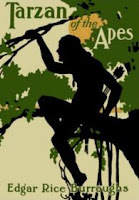 For example, the steaming jungles of the world were first experienced by most white westerners through the gentlemanly but imperialistic gaze of Rudyard Kipling (
The Jungle Book
, 1894) and in the fantastical writings of Tarzan creator, Edgar Rice Burroughs (
Tarzan of the Apes
, 1914), while the snows of the South Pole came to life unforgettably in 1936 in HP Lovecraft’s
At the Mountains of Madness
. Jules Verne meanwhile took us deep into the ocean in
Twenty Thousand Leagues Under the Sea
(1870) and deep underground in
Journey to the Centre of the Earth
(1864).
For example, the steaming jungles of the world were first experienced by most white westerners through the gentlemanly but imperialistic gaze of Rudyard Kipling (
The Jungle Book
, 1894) and in the fantastical writings of Tarzan creator, Edgar Rice Burroughs (
Tarzan of the Apes
, 1914), while the snows of the South Pole came to life unforgettably in 1936 in HP Lovecraft’s
At the Mountains of Madness
. Jules Verne meanwhile took us deep into the ocean in
Twenty Thousand Leagues Under the Sea
(1870) and deep underground in
Journey to the Centre of the Earth
(1864). There were many others of course. H Rider Haggard took us across Africa’s deserts and savannahs in King Solomon’s Mines (1882), while HG Wells took us to the actual Moon in The First Men in the Moon (1900).
Ultimately, of course, all these classics were written long, long ago, when many corners of the world were unknown to western culture and were inhospitable to those not acclimatised. They are much better known now, though that doesn’t mean they’re any less of a challenge. Which is why exotic and dangerous localities still provide excellent backdrops for thrillers if for no other reason than we authors (hopefully to the delight of our readers) can never find it in us to stop dumping trouble and strife on the heads of our intrepid heroes.
Here are a few choice examples (both of the sort of places we are talking about, and the sort of books that tackle them head on) …
ICY TUNDRA ... What could be more inimical to human survival than the most frozen reaches of the world, the sort of places where mere exposure to the air can turn your very eyeballs to lumps of sightless rock?
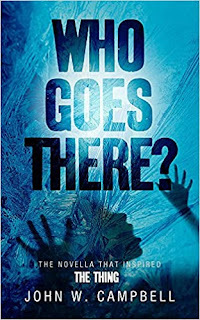 Who Goes There?
Who Goes There? John W Campbell (1938)
The archetypical ‘cold shock’ sci-fi horror thriller, as a bunch of scientists isolated at a research base deep in Antarctica discover what appears to be a flying saucer encased in the ice, and when they try to free it with a thermite charge, uncover the frozen body of an alien creature, which when they unintentionally thaw it out, starts to consume them one by one …
The Terror Dan Simmons (2007)Real-life history meets full-blooded chiller fiction as the Royal Navy’s Captain John Franklin leads explorer vessels HMS Erebus and HMS Terror into the Arctic of 1845, where he must contend with incredible cold, starvation, unshifting pack-ice, mutiny, cannibalism, and most frightening of all, a monstrous and relentless creature unleashed against them by the Inuits …
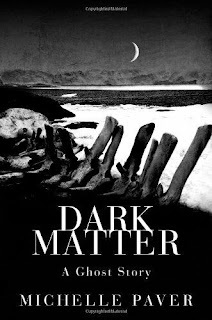 Dark Matter
Dark Matter Michelle Paver (2011)
When in 1937, a band of Oxbridge scholars trek north to an isolated part of the Spitsbergen coast, odd-man-out Jack Miller is determined to prove himself as good as the others. But as illness and injury slowly decimates the party, he never bargained that on reaching their destination, a derelict cabin at the end of a frozen fjord, he’d be facing the Arctic winter alone. Especially as he gradually becomes sure that someone (or something) else is lurking close by …
SWELTERING JUNGLE ... It might look pretty on the David Attenborough films, but no one can seriously pretend that Earth’s equatorial regions aren’t deadly. There are lots of things hidden deep in that lush greenery that can kill you very nastily indeed.
Heart of DarknessJoseph Conrad (1899)
When Marlowe, a British seaman, takes work with an African-based ivory trading company, he is sent inland via steamboat along the Congo River towards the Congo Free State, where he must make contact with a successful but unstable ivory trader called Kurtz. En route, he encounters increasing hardship and savagery, and some of the worst examples of imperialism gone mad …
Dragon of the Mangroves Yasuyuki Kasai (2006)
Fictionalised account of the real life World War II catastrophe when, in 1945, 1,000 Japanese troops, hemmed in by British forces on Burma’s Ramree Island, sought to escape via the inland mangrove swamps and found themselves battling hundreds of gigantic saltwater crocodiles. Only a handful survived, and one of them was Private Minoru Kasuga. This is his story …
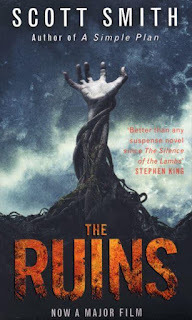 The Ruins
The RuinsScott Smith (2006)
Bored during a slow holiday in Mexico, a bunch of US tourists set off in pursuit of a friend, who took a trip down the Yucatan peninsular to investigate a semi-mythical Mayan ruin. The friends’ journey takes them deep into the rainforest, where they are ambushed by hostile locals, who imprison them in the ghostly ruins, a sacrifice to the man-eating plants that infest it …
BURNING DESERT ... Most humans will die after only two days’ denial of water. Just think about that. Two days. That’s all the time you’d have to find yourself an oasis, never mind deal with whatever other horrors your author creator has heaped on you.
 Blood Meridian
Blood MeridianCormac McCarthy (1985)
In the Texas/Mexican badlands of the late 1840s, a nameless youngster falls in with the real-life Glanton Gang, a mercenary posse who, under the leadership of John Glanton, a military veteran and former Texas Ranger, and the even more frightening Judge Holden, have morphed into a band of ruthless scalp-hunters, who initially kill and torture for money but eventually for fun …
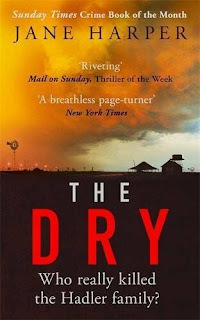 The Dry
The DryJane Harper (2016)
In the sun-scorched Australian outback during the midst of an even more severe drought than usual, a Federal police detective returns to his home town, a place that totally rejected him many years ago, for the funeral of an old friend who allegedly killed himself and his entire family. Once there, however, he finds that the case hasn’t been fully investigated, and thanks to a wall of silence that owes to much more than his personal unpopularity, starts to suspect a web of conspiracy …
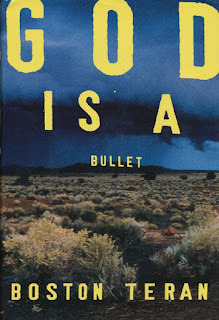 God is a Bullet
God is a BulletBoston Teran (1999)
In the desert of Southern California, a peace-loving desk-cop must throw aside all he holds dear when a gang of drug-dealing Satanist freaks slaughter his ex-wife and kidnap his daughter. Accompanied only by a reformed addict who was once the cult’s sex slave, he sets out into the blistering waste determined that, if he can’t have justice, he’ll at least have revenge …
HARSH WILDERNESS ... The woods, moors and valleys of the temperate zone. Oh so scenic. And so safe, you may think. Except …, no, they aren’t. Just being away from civilisation for a day or so can be a problem for most of us. So how about being far away from it for weeks and weeks?
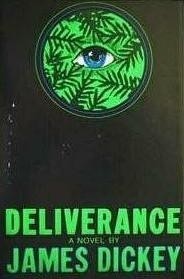 Deliverance
DeliveranceJames Dickey (1970)
When four businessmen take a canoe trip along a backwoods river in deepest Georgia, they initially enjoy the break from the hustle and bustle of city life, though stresses in the group soon cause a rift, mainly because experienced but arrogant outdoor sportsman, Lewis, has automatically assumed leadership. The division gets worse, however, when members of the group are assaulted and stalked by a gang of violent hillbillies …
The Girl Who Loved Tom Gordon
Stephen King (1999)
A nine-year old girl is separated from her unhappy family during a walk in the forest, mistakenly following a river, thinking that will take her back home. While her loved ones and the police search frantically, she draws farther and farther away, exposed to all the elements and gradually retreating into a hallucinogenic fantasy world wherein both good and evil characters abound …
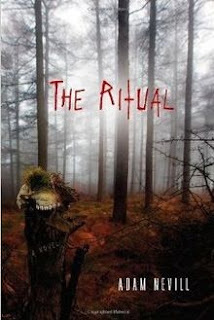 The Ritual
The RitualAdam Nevill (2011)
When a bunch of old uni mates reunite for a walking holiday in the North Swedish woods, they find they have grown apart, falling out over the least little thing, including which footpaths they should take. As such, they get lost, inadvertently wandering into a dark, pagan world, and finding themselves hunted by a creature from their very worst nightmares …
DEEP OCEAN ... The intense pressure of a deep water environment starts causing physical stress to the human body at roughly 10 feet down. And yet the deepest ranges of the ocean are 36,000 feet and counting! And then there is the bizarre array of animal life that dwells there ... along with other more nameless things.
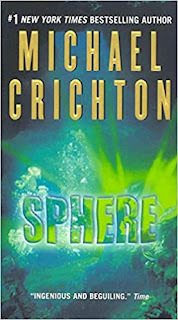 Sphere
SphereMichael Crichton (1987)
American scientists assemble at sea when probes discover a colossal spacecraft lying on the abyssal floor of the South Pacific ocean, having apparently landed there over 300 years ago. The journey to the bottom of the sea is difficult enough, even though a deep ocean habitat has been prepared, but from there the mystery increases, the vessel displaying lettering written in English …
GoliathSteve Alten (2002)
When the US fleet is destroyed by Goliath, a super-tech battle platform, which attacks from underneath, the world convulses. An American design now in the hands of terrorists, Goliath then takes refuge in teh deep sea. But it isn’t the madman in charge whom the US spec ops must somehow oust, it’s Goliath’s nano-brain, which is already learning the art of war for itself …
 Deep Storm
Deep Storm Lincoln Child (2007)
A navy doctor is summoned to a North Atlantic oil rig to treat bizarre psychotic symptoms afflicting the staff. But when he learns the rig is only the surface feature of a major scientific installation, Deep Storm, the bulk of which lies far below, he journeys into the depths. And is stunned to find the team working on the ruins of an undersea city, which may even be Atlantis …
MOUNTAINS HIGH ... Soaring peaks, frozen rocky ridges, thin air, lowering cloud. Don’t go up into the mountains if you don’t know what you’re doing. Because ten to one you won’t come down again.
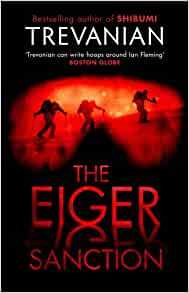 The Eiger Sanction
The Eiger SanctionTrevanian (1972)
Hemlock, an ex-commando and skilled mountaineer who doubles as a counter-assassin for the CIA, specifically targetting threats to the USA, is put on the trail of a kill-team hunting American agents. One of the shooters is ‘sanctioned’ easily, but the second joins a team planning to climb the north face of the Eiger. Hemlock has no choice but to join the climb too …
The HungerAlma Katsu (2018)
An effectively fictionalised account of the fate of the Donner Party, a group of pioneers who in 1846 attempted to cross the Sierra Nevada mountain range, encountering multiple disasters and finally falling into cannibalism to survive. In this version of the tragic tale, horror follows horror, with witchcraft suspected as the root of the evil and a supernatural menace waiting just ahead …
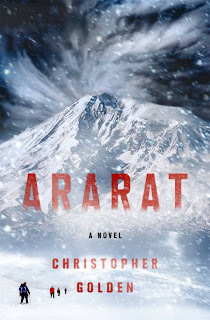 AraratChristopher Golden (2017)
AraratChristopher Golden (2017) An avalanche on Turkey’s Mount Ararat opens the entrance to a cave, which turns out to be the hold of a gigantic boat long buried under rock and ice. Archaeologists are thrilled, assuming that the remains of Noah’s legendary Ark have at last been found. An international team braves horrific weather to get there, but once inside, they uncover much more terrifying relics …
UNDER THE EARTH ... from the ‘Hollow Earth’ theory to the ‘Well to Hell’ hoax, mankind has long refused to believe that the underworld is empty. And with good reason. So many legends tell us there are things down there. And few of them are pleasant.
 The Descent
The DescentJeff Long (1999)
A series of gruesome clues leads investigators under the Earth into a global labyrinth of unknown tunnels and caves, where they expect to find the wealth of the ages, though instead they discover the existence of another race, entirely different from mankind, hostile to all intrusion and aggressively resistant to sharing the secret and forbidden knowledge they guard …
The Luminous DeadCaitlin Starling (2019)
A tour de force of confinement paranoia as a female adventurer lies her way onto an expedition to map mineral deposits deep in an off-world cave system, only to find herself alone and enclosed in a bio-mechanical suit under the command of a heartless controller whose prime concern is the mission. At the same time, inevitably, something else is down there …
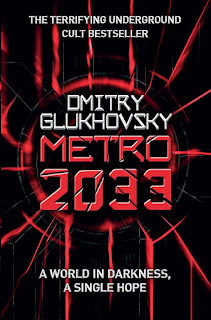 Metro 2033
Metro 2033Dmiktry Glukhovskhy (2011)
In a post-nuclear future, the inhabitants of Moscow live in clan-like enclaves in the complex maze of the city’s great underground system. With the surface world no longer viable, the space below is at a premium, which leads to regular violent conflict. But now a new threat emerges, which if the survivors don’t unite in order to fight it together, will end the story for all of them …
OUTER SPACE ... No space opera here. No voyages where no man has gone before. The plain brutal reality of what travel into the star-spangled void actually means, especially when there’s some kind of horrendous crisis to deal with.
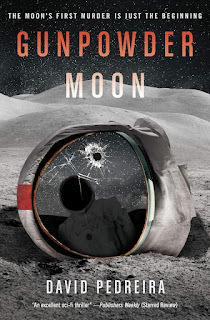 Gunpowder Moon
Gunpowder MoonDavid Pedreira (2018)
2072, the Sea of Serenity. The boss of a lunar mining facility, charged with producing adequate material to fuel the fusion reactors vital for Earth’s survival, must hold it together when a bomb kills one of his engineers. He’s well aware that political intrigue surrounds the base, while he’s also sitting on a powder keg of worker discontent. And now he has the first ever murder in Outer Space to solve …
Project Hail MaryAndy Weir (2021)
An astronaut awakens from prolonged unconsciousness on a small vessel heading into deep space, with only corpses for company. Something’s clearly gone wrong, as not only are his friends dead, his memory has been wiped. He has no clue who he is or why he’s here … except for vague, fuzzy recollections about some kind of mission to save mankind ...
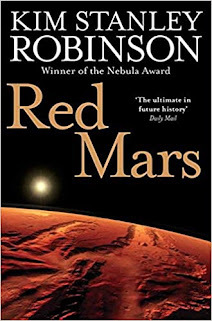 Red MarsKim Stanley Robinson (1993)
Red MarsKim Stanley Robinson (1993) The first in the author’s masterly ‘Mars’ trilogy and the first attempt by any fiction writer to seriously assess the complexities involved in terra-forming the Red Planet, not just the scientific and logistical impossibilities, but the political fall-out of any such plan, and the intense stresses and potentially fatal divisions forming even among the heroic colonists charged with the duty …
URBAN HELLSCAPE ... Dark streets, blind alleys, rotting tenements. We know these districts well and avoid them like the plague if we can. But what if we can’t? What if we work there, or even worse, must live there? Don’t dismiss the idea. Someone has to.
 The WarriorsSol Yurick (1965)
The WarriorsSol Yurick (1965)The original novel behind the movie, in which a Brooklyn street-gang attend a pow-wow in the Bronx, only to see their host assassinated, and then, unfairly blamed, must flee back the entire length of New York, fighting off challenges from many rival gangs. Unlike the movie, the novel examines gang culture deeply and delves into the tortured lives of its many protagonists, who are mostly portrayed as troubled teens rather than heroes with film star looks …
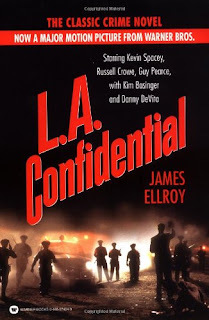
LA Confidential
James Ellroy (1990)
LA in the 1950s, as viewed through the all-seeing eye of scandal mag, Hush-Hush. It’s a sordid realm of racketeering, pornography, prostitution, murder and police and political corruption. Against this seething background, three cops gradually come together in their quest to tackle a massive and vicious conspiracy. Ultra bleak portrait of a world minus morality …
2666Roberto Bolano (2004)
A quest to track down a reclusive author leads a group of journalists to the dingy desert city of Santa Teresa, which sits on the Mexican/Texas border, but where most of the population live in poverty and labour in appalling sweatshops. At the same time, women are being murdered in astonishing numbers. Bolano’s epic, angst-ridden assessment of the Ciudad Juárez tragedy …
And now, just for the sake of having something completely and radically different:
COSY ENGLISH VILLAGE ... Hardly an extreme environment. I’m only adding this section for a laugh, you assume. Everyone loves village green communities. Nothing bad ever happens there. You reckon? …
 The Midwich Cuckoos
The Midwich CuckoosJohn Wyndham (1957)
When a Wiltshire village is briefly cut off by an unknown unconsciousness-causing agent, all the women of child-bearing age are impregnated through a bizarre form of xenogenesis. As such, 31 children are born who are virtually identical to each other, blonde-haired, golden-eyed and telepathically connected. They clearly aren’t human; nor are they especially friendly …
The Murder at the VicarageAgatha Christie (1930)
No list of cosy rural thrillers could ignore this first appearance in a novel by spinster detective Miss Marple, who investigates a churchwarden’s murder in her village of St Mary Mead. It isn’t long before our heroine has narrowed the suspect list down to seven candidates. Not the first village green whodunnit, but perhaps the most quintessential …
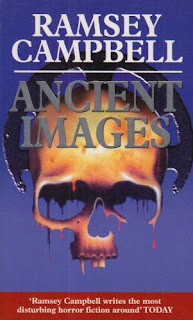 Ancient Images
Ancient ImagesRamsey Campbell (1989)
Movie fanatic and talented film editor Sandy goes in search of The Tower of Fear, a mythical British horror film of the 1940s, which, though it allegedly starred Boris Karloff and Bela Lugosi, is now long lost, with curious rumours holding that strange events happened on set and that many of those connected to the film came to untimely ends. Increasingly stalked by unknown, scarecrow-like entities, Sandy’s search finally takes her to the deceptively benign village of Redfield …
***
THRILLERS, CHILLERS, SHOCKERS AND KILLERS …
An ongoing series of reviews of dark fiction (crime, thriller, horror and sci-fi) – both old and new – that I have recently read and enjoyed. I’ll endeavour to keep the SPOILERS to a minimum; there will certainly be no given-away denouements or exposed twists-in-the-tail, but by the definition of the word ‘review’, I’m going to be talking about these books in more than just thumbnail detail, extolling the aspects that I particularly enjoyed (I’ll outline the plot first, and follow it with my opinions) … so I guess if you’d rather not know anything at all about these pieces of work in advance of reading them yourself, then these particular posts will not be your thing.
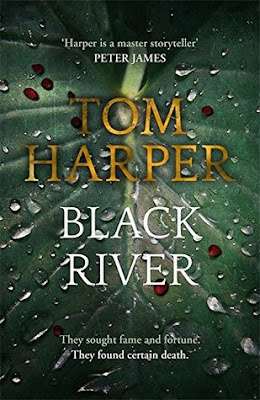 BLACK RIVER
by Tom Harper (2015)
BLACK RIVER
by Tom Harper (2015)
Outline
Middle-class Scottish doctor Kel MacDonald is bored with comfy holidays. Though he has a wife and young daughter to think about and a responsible position as a senior consultant at a London hospital, he increasingly finds trips to luxurious resorts unchallenging, considering everything too safe and pristine. As such, during a visit to Mexico, and a day-trip to an isolated Mayan cave complex, where the bones of sacrificial victims can be viewed at the bottom of a deep underwater grotto, Kel takes it on himself to make a ill-advised dive – and immediately gets into trouble. However, on the verge of drowning, he is saved by an athletic young American called Anton and his beautiful and intelligent girlfriend, Drew.
Later, Kel learns that Anton and Drew are professional adventurers, the former forever seeking funds to make new exploratory missions into remote and dangerous corners of the world, many of them as yet undiscovered. Their next trip, which is already past the planning stage, will take them far into the Peruvian Amazon, where they hope to locate Paititi, the fabled lost city of the Incas. Often referred to mistakenly as ‘El Dorado’, Paititi is believed to be a real location, the Incas’ last redoubt as they fled from the Conquistadors, and the final resting place of their nation’s vast wealth. Though abandoned now and overgrown for centuries by the jungle, it is sought continually by the world’s treasure-hunters, but still, in the whole of history, has only ever been seen by one or two westerners.
Kel is desperate to accompany Anton and Drew, but they initially resist his involvement until they learn that he is a doctor. The mission, thus far, is lacking medical expertise, and so, all of a sudden, Kel is invited along. His wife, Cate, doesn’t like the idea, but he is deadset on going.
However, his first reality checks arrive before he even sets off, Cate drawing his attention to several past expeditions to find Paititi that ended in disaster, some of them wiped out by wild Indians, others simply vanishing into the unexplored realm, none of their participants ever heard from again. The most recent, the Menendez Expedition, was a medical mission, but this too disappeared into the depths of the Peruvian jungle, never to re-emerge, and this catastrophe occurred only six months previously.
The next shock to Kel’s ‘wealthy white westerner’ system comes when he actually arrives in South America. The journey in-country from Lima to the expedition’s unofficial base camp of Puerto Tordoya is long, difficult and exhausting, the quality of the facilities deteriorating the further inland he travels. When he arrives at Tordoya, he finds it a tangle of dirt streets and shacks. No one he meets is especially friendly, particularly not the local police, who immediately have the air of violence and corruption about them.
Even his fellow explorers are a motley crew. Drew and Anton are as welcoming as they were before (Drew seems even more alluring now that Cate is not present), but there is also Tillman, Anton’s enforcer and a guy cut from the roughest cloth imaginable, Howie, who’s even more a fish out of water than Kel, but has the air of wealth and possesses several bags that no one may look inside, and Fabio, their official guide, who evidently knows his stuff but is vaguely untrustworthy. Already it is dawning on Kel that he isn’t here for anything that might resemble a holiday, Tillman spending their first night antagonising a gang of local criminals while haggling to buy guns, and Kel and Nolberto, the expedition’s cook, caught up in a drive-by shooting, the latter severely wounded and subsequently needing to be replaced by the taciturn Zia, who is connected in some way to the ill-fated Menendez expedition but says little and displays constant hostility to everyone.
When the voyage upriver gets underway, the conditions in the boat are extremely primitive, but Kel remains excited. This is everything he’s ever dreamed of, the rainforest exactly the way he imagined it: dense, steamy, filled with the cries of mysterious animals and birds. For all the very real dangers that he is continually reminded lie just ahead, he considers that at last he is really living.
Kel MacDonald is a doctor, of course. So, he’s seen death and agony up close many times. Which is a good thing. Because in due course he’s going to be seeing it all over again, this time in abundance …
Review
I was first drawn to reading Black River because I’m a sucker for adventure stories, particularly those set in exotic and dangerous locations. As a youngster, growing up on classic movies like Green Hell and reading books like Tarzan of the Apes and The Lost World, I was captivated by tales of derring-do in untamed lands where Europeans had rarely ventured before and were exposed to everything from cannibals to volcanoes to dinosaurs.
Well, Black River doesn’t go quite as far as any of those, set firmly in the 21st century. Tom Harper is a fine exponent of the modern-day adventure novel, but that’s the key phrase here: ‘modern-day’. Though Kel MacDonald and co end up hacking their way through an equatorial jungle in order to find a fabled lost city, the skies overhead are often crisscrossed by American predator drones on the lookout for drugs traffickers. Though we learn at an early stage that wild Indians may pose a threat, we are informed in no uncertain terms that the natives of this gorgeous land are usually the victims when outsiders arrive; there is much illegal logging, deforestation and pollution, while simple and even friendly contact with the outside world can lead to deadly pandemics among tribes who are out of reach of routine health care. In Black River, our bold band are more likely to die from the machine guns of narcos, bandits or terrorist guerrillas than the blowpipe darts of unknown peoples.
There are wild animals of course. Some of the wildest imaginable in this perilous place: jaguars, alligators, 30-foot anacondas. But in Black River, as in the real world, the wild animals are mostly frightened of human intruders (though they do pose a danger, and a memorable one at that in certain parts of this novel). Of course, some things about jungle adventures will never change: the stultifying heat and humidity, the poisonous plants, the swarms of biting insects, the torrential downpours that can cause flash-flooding, the vast, intractable nature of a primeval landscape, which, once you’re out in the middle of it, if you lose your kit – and you can guarantee this will happen at some point – will quickly become the most inhospitable place on Earth, and where rescuers are concerned, the most unreachable.
All that and more is crammed into Black River’seminently readable 338 pages, as well as an excellent, pulse-pounding storyline, which twists and turns like the Amazon itself as Kel Macdonald, the ultimate innocent abroad, faces ever-mounting (sometimes near impossible) hardships.
The idea of pitching an ordinary man into this crucible of pain and endurance was a stroke of genius by Tom Harper. Kel might be an accomplished doctor, but out there in the impenetrable forest none of that really means anything. He’s a reasonably fit guy, but he’s no athlete and that in itself becomes a problem as he must dig deeper and deeper just to withstand the elements, never mind to keep forging on against soul-destroying odds. None of which is helped by the shifting pattern of alliances within the group itself, Kel never sure whom to trust as the motivations of his colleagues become progressively more mysterious.
The final third of the book is a particularly vivid piece of writing by Harper. I won’t go into the details for fear of spoiling it, but put it this way: it’s a modern man reduced to his most basic level in his battle to survive a primordial world, and it’s all done so intensely and utterly believably that you find yourself hanging on every page. I wasn’t surprised to learn that Tom Harper has visited the Amazon personally, because this novel, while a great feat of action-adventure imagination, is also a lesson in how to perfectly recreate a unique environment on the written page.
I’ve seen other reviews that have taken issue with the lesser characters, calling them a mixed bag, not convinced they’re all as well-drawn as they might be. It’s certainly the case that nearly all of them lack the depth of Kel MacDonald (who is not just a hero; he makes some bad mistakes and shows very poor judgement at times!), but none of that mattered to me because as the narrative progresses, it picks up so much pace and plunges its participants through so many horrors, pitting them against each other constantly, that it literally flowed by. In addition to that, I never felt that any of the other characters were invisible to me, and this is especially the case later on when their individual agendas are laid bare.
Black River is not an old-fashioned novel, even at first glance when it might sound like it: yes, it concerns white westerners hacking through unexplored jungles; yes, they are seeking a lost city of gold; yes, they are mostly greedy and amoral. But this is not the colonial age; this book is very much of the now, its issues and subtext scrupulously updated to the 21st century.
Tom Harper has here given us a thoroughly grown-up actioner, which shouldn’t just entertain those with a specific interest in this kind of adventure fiction, but ought to appeal to all thriller fans in general. As always, Man is the main adversary of Man. Only, on this occasion, it’s happening in one of the most fascinating and farthest flung places on Earth.
And as usual, I’m now going to try and cast this beast. I don’t know if it’s been optioned for movie or TV development, but it definitely should be. In case that happens, but just for a bit of fun, here is my opinion on who should play who.
Kel – Hans MathesonAnton – Daniel Webber
Drew – Dakota Johnson
Tillman – Wes Chatham
Zia – Mia Maestro
Fabio – Yancey Arias
Howie – Domhnall Gleeson
June 24, 2021
Carquake! How to write high-speed action!

This week I’m going to be talking car chases. Not real ones of course. Fictional ones.
It’s mainly in response to a question that was put to me recently by a good friend and fellow writer: How do you write a car chase sequence?I can only describe my own method. Whether it works or doesn’t is a decision that rests with my readers.
In addition this week, because we’re essentially talking action-thrillers, I’ll be reviewing and discussing US author Boston Terran’s ultra-compelling combo of crime, horror and gut-thumping action, GOD IS A BULLET.
If you fancy seeing the most fiendish elements in society – Satanist / rapist / mass murdering drug-dealers, no less – dealt with in the harshest way possible, this one could definitely be for you.
You’ll find that review, as always, at the lower end of today’s blog, in the Thrillers, Chillers section. Scroll straight down there if you wish. However, if you want to know how to compose an on-page car chase first, perhaps hang around a tad and we’ll discuss …
Run, rabbit, run
‘Heck!’ she all but shouted. ‘You know we have rules up here about police pursuits?’ ‘I have a rule too … I pursue the bastards till I catch them.’
A brief extract from my sixth Mark Heckenburg novel, ASHES TO ASHES . It’s taken out of context here because, despite appearances, it doesn’t mean that Heck will always engage in wildly reckless car chases. It actually means that he’ll never stop investigating until certain crimes are solved. But I guess it does sit comfortably with today’s theme.
 And it’s not as if characters in my books have not indulged in high-speed pursuits. The chase sequence in
HUNTED
, which occurs after an armed robbery in South London, was described by a review in one of the tabloids as ‘the mother of all car chases’ … which was very nice.
And it’s not as if characters in my books have not indulged in high-speed pursuits. The chase sequence in
HUNTED
, which occurs after an armed robbery in South London, was described by a review in one of the tabloids as ‘the mother of all car chases’ … which was very nice.There is also an extensive pursuit sequence in the non-Heck novel, ONE EYE OPEN , this time across the Suffolk countryside on a deep-frozen Christmas Eve. Again, I’m pleased to say that it attracted some positive commentary online.
But the question still stands. How do you go about composing a car chase on the written page, and making it exciting but also believable?
Well, the car chase as an entity has been nailed multiple times by Hollywood, but two occasions in particular stand out over all the others. And it might be instructive to look at them.
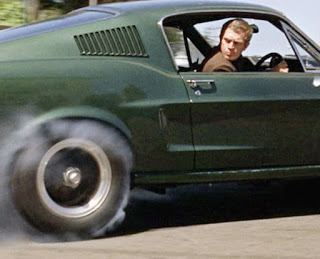 In 1968, Steve McQueen played San Francisco cop, Frank Bullitt (in the movie of the same name,
Bullitt
), whose incredible pursuit of two Mafia hitmen took in just about every scenic spot on the Frisco tourist trail and left cinema audiences agog as they’d literally never seen anything like it before.
In 1968, Steve McQueen played San Francisco cop, Frank Bullitt (in the movie of the same name,
Bullitt
), whose incredible pursuit of two Mafia hitmen took in just about every scenic spot on the Frisco tourist trail and left cinema audiences agog as they’d literally never seen anything like it before. 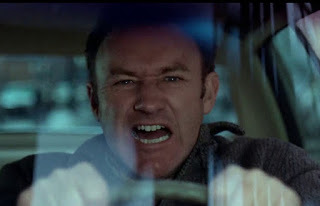 But it was topped three years later in 1971’s
The French Connection
, when Gene Hackman, played Detective Jimmy ‘Popeye’ Doyle, a New York narcotics cop out to thwart a major international drugs deal. The scene in which he chases a hijacked train into the heart of the city is one of the most eye-popping I’ve ever seen. It’s a staggering feat of action movie-making for which the term ‘high octane’ could actually have been invented.
But it was topped three years later in 1971’s
The French Connection
, when Gene Hackman, played Detective Jimmy ‘Popeye’ Doyle, a New York narcotics cop out to thwart a major international drugs deal. The scene in which he chases a hijacked train into the heart of the city is one of the most eye-popping I’ve ever seen. It’s a staggering feat of action movie-making for which the term ‘high octane’ could actually have been invented.Of course, in both the above cases, they have the advantage of being all about the visual (and of having Peter Yates and William Friedkin respectively at the directorial helms), though as prose writers, there are definitely things we can learn from these two sequences.
Before we get onto that, a caveat for those writing in the 21st century.
It’s important to remember that both these movies were made at a time when rebels were in vogue. Even the cops were buccaneering bad boys, earning cheers from the cinema-going public and only mild censure from their bosses no matter how much of a risk their antics posed to everyday citizens.
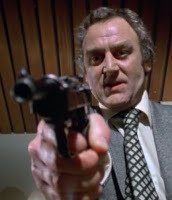 And British screen cops aped their American counterparts well into the 1970s.
The Sweeney
, one of our paciest homegrown crime shows, gave us heroes who were hardworking detectives but also violent, heavy-drinking chauvinists who regularly indulged in car chase sequences that were virtual demolition derbies. I remember one classic episode in which a Rolls Royce got smashed to pieces.
And British screen cops aped their American counterparts well into the 1970s.
The Sweeney
, one of our paciest homegrown crime shows, gave us heroes who were hardworking detectives but also violent, heavy-drinking chauvinists who regularly indulged in car chase sequences that were virtual demolition derbies. I remember one classic episode in which a Rolls Royce got smashed to pieces. 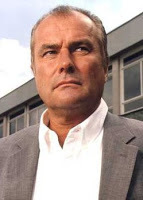 When I was writing for
The Bill
in the late 1990s / early 2000s, the cops were better behaved, but we still loved our ruthless heroes and our all-out action scenes. In fact, the only thing limiting fast pursuits was each episode’s budget for stunt drivers and spare cars.
When I was writing for
The Bill
in the late 1990s / early 2000s, the cops were better behaved, but we still loved our ruthless heroes and our all-out action scenes. In fact, the only thing limiting fast pursuits was each episode’s budget for stunt drivers and spare cars.But times have changed firmly since then, in reality as well as on-screen.
In the 21st century, we are a lot more po-faced (quite rightly) about what might constitute reckless police activity. Even in the 1980s, when I was a serving officer myself, chases did happen, but it was more a case by then of keeping tabs on the offending vehicle rather than trying to run it off the road. Staying in touch with it until it either ran out of petrol, crashed, or the offender reached his/her destination (though even then it could get pretty hairy and involve very high speeds).
It’s much the same thing now, in the UK certainly. However, writers seeking action shouldn’t despair. Hard-stops sometimes need to happen. Perhaps in the event of an offender driving like a total maniac and leaving a trail of carnage, or someone being held captive in his/her vehicle, or if intel indicates that he/she is en route to kill someone or maybe deliver vital information to a high-level suspect. In those cases, tailing police cars may have no option but to try and pull the target vehicle over.
So, never fear. There are still reasons to put your fictional heroes and heroines into police cars and send them at speed after the bad guys.
And this is how you do it …
Reality or legend?
Having partaken in real high-speed pursuits, I can assure you that it’s a very different experience from the one you see on the big screen.
Think of it in terms of reality as oppose to legend.
As a police pursuit driver, you tend to be focussed on three things primarily: a) the vehicle you are following; b) your own driving (even when you’re only seeking to stay in touch with the target, you’ll be called on to do extreme things, but you’ve got to ensure that this doesn’t entail too much law-breaking on your part and more important still, that you don’t cause damage either to people or property); and c) messaging, because no police pursuit is ever successfully concluded when it’s one on one – you’ll need to maintain constant communication with other units and with your Comms Suite or CAD (Computer-aided dispatch) office.
So there are the basic authenticity boxes that you need to tick. They are mainly about responsibility and needless to say, do NOT include taking short cuts down flights of steps, along sewers, across crowded markets and so forth.
However, this can’t be the whole story. Because the reading public are also the viewing public and they think they’ll know about car chases from seeing films, and they’ll expect a lot more from you. So you’re going to have to throw in some of the legend as well. And that’s where we refer back to our two classic movies, Bullitt and The French Connection , both of whose seminal car chase sequences were assaults on the senses.
Sensory overload
Just consider what that means literally.
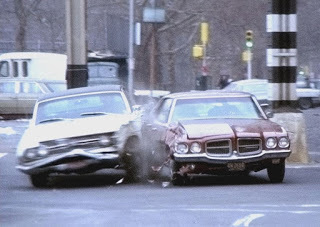 Sound …
Sound …Engines cranked to the max, whining with such protracted intensity you’re sure the gaskets are going to burst. Tyres screeching when you swing around bends so fiercely that the rubber shreds from the ply-cord. Gears crunching abominably. Those endless collisions you aren’t supposed to have: with traffic cones and waste-bins and ‘Keep Left’ signs and – yes, it can happen – with other vehicles too, which means thunderous, explosive impacts, bodywork crumpling, glass shattering.
And this is only scraping the surface, as I’m sure you’ll realise.
Touch …
Well, this is one of two advantages we have over the William Friedkins and Peter Yateses of the world. Our audience can actually feel what’s going on. Again, think about it. The pressure of your nerves strained to breaking point, your whole body numb, your forehead pounding. The sweat seething down your body, the gearstick and steering wheel greasy as hell. You’re also going to feel that glass when it showers in on you in a billion fragments. It’s safety-glass these days, so it’s not going to slice you into slivers, but you always wonder when it first happens. And you’re still going to get hurt in other ways. Your torso wrenching and twisting as you’re thrown violently back and forth in your seatbelt. Being knocked dizzy as you bounce up and down, your cranium impacting on the car ceiling, and knocked sick as your backside impacts on the thinly-cushioned steel under-structure of your seat.
It’s only in your head, of course, this torture ride. It’s not actually happening. But if you do your job properly, your readers will still feel battered and bruised by the end.
Smell …
Our second advantage over the cinema audience. Because we can smell it too. The melting rubber, the overcooked engine, the stink of sweat, of petrol, of an air conditioning unit gone kaput and reeking like rotten fish, the choking fog of exhaust from the car in front as it pours through your broken windshield, the foulness of spattering rubbish as bins go flying.
And last but not least, of course …
 Vision …
Vision …This one takes us into the most familiar territory of all, and this is where we simply must take lessons from those great movies we keep citing.
Of course, those films had the advantage of multiple camera angles and visual perspectives, whereas we, as prose writers, only really have two: the interior of the car, and the exterior. But believe me, that’s adequate. And in my view, to really get the best out of this sequence, you need more of the former and less of the latter.
Allow me to explain.
You can easily describe two cars as they chase each other. In effect, telling your readers what happens blow by blow in straightforward fashion. Which corners they spin around, which level crossings they chance. This can certainly suffice, but if you take this route, you’re denuding yourself of all those other plusses we’ve already discussed.
The sensory overload isn’t going to happen.
However, if you go from the perspective of the driver (or his front seat passenger), which they did a lot of in Bullitt and The French Connection , you are literally turning it into a funfair ride, your heroes encased in this metal box, travelling at breakneck speed, the world whipping by in a blur, all sorts of obstacles coming at them at a hundred miles an hour.
‘All right,’ you say. ‘I see that. But we still have to know what’s going on. We have to witness the chase from a grander viewpoint.’
Okay, well there’s no reason why you can’t do a bit of that if you’ve got other characters involved in the sequence who are not engaged in the chase. But in my view, the personal experience is the more immersive one. This is the one that has your reader cringing, flinching, even ducking for safety, because if you can really get under the skin of this, he’s literally in the car with you.
Location location location
You may think that choosing whereabouts to locate your hot pursuit is not hugely important. And I’d agree that it isn’t essential. There’s no reason why your chase can’t just take place along nondescript streets that suit your situation. The time of year doesn’t always matter that much either. In fact it can get in the way if all you want is a straightforward pursuit with no variations on the main theme.
But consider this: every conceivable environment offers its own advantages to the writer.
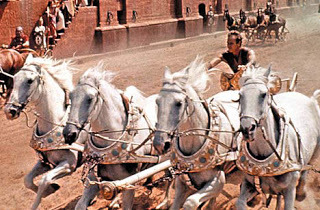 Which was the better chariot race, 1959’s
Ben Hur
or 1964’s
Fall of the Roman Empire
?
Which was the better chariot race, 1959’s
Ben Hur
or 1964’s
Fall of the Roman Empire
? The former took place in the sun-baked racing arena at Antioch, the latter through a German forest in midwinter. The jury’s out and is likely to remain so, because each in its own way is a spectacular thrill-ride, and each works its unique environment for everything it can. And let’s be honest, returning to the modern age, hasn’t 007 indulged in turbocharged chase sequences on just about every landscape imaginable? And they’re all pretty interchangeable in terms of how exhilarating they are for the viewer.
Therefore, for all that in action scenes like this, where pace is everything (so you use the shortest sentences possible, you avoid thought processes and keep the descriptive work to a minimum!), I firmly believe that adding splashes of this kind of background colour can enrich the scenario.
For example, if your chase is taking place in an urban setting, make sure your readers see the pedestrians scuttling out of the way, make sure they hear other cars slamming on, shunting each other or skidding sideways through crowded intersections. Ensure the engines reverberate deafeningly as they tear through tunnels and subways. Underline the claustrophobic atmosphere of narrow alleyways, sheer brick walls standing only inches to either side of the speeding vehicle, buildings towering to giddy heights overhead.
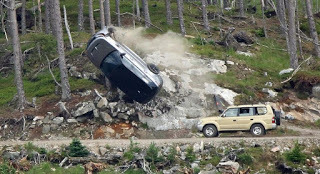 If it happens in a rural setting, of course, it’s different again. Out in the sticks, there are many more open roads. You can even go off-road, and that throws up a whole new level of opportunity. Thinly spread woods, so that your hero needs to slalom between the trees. Rolling, undulating moors to jolt and bounce (and flip!) across. Even gentle, quilt-work farmland can hit your readers with kaleidoscopic visuals: animals milling about in crazy, panicked confusion, fences collapsing as you rocket through them, tangling your wheels in barbed wire, riddling your driver’s flesh with flying splinters.
If it happens in a rural setting, of course, it’s different again. Out in the sticks, there are many more open roads. You can even go off-road, and that throws up a whole new level of opportunity. Thinly spread woods, so that your hero needs to slalom between the trees. Rolling, undulating moors to jolt and bounce (and flip!) across. Even gentle, quilt-work farmland can hit your readers with kaleidoscopic visuals: animals milling about in crazy, panicked confusion, fences collapsing as you rocket through them, tangling your wheels in barbed wire, riddling your driver’s flesh with flying splinters.See what I mean? It’s limitless.
And if background colour doesn’t round your chase sequence off sufficiently, how about adding some local colour too?
Down our street
In my view there’s always a risk using real life locations in thriller fiction. Mainly because some of your readers might actually live there and could get jumpy seeing their own roads and parks earmarked for annihilation. My policy is to go half and half.
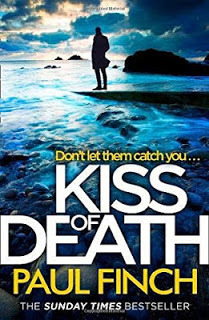 I love using real counties and real towns. But if I’m going to turn a quiet suburb into a war zone, as in
STOLEN
, or shoot up a pub as in
KISS OF DEATH
, I tend to make that part of the landscape fictional. The idea is to excite my readers, not upset them. However, I have occasionally made exceptions to this rule. I’ve found (to my delight, I must admit) that when it comes to chases, either on foot or by vehicle, readers seem to respond positively if they recognise the route.
I love using real counties and real towns. But if I’m going to turn a quiet suburb into a war zone, as in
STOLEN
, or shoot up a pub as in
KISS OF DEATH
, I tend to make that part of the landscape fictional. The idea is to excite my readers, not upset them. However, I have occasionally made exceptions to this rule. I’ve found (to my delight, I must admit) that when it comes to chases, either on foot or by vehicle, readers seem to respond positively if they recognise the route.I remember a very pleasing post on Amazon, in response to a pursuit across Greater Manchester in SACRIFICE , which said, and I quote directly: ‘It’s really great. They’ve just gone past the end of our street’.
Of course, if you go for the real life route, it tends to involve a bit more work than if it’s all fictional. I’ll use my own favourite chase sequence to date (that ‘mother of them all’ I mentioned before), as an example.
It was in HUNTED . It occurred after a pub robbery, and it saw DS Mark Heckenburg climb aboard the rear of a hijacked lorry as it sped from the scene, with a single police officer, his occasional sidekick, DC Gail Honeyford, pursuing alone in a CID car. The robbery happened in South London, and as this was going to be the climactic action sequence in the first half of the book, I chose to go at it all bells and whistles.
 I decided that the pursuit would commence in Catford and finish at the mouth of the Blackwall Tunnel,
I decided that the pursuit would commence in Catford and finish at the mouth of the Blackwall Tunnel,five miles away.
But this wasn’t going to be straightforward. Though I’d lived in that part of the capital for three years, my geographic memory had faded somewhat, plus the London landscape had changed dramatically, and this was long before Google Maps.
I was still plotting the possible route between these two points when I had a huge stroke of fortune. I was at a police function, where my wife and I got into a chat with two Metropolitan Police officers. The subject of my next book, and the proposed car chase, came up, and it turned out that both these guys were London Traffic. At their suggestion, we went to a side room, a map was produced and the ‘best route for a chase’ (i.e. the route that would cause maximum thrills and spills) was revealed to me.
I’ve always been indebted to these two officers, though they both made it quite clear that they would not appreciate it if I ever named them. But it was a fantastic bonus for me. A week later, I was in London and I drove the route, just to be sure that it was as I imagined it. And it really couldn’t have worked out better. Everything was where I needed it to be.
(I was lucky on this occasion, of course, but this hopefully shows the level of research you need to do to create effective high-speed action in real-life locations).
A few days later, I’d completed the scene, which was complex for all the reasons I’ve given so far, and which then had to be judiciously cut (I say it again, pace is everything!). After two weeks’ work, I had the finished article, but I was rather surprised to see that it was only two pages in length. But listen … we mentioned The French Connection when we started this thing today, and I’m going to mention it again now. Because in TFC it took William Friedkin six weeks to film that epic chase sequence, and it occupied only six minutes of film. In that regard, two weeks for two pages felt as if it was somehow preordained.
Ultimately, as with all these things, your car chase sequence, if you opt to include one, is going to take whatever form you wish it to. Nothing here is set in stone. This is purely my advisory guide, something I apply to my own writing, which wouldn’t necessarily work in yours.
But a good friend asked. So, this is my honest response.
If you go along with it, all well and good. If not, no problem.
Either way, happy (fictional) fast driving.
THRILLERS, CHILLERS, SHOCKERS AND KILLERS …
An ongoing series of reviews of dark fiction (crime, thriller, horror and sci-fi) – both old and new – that I have recently read and enjoyed. I’ll endeavour to keep the SPOILERS to a minimum; there will certainly be no given-away denouements or exposed twists-in-the-tail, but by the definition of the word ‘review’, I’m going to be talking about these books in more than just thumbnail detail, extolling the aspects that I particularly enjoyed (I’ll outline the plot first, and follow it with my opinions) … so I guess if you’d rather not know anything at all about these pieces of work in advance of reading them yourself, then these particular posts will not be your thing.
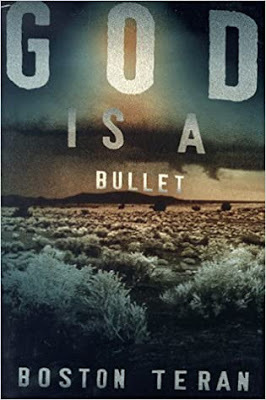 GOD IS A BULLET
by Boston Teran (1999)
GOD IS A BULLET
by Boston Teran (1999)Outline
Death Valley. The Salton Sea. El Centro.Evocative names from the sun-scorched badlands of California’s deepest south, a picture postcard landscape of barren cliffs, dry scrubthorn, parched desert and windblown clapboard towns, and, in this novel, weird drifters, gun-toting drug dealers and roving Satanist death-cults who scatter corpses behind them the way the rest of us leave litter.
However, before God is a Bullet really kicks off, we roll back the years to 1970, and the brutal murder of an elderly woman in an isolated caravan on the appropriately named Furnace Creek. Investigating cops have nothing much to go on except that signs of cult activity are found in the area, while Cyrus, a strange and troubled homeless boy whom the victim adopted when he was young, and who is now 17 years old, has mysteriously vanished.
Did the disturbed kid do it? If so, why? And will he commit similar crimes elsewhere? Only time will tell.
And it does.
Moving forward now to the Christmas of 1996, we’re in the small California town of Clay, where clean-living desk cop, Bob Hightower, makes a festive call at the semi-rural home of his ex-wife and beloved daughter, and is appalled to find their pleasant house ransacked, his ex and her new husband slaughtered alongside their dogs and horses, and his daughter, Gabi, missing.
Bob hasn’t seen much action in recent years and so can’t get officially involved, but his captain, John Lee Bacon, a seedy and strangely obstructive figure where the resulting investigation is concerned, doesn’t encourage him that they’ll make an arrest any time soon.
Of course, the shellshocked Bob isn’t prepared to give up, and when he gets a lead from a recovering heroin addict, the strung-out but spirited Case ‘Headcase’ Hardin, he opts to take a leave of absence in order to investigate the case himself.
Hardin names the culprits as a band of thrill-killing Devil-worshippers called the Left-Hand Path, who are led by a charismatic, Mansonesque guru known simply as Cyrus, and who finance their operations through control of the desert drug-trade. Hardin, a former member of the cult, who was used by Cyrus for years as his personal sex-slave, explains that the cult are clever, ruthless and elusive, and protected by layers of acolytes, associates and secret Satanist collaborators, and warns Bob that to catch up with them will be the most difficult and dangerous thing he has ever done.
However, when she adds the harrowing addendum that Gabi will by now be part of Cyrus’s harem, and is already likely to have been raped, beaten and forcibly addicted to smack, he determines to pursue them whatever it takes. Hardin, who also yearns to get even with Cyrus but is also very scared of him, reluctantly agrees to guide Bob into that sleazy wilderness of addicts, bikers, trailer park hellholes and ramshackle whorehouses, though the twosome remain antagonistic to each other for all kinds of reasons.
Hardin is totally of that world, a self-proclaimed former lowlife who believed in and worshipped Satan, caring nothing for anyone else, including herself, while Bob is a genuine church-going Christian, though he soon realises that if he’s any hope of infiltrating this marauding pack, he must change every aspect of his life; not just harden his appearance by sporting cheap and nasty tattoos and raggedy facial hair, but also his attitude to his fellow men. He’s a cop, but he’s got too used to the quiet life of the report-writing room.
As Case Hardin says, how long he will last out here if he isn’t prepared to meet his enemies with extreme and repeated violence is entirely open to question …
Review
On first picking up God is a Bullet , I wasn’t sure what to expect. Hearing that it was a literary thriller, I wondered if I was about to be exposed to a shedload of philosophising rather than a hi-octane desert actioner in which the good guys and bad guys are poles apart and the bullets fly as thick as dust.
I needn’t have.
That’s not to say that there isn’t some philosophising in here. A few reviewers have complained that there is still too much for them, though from my POV, it was quite tolerable. This is because most of it is to be found in the interplay between Bob Hightower and Case Hardin, which is mostly very compelling, and the dynamic between them hugely enjoyable, the former an honest cop who believes in the rule of law, but a practising Christian too, who finds the mere idea that he’s come to rely on the help of an ex-Satanist junkie freak – in fact, that he’s actually taking orders from her! – utterly abhorrent, Hardin herself going through similar anxieties, at one time hugely enthralled to the mesmeric personality of Cyrus and now appalled by his utter lack of humanity and stunned that she could ever have been fooled by him.
God is a Bullet doesn’t speak too highly of modern Man. For all that we now have education, industry and medicine (all, to one extent or another broken, misused and flipped on their heads in this book), it still boils down to a life-and-death struggle between good and evil fought out amid the sun-bleached bones of a failed society.
In truth, given that this book was sold as an ‘occult thriller’, there are very few ruminations on the nature of either God or the Devil, both these characters taking backseats while their representatives on Earth engage each other, though even then we don’t talk much about the potency of either Satanism or Christianity. These are lifestyles the respective parties have consciously opted for, though there are hints throughout that prayer and meditation is in short supply on either side, Cyrus and his ragtag band paying lip service to ritual and sacrifice though more interested in the success, or otherwise, of their drug distribution network, Hightower driven primarily by a desire to rescue and avenge his daughter rather than some innate wish to take down devilry.
In that regard, God is a Bullet , while literary, is not what you’d call a horror novel, even though it contains some truly graphic violence (in some parts against children, which admittedly is a bit stomach-turning, even though it’s the villains doing it.) But it is unashamedly a thriller, drenching us with menace throughout, and hitting us with some bone-jarring action sequences, all of them vividly depicted on the written page by an author who, given that this was his debut novel, seems to have really hit the ground running.
I don’t know much about Boston Teran, except that this is a pseudonym and that he’s now written thirteen novels centred around moral lassitude and social tumult in American society both past and present, and that they’ve nearly all won acclaim.
In this, his first outing, the standard of his prose is already of the highest order, by turns poetic and hard-bitten, very reminiscent of powerful American stylists like McMurty, Ellroy and Burke, though not 100% in that topmost league at this stage. I certainly can’t pretend that it’s all perfect; this was Teran’s first book, so at times the descriptive work gets a little too fulsome for its own good, though for the most part it’s a darkly picturesque read.
For example, a weird loner known simply as ‘the Ferryman’, lives out of town in a dark tangle of slatboard and tin and cinder blocks stolen from a thousand piles of refuse along the road.
A roadside motel is described as having been a whorehouse that catered to Anglos who preferred their stuff with a little color in it. Now it’s a roach hole for factory workers stacked sixteen to a room.
It’s tight, effective, muscular stuff, a tone ideally suited to the hardscrabble storyline.
In terms of the characters, I’m less blown away.
Hightower makes an interesting lead, a real desk-jockey of a cop who having previously led a peaceful life, is now forced to journey across the plains of Hell and back in order to find justice. This is an odyssey of sorrow and suffering, which at times bleeds off the page. By the end of the book, the Bob Hightower we met at the beginning is no more than a myth. It’s astonishingly well done.
The problem only really arises with Case Hardin, who, while she is easily identifiable in the early stages as a traumatised survivor of repeated sexual assaults, plus a former addict and cult-member desperately struggling to readjust back to normal life, later makes a somewhat unconvincing shift into La Femme Nikita territory, suddenly proving quick with her guns and wits and more than capable of leading ‘ordinary Joe’ (and long-serving cop!) Bob through the twists and turns of a no-holds-barred war against a gang of sadistic killers.
This brings me onto Cyrus and his team. The back-up units – the eerily-named Granny Boy, drug-addled Lena and the cruel psychopath, Wood (among many others) – are all nicely and scarily realised. Be warned, this part of the book is reminiscent of Manson in name only; these antagonists are not some bunch of coked-out hippies, more like the verminous rabble from Mad Max or The Hills Have Eyes . Okay, they aren’t mutant cannibals, but that’s about the only difference. They certainly make for serious opposition when it comes to the book’s gripping shoot-out scenes, and thanks to their proudly tattooing their bodies with the death-dates of their many victims (including women and children, who have usually also been raped) elicit no sympathy at all when they die.
Cyrus himself doesn’t appear ‘on camera’ as much as you might expect. I presume this is deliberate, a purposeful attempt to intensify those few big moments when he actually shows. Does this device work? Not as much as I’d perhaps like, but Cyrus’s twisted shadow lies across the entire narrative, turning him into such an edifice of controlling, narcissistic evil that not many fictional villains would be able to live up to the hype when we finally meet them. All that said, he’s an instantly recognisable figure; we’ve had so many mass-murdering cult leaders in real life, from Manson to Koresh to Jim Jones, that much of the work was already done for Boston Teran before he even started to write God is a Bullet .
This is a tense, highly visual thriller, for the most part exquisitely written, but filled with grot and human debris, and pulling no punches when it comes to the, at times, very nasty violence. Perhaps for all these reasons, it’s flown under a few genre fans’ radars in the past. If so, and you’re up for something dark, I advise you to check this one out. But be warned. This fight is to the death, and Boston Teran doesn’t hold back.
I’m not sure whether this one will ever get made into either a film or TV series, but it certainly should in my view. I’d be first in the queue to watch it, so long as I don’t start manifesting squeamishness before then. Just in case it does, as usual when it comes to one of these reviews, I’ll get my own cast-list suggestions in first. Just a bit of fun, of course. Who would listen to me anyway (and who would be able to afford an ensemble like this? LOL!)?
Bob Hightower – Adam Driver
Case Hardin – Brie Larson
Cyrus – Ed Skrein
John Lee Bacon – Willem Dafoe
May 28, 2021
Daytrips to terror: the counties of England
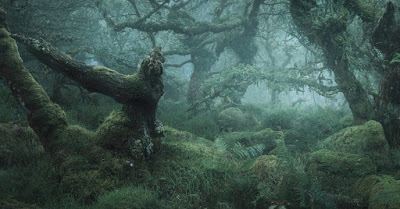
Bit of a fun blog today, I’ve decided. It’s a Bank Holiday after all, so here’s something to entertain you while you put your feet up in the sun … something scary, obviously.
Inspired by my work on the Terror Tales series, I thought I’d make a round-trip of England and recommend a suitable ghost or horror story for each county. Works of fiction rather than ‘true’ scary tales, with the authors all credited and a thumbnail sketch offered in each case
Because of this, on a similar theme, I thought today would also be a good opportunity to discuss and chat about LTC Rolt’s legendary ghost story collection of the 1940s, SLEEP NO MORE, which for those unaware is still regarded as a Jamesian masterclass albeit drawing its aura and inspiration from Britain’s industrial heritage rather than digging into our ancient and medieval past.
If you’re only here to check out the Rolt review, that’s fine. You’ll find it, as with all my book reviews, at the lower end of today’s blogpost, in the Thrillers, Chillers section.
However, if you’re also keen to discover a chilling tale for every county in England, stick around here and take a …
Daytrip to terror
Before we embark on our Bank Holiday scare marathon, I need to offer a couple of quick thoughts.
When I first had the idea to do this, it struck me as a daunting task. Those among us who enjoy scary stories probably remember hundreds of them vaguely. Highly likely, we remember what it was about them that unsettled us so much. We’ll recall the eerie situation, perhaps the personalities of the main protagonists. Almost certainly we’ll recollect the terrifying punchline. But it’s highly unlikely that in each case we’ll be able to remember exactly where and when it was set.
And so it was with me when I decided to pen this blog.
How the heck could I remember every story I’d ever read in such detail that I’d know which ones to include? At the very least it would involve days, if not weeks, of research as I dug these tales up again and re-read them. And frankly, when it was only for a blogpost, that would have involved an expenditure of time that I simply couldn’t afford. So … I’ve mainly gone here for stories that I could remember very clearly, which means there could be some obvious choices I’ve neglected to include. Sorry about that. Feel free to let me know, though, and maybe, at some point, we can do a Daytrips to Terror 2.
What this also means, sadly, is that not every author I know and love is represented here, so apologies to you guys (and gals). On a similar subject, I determined from the outset that each author here would only be mentioned once, so additional apologies to anyone who thinks they could have supplied several titles for this list. But as I’ve just said, this may not be the last time we do this.
(As a footnote, you’ll spot that I’ve included a story of my own. I don’t normally apologise for that, but on this particular occasion I wasn’t going to do this … until I realised that, rack my brains though I did, I couldn’t find anything else for that particular slot).
You may also wonder why I drew the line at England, and didn’t venture into Wales, Scotland and Northern Ireland. Well, I initially intended to, but I’ll freely admit that I struggled to find a suitable story for every county in those countries.
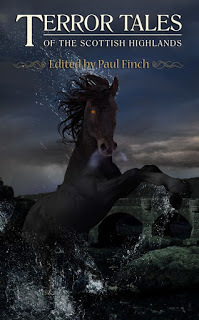 No doubt I’d have succeeded had I been able to dedicate weeks and months to the research, but as I say, this is just a blog, so I had to impose a limit somewhere. However, that doesn’t mean I won’t go there at some point in the future, so all thoughts and suggestions are welcome. TERROR TALES OF THE SCOTTISH LOWLANDS will be published by Telos before the end of this year, so that will give me a huge head-start, and alongside
TERROR TALES OF THE SCOTTISH HIGHLANDS
(published in 2015), could be the springboard for another list.
No doubt I’d have succeeded had I been able to dedicate weeks and months to the research, but as I say, this is just a blog, so I had to impose a limit somewhere. However, that doesn’t mean I won’t go there at some point in the future, so all thoughts and suggestions are welcome. TERROR TALES OF THE SCOTTISH LOWLANDS will be published by Telos before the end of this year, so that will give me a huge head-start, and alongside
TERROR TALES OF THE SCOTTISH HIGHLANDS
(published in 2015), could be the springboard for another list. Okay, enough blather. Here we go …
DAYTRIPS TO TERROR
BEDFORDSHIRE
Taking Tusk Mountain by Allen Ashley
An ex-con trying to get his life back on track reluctantly joins a scheme to break into a storage unit at Whipsnade Zoo where offcut elephant tusks are kept, but doesn’t allow for the facility’s mysterious guardians …
BERKSHIRE
Summer Holiday by John Llewellyn Probert
The gleefully fiendish heir to a family fortune arranges for his annoying relatives to spend a holiday weekend at Oakley Court, the country house where numerous British horror films were made, his plan: to kill them off in ways representative of those famous, gruesome movies …
BUCKINGHAMSHIRE
Wide Shining Light by Rio Youers
Two old schoolfriends reunite after many years. Martin is going through a torturous and acrimonious divorce, but Richard, a thoughtful widower, is able to offer help and advice. The two become firm pals again, but Richard has some fairly dark secrets of his own, and it isn’t long before Martin is drawn into them …
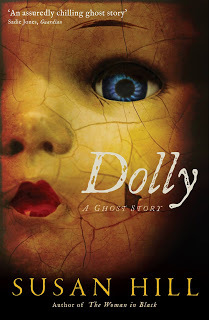 CAMBRIDGESHIRE
CAMBRIDGESHIREDolly by Susan Hill
In post-war Britain, Edward and Leonora, two young but distant cousins, are sent to live with relatives in a remote corner of the fen country. It’s an eerie location, but Leonora thinks her life would improve if she could only have the exotic porcelain doll she long ago set her heart on …
CHANNEL ISLANDS
Cold for Evermore by A.F. Kidd
Terry takes a well-earned solo holiday on Sark, in an idyllic cottage off a quiet country lane. She hasn’t been there long, however, before she hears the story of a drowned child, whose horrible spectre is still said to roam the district, and whom, if it physically touches you, is a portent of imminent death …
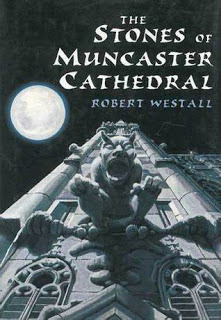 CHESHIRE
CHESHIREThe Stones of Muncaster Cathedral by Robert Westall
Steeplejack Joe Clarke is an affirmed atheist, but he happily takes on a difficult job at the top of medieval Muncaster Cathedral’s highest tower. It strikes him as odd that one of the bigger firms were not brought in first, but it is only when bad things start happening that he can’t help wondering if there might be something wrong with the steeple’s unusually hideous gargoyle …
CORNWALL
The Beautiful Ones by Mary Williams
When hen-pecked Arthur’s domineering wife browbeats him into moving to Cornwall, he expects to be unhappy. But then one day, a local oddball gives him the gift of an unusual plant, which, the more he tends it in his quiet, upstairs den, the more it assumes the form of an alluring woman …
CUMBRIA
The Claife Crier by Carole Johnstone
Teenage Kerry doesn’t get on with her father, but when they attempt to bond during a Lake District hiking trip, they get lost in rainy Claife woods, the haunt, or so legend tells, of the Claife Cryer, a phantom so horrible that just to look at it causes insanity …
DERBYSHIRE
Help the Witch by Tom Cox
Jeff, an academic struggling to recover after a painful breakup, rents a cottage high in the Peak District, just in time to get snowed in by a terrible winter. It is probably not the best time to discover that the cottage is haunted by a spirit still lingering after the ghastly carnage of the plague era ...
DEVON
The Hunter by David Case
When a series of hideous murders occurs on Dartmoor, the corpses left torn apart and headless, rumours circulate that a werewolf is at large. The police are at a loss to stop the slayings, but retired big game hunters, Wetherby and Byron, think they may have a chance …
DORSET
The Sea Change by Helen Grant
An adventurous dive-team falls out when obsessive team-leader Daffy develops a strange compulsion to visit the same eerie offshore wreck again and again, at an increasingly strange and terrible cost …
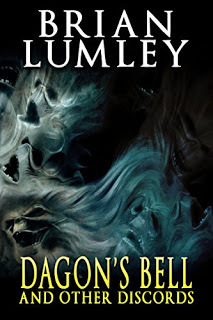 DURHAM
DURHAMDagon’s Bell by Brian Lumley
A young couple move into age-old Kettlethorpe Farm on the North Sea coast. It has great potential, but also lots of mysterious character.
For example, it bears the age-old engraving of a fierce merman, while former residents were described by neighbours as having weird fishlike features. Scariest of all, though, is the story of the mysterious undersea bell …
ESSEX
The Turn of the Screw by Henry James
A demure governess takes charge of two orphaned children who have essentially been left to their own devices in an isolated country house. The governess likes the children despite their superior attitude, but increasingly catches sight of a pair of unknown adults hanging around the property …
GLOUCESTERSHIRE
WS by LP Hartley
A novelist becomes progressively more concerned by a series of vaguely menacing postcards, which he receives one after another, each one posted from a little closer to his home. They are signed WS, but the only WS he knows is his own arch-villain, a malevolent but entirely fictional character …
GREATER MANCHESTER
The Narrows by Simon Bestwick
During a nuclear attack, a small band of teachers and pupils from a Manchester school seek shelter in the underground waterway system, but while only slow death by poisoning awaits them above ground, it soon becomes clear that there’s something even worse down here …
HAMPSHIRE
The Humgoo by Ronald Chetwynd-Hayes
Mansfield, a lost motorist, calls for directions in a rundown village, where the filthy, emaciated locals seem to possess no modern amenities. When he finds his car damaged, he is forced to stay overnight, only to then discover that his new hosts get all their food and clothes from ‘boxes’ … in the nearby graveyard.
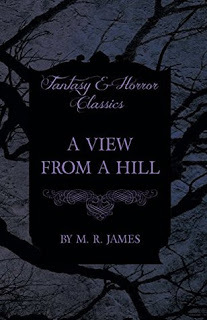 HEREFORDSHIRE
HEREFORDSHIREA View from a Hill by MR James
When Cambridge academic Fanshawe visits the country home of an old friend, the duo enjoy a pleasant walk to a local beauty spot. But when Fanshawe takes in the fine view with a pair of binoculars previously owned by a noted antiquarian, he is disturbed to see a body swinging on a gibbet …
HERTFORDSHIRE
Love Leaves Last by Mick Sims
An ambitious suburbanite takes his family to the country residence of an old pal, where he hopes to conclude an important business deal. The new guests are welcomed lavishly, but then given a stern but bizarre warning: at no time on these premises must anyone engage in physical relations …
ISLE OF MAN
Only Sleeping by Peter Bell
When a grief-stricken boarder commits suicide at a Manx guesthouse and the zealous local vicar refuses to allow the burial in his churchyard, a child visitor, who always found the poor woman inexplicably creepy, becomes convinced that her ghost will seek him out …
ISLES OF SCILLY
The Terror on Tobit by Charles Birkin
When two young women holidaying in the Scillies announce that they’d like to camp for one night on uninhabited Tobit, the locals try to dissuade them. People have vanished on Tobit, they are told. It belongs to the sea, and the sea’s creatures. But the girls insist on going …
ISLE OF WIGHT
The Long-Term Residents by Kit Pedler
An exhausted scientist takes a well-earned break at an Isle of Wight hotel, only to be shocked by how old and feeble the vast majority of its permanent residents appear to be. When he decides that he’s had enough, he discovers that leaving isn’t quite so easy …
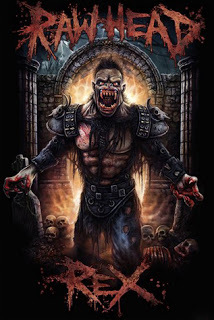 KENT
KENTRawhead Rex by Clive Barker
The peace of a prosperous rural community is shattered when a young farmer, tired of the sight of the heavy stone that his father and grandfather before him inexplicably left in the middle of one of his fields, brings a mechanical digger to the problem, and accidentally releases an horrendous ogre-like creature from its centuries-long subterranean confinement …
LANCASHIRE
The Poor Weather Crossings Company by Simon Kurt Unsworth
Sykes, bored visitor to Morecambe, opts to kill some time by taking a guided tour across the famously dangerous sands, assuming that in the safe hands of Mr Calcraft it will be okay. But a storm is brewing, and the mudflats are even more treacherous than usual, and Mr Calcraft seems a little odd …
LEICESTERSHIRE
Bosworth Summit Pound by LTC Rolt
Fawcett, a man in ailing health, takes a solo boat trip through central England’s quiet network of canals, only for his illness to overcome him. Later on, after his death, his journal, tells a tale of terror concerning a particularly menacing canal tunnel at the journey’s halfway point …
LINCOLNSHIRE
The Vicar of Wryde St Luke by Steve Duffy
An antiquarian cleric discovers an ancient grimoire in an abandoned church in the fens, which was closed decades ago due to the activities of its diabolist vicar. But when he takes the priceless book away, something horrific comes in pursuit …
LONDON
The Soldier by Roger Johnson
Obsessive young Richard dreams about being a soldier. When he discovers a hidden church in the heart of the City of London, he learns about the Worshipful Company of Militia, a mysterious order who predate Christianity but who now have an urgent need for new blood …
MERSEYSIDE
The Companion by Ramsey Campbell
Somewhere in the depths of inner Liverpool, a lonely and nervous man takes refuge from a gang of troublesome youths in what appears to be a derelict fairground. Weirdly, the Ghost Train is still operational, and on an inexplicable whim, he jumps aboard …
NORFOLK
Wolferton Hall by James Doig
A young scholar is permitted to attend Wolferton Hall, to make a detailed study of the medieval Throgmorton Papers. On arrival, he finds the hall mostly boarded up but filled with dusty antiquities and weird hints that Wolferton once knew evil. The scholar, a rationalist, is unconcerned, even though he’ll be working here alone …
NORTHAMPTONSHIRE
Crow-Raven by Paul Finch
Detective Sergeant Nick Brooker investigates a double-murder at Buckton Hall, a preserved manor house from the Middle Ages, where both victims appear to have been slain with ancient weapons. Could this be connected to the Crow-Raven family who once lived here? Minor medieval barons who, according to the myth, were all vicious hunchbacks …
NORTHUMBERLAND
Heads by Gary McMahon
When a couple suffer their second miscarriage, they move to the countryside to heal. But then find three carved stone heads buried in the garden of their new cottage, two of which appear to be human, one a weird hybrid. Research pulls up an eerie story of witchcraft and Celtic ritual, and now the wife falls pregnant again …
NOTTINGHAMSHIRE
Fairground Attraction by Steve Lockley
A youngster who feels inadequate and self-conscious thanks to the unsightly birthmark on his face visits a travelling fair, and meets a girl disfigured by an ugly scar. When she tells him there is a way that both of them can look ‘normal’, he allows her to lead him into the mysterious Hall of Mirrors …
OXFORDSHIRE
In the Quiet and in the Dark by Alison Littlewood
Young Steph thinks she’ll find her new life in the rural village of Long Compton boring, but she makes friends surprisingly quickly in local girls, Holly and Anne, and can’t help admitting that she finds the handsome lad, Kix, pretty alluring, even if he is always hanging around the mysterious Rollright Stones …
SHROPSHIRE
One Over the Twelve by Clive Ward
When two old friends reminisce, one tells a terrifying tale about the old hall near the village where he grew up, the eerie sepulchre connected to it, and the strange fate of a peripheral underworld figure who took up residence there, and fell foul of a mysterious presence …
SOMERSET
Treading the Maze by Lisa Tuttle
Amy and Phil love the peaceful Glastonbury guest house where they take a well-earned break. When they look from the window and see a group of unknown people parading in ritual fashion around a turf maze, Phil is entranced, but Amy feels strangely frightened …
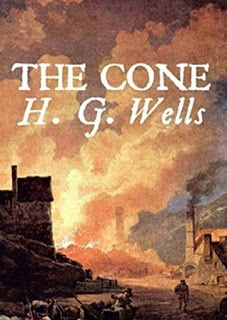 STAFFORDSHIRE
STAFFORDSHIREThe Cone by HG Wells
Raut, a talented artist, visits the ironworks in Stoke, where he intends to capture the ferocity of the industrial landscape on canvas. Horrocks, the manager of the plant, whose wife Raut had an affair with, is only too happy to show him around. In fact, Horrocks is extraordinarily helpful. He particularly wants to take Raut to check out the blast furnaces …
SUFFOLK
Deep Water by Christopher Harman
When Aldeburgh resident Peter’s wife vanishes, leaving him a cryptic note concerning the mysterious ‘Seagrim’, he assumes that she’s drowned herself having discovered the secret affair he’s been conducting. However, an investigating cop is suspicious rather than helpful, while Peter keeps catching glimpses of someone who looks distinctly but not entirely like his missing wife …
SURREY
Where Are They Now? by Tina Rath
When a spirited but veteran actress goes missing after announcing that she intends to investigate a strange-looking mansion she’s recently spotted off a local woodland path, an eccentric acquaintance becomes convinced that she has fallen victim to the faeries …
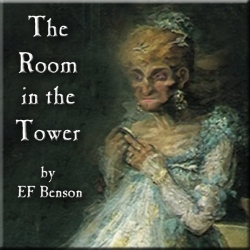 SUSSEX
SUSSEXThe Room in the Tower by EF Benson
A man is haunted by a recurring nightmare about visiting an old university friend’s house, where the friend’s sinister mother assigns him the terrifying ‘room in the tower’. When he visits the family for real, all seems well, until a rainstorm maroons him and he is offered the room in the tower …
TYNE & WEAR
The Song My Sister Sang by Stephen Laws
When an oil slick devastates the Tynemouth coast, Dean volunteers to help clean up the gulls. But he soon becomes uneasy when the disaster takes him close to the derelict swimming pool, where, as a jealous child, he callously allowed his baby sister to drown …
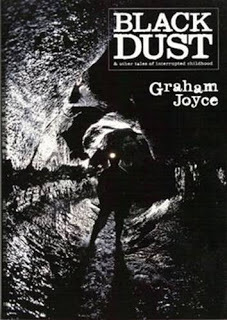 WARWICKSHIRE
WARWICKSHIREBlack Dust by Graham Joyce
A collier is trapped far underground. A neighbour of his, but someone he distinctly doesn’t like, joins the rescue team when they make their perilous journey into the depths. On the surface meanwhile, their two sons play together in a natural cave-mouth …
WEST MIDLANDS
The Lost District by Joel Lane
A depressed man recalls an experience he had as a youth in the 1970s, when he encountered a strange but attractive girl on a local playground, and she led him back to Clayheath, an eerie, run-down district he had never heard of before, and from which, or so she said, no one ever leaves …
WILTSHIRE
Lapland Nights by Reggie Oliver
A young woman wearied by caring for her difficult OAP mother takes advantage of the OPEN network, in which the workload is shared by other carers. When it is her turn, she finds herself lumbered, not just with her own parent, but with the Strellbriggs, an aged couple with some very peculiar and disturbing habits …
WORCESTERSHIRE
Reality or Delusion? by Mrs Henry Wood
A love triangle in a farming village leads to catastrophe when Maria, a jilted young woman denounces Daniel, her cheating fiancé, not just for his betrayal of her but for stealing his neighbour’s corn. Shamed and depressed, Daniel disappears, but this may not be the last Maria sees of him …
YORKSHIRE
The Waiting Room by Robert Aickman
When Pendlebury misses a late connection, he is forced to spend a night in the waiting room of a dismal urban railway station. It’s bitterly cold and with all the staff gone home, he’s terribly alone. But it isn’t just the physical discomfort that he’ll have to worry about …
Okay, hope you all enjoyed that or at least found it informative. As I say, there may be more in the future. What you’ll notice I’ve NOT done here is include the antecedents for each story, i.e. list when and where it was first published, where you can read it etc. That’s again because time was not on my side, but also because so many of these stories have been anthologised repeatedly that it’s often difficult to establish their best showcase. My recommendation, if you really want to hunt some of these titles down, is to search online. Most will be listed on there somewhere, and their most recent date of publication should be easily obtainable.
I would also like to thank fine art photographer, Neil Burnell, who created the amazing image at the top of today’s blog. It depictsWistman’s Wood on Dartmoor, in Devon.
THRILLERS, CHILLERS, SHOCKERS AND KILLERS …
An ongoing series of reviews of dark fiction (crime, thriller, horror and sci-fi) – both old and new – that I have recently read and enjoyed. I’ll endeavour to keep the SPOILERS to a minimum; there will certainly be no given-away denouements or exposed twists-in-the-tail, but by the definition of the word ‘review’, I’m going to be talking about these books in more than just thumbnail detail, extolling the aspects that I particularly enjoyed … so I guess if you’d rather not know anything at all about these pieces of work in advance of reading them yourself, then these particular posts will not be your thing.
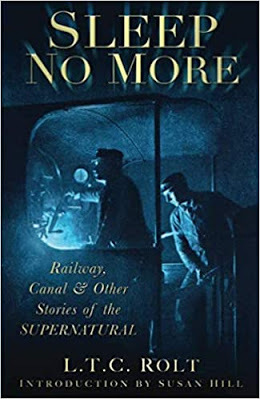 SLEEP NO MORE
SLEEP NO MORE
by LTC Rolt (1948)
A newly-reissued single collection of British ghost stories from an author not primarily associated with the supernatural genre, but a book with a long reputation in the field, particularly among fans of Jamesian-style ghost fiction, for being a forgotten classic.
Before we assess the book in closer detail, here is the publishers’ own description of its contents:
This powerful collection of stories of the supernatural combines LTC Rolt’s writing talent with his unparalleled knowledge of Britain’s industrial heritage to produce tales of real mystery and imagination. This haunting anthology takes the reader on a journey from Cornwall to Wales and from the hill country of Shropshire to the west coast of Ireland.
‘The House of Vengeance,’ set in the Black Mountains of South Wales, tells what happens when a walker becomes lost and disorientated as the mist falls, while in ‘The Gartside Fell Disaster’ an old railwayman recounts the terrible night when the ‘Mountaineer’ came to grief. Alongside these are twelve other tales of elemental fears and strange and inexplicable happenings.
First published in 1948, this enduring collection will appeal to all those who, like Tom Rolt, are passionate about the backdrop of our industrial landscape and will delight and terrify anyone who loves a good old-fashioned ghost story …
Lionel Thomas Caswell Rolt (1910-1974) was best known during his lifetime as a trained engineer who turned his hand to writing on engineering and industrial matters, and, most famously, to producing well-regarded biographies on the two great pioneers of that field, Thomas Telford and Isembard Kingdom Brunel. He was also renowned for his interest in and knowledge of cars, trains and other vehicles, which manifested itself in his participation in vintage car rallies and the development of heritage railways, as well as for being a narrow boat enthusiast and a major promoter of leisure cruising on Britain’s inland waterways.
What there was no outward sign of was his fascination with ghost stories, particularly the ghost stories of MR James, which were characterised by atmospheric old English (or old European) locations, gentleman scholar protagonists, and malevolent spectral foes invoked through their attachment to mysterious and arcane artefacts or locations. Bearing this in mind, and that Rolt was also a close friend to Robert Aickman, a fellow conservationist and a founder member of the Inland Waterways Association (which restored Britain’s by then semi-derelict canal system) but best known today as an author and very accomplished practitioner of the English weird tale, it may be less of a surprise that in due course the one-time engineer also penned a bunch of ghost stories.
Sleep No More was first published by Constable in 1948, and was immediately well-received. But because Rolt didn’t write any follow-up collections, his standing as a ghost story writer gradually faded until by the turn of the century, for the average man on the street at least, it had more or less vanished. New small-circulation editions have since been produced by enthusiasts: Branch Line (who specialised in publishing railway books) in 1974, and the late much-lamented Ash-Tree Press in 1996 (who added two extra stories to the line-up), but both those versions are now out of print. For that reason alone, this relatively new edition (2010) from The History Press must be regarded as something of a collector’s must, but also because with a new introduction by Susan Hill, it’s a really nice piece of work in its own right.
As to whether the material it contains still works, well … it did for me.
To start with, it’s all beautifully and compellingly written. Tom Rolt couldn’t just paint pretty pictures with his words. He did it succinctly. Considering that much of his output was factual non-fiction, he also had the talent to pace his stories effectively and people them with convincing characters.
In terms of style, there is no doubt that Rolt was strongly influenced by MR James, though Rolt’s world was not that of academia or the cloister, and this is clearly represented in his tales, in many of which, though the central characters are often lonesome scholarly types on missions of discovery through the British back-country, the settings are abandoned industrial sites or places where industry or engineering is in process or has left its mark on the landscape. However, what is very reminiscent of the old master is the malign and even deadly nature of the supernatural threats, while from Robert Aickman, he appears to have inherited an intriguing habit of injecting strangeness into his stories as well, not always providing clean cut explanations for the weird and disturbing events he describes.
For that reason, some of the stories in this collection I’d regard as eerie rather than out-and-out frightening, but that’s a good thing, because that means they were affecting and left me thinking about them long afterwards.
Three of the best stories in the book fall into this category, The Shouting (one of the two later additions), Cwm Garron (which is exceptional) and Hawley Bank Foundry , but because I’m going to be discussing these three a little later on (in the movie adaptation part of this review) I won’t say too much synopsis-wise, except to comment that all three take place in otherworldly semi-rural locations, and that all hit us straight off with an indefinably doom-laden atmosphere, which steadily deepens until reaching a stark, bone-chilling denouement.
Also falling into this category is The Cat Returns , in which a car breaks down on a stormy night and the honeymooning couple inside it fight their way through the rain on foot until encountering an isolated house. A man they suspect is a servant admits them and bids them stay over, but he seems to be terrified of something … and then the phone rings. There’s a bit of a traditional ghost story vibe with this one, but again, the creepiness of the situation, almost from the beginning, is its main asset. Likewise, in World’s End , a traveller on the Pembroke Coast becomes lost in a sea fret and takes refuge in an inn, where he must share a bedroom with a man he doesn’t know and subsequently endures an appalling experience. This is another dreamlike Aickmanesque tale, with much to disturb the reader before we even consider its supernatural message.
Perhaps the most overtly Jamesian story in the book, and another of the best, is Bosworth Summit Pound . Again, I’ll be talking about this one a little more later on, so I’m offering no thumbnail synopsis, but it’s got the personal touch and perhaps the most authentic feel of them all (not that they haven’t all got the air of authenticity when it comes to the industrial heritage of Britain) as it takes the reader deep into Rolt’s beloved inland waterway system.
Also with a Jamesian aura, though in a very different way, is New Corner . This one tells the story of a 1930s land speed trial, which is continually interrupted when the new corner of the racetrack becomes subject to curious phenomena, including disturbing smells and apparitions. As with many a classic Jamesian tale, the stakes are raised drastically when one of the officials has a terrible dream, which seemingly presages an awful disaster.
Even without the shadow of Dr James lying over it, this would be a powerful and frightening ghost story, as is Agony of Flame , which follows the misfortune of two men who, during a fishing holiday in the West of Ireland, are puzzled by the lights shining nightly from a ruined castle on an island in a loch. Against their better judgement, they investigate … and pay the price for the rest of their lives.
Taking us smoothly into the realm of the more traditional non-Jamesian ghost story is A Visitor at Ashcombe , in which a successful industrialist and his wife move to a mansion in the Cotswolds and insist on opening up a forbidden chamber, where once, it is said, a celebrated witch-hunter held court. Almost inevitably, chaos and tragedy result.
Similarly reminiscent of the older, more typical English ghost story (Dickens’s The Signalman being a good example here) is The Garside Fell Disaster , in which a Victorian-era signalman reflects on the events that led to a railway accident in the tunnel where he was stationed in the wilds of Cumbria and his conviction that there’d always been something odd about that mountain. Meanwhile, in Hear Not My Steps , a professional ghost hunter takes it on himself to spend a night in a haunted room. He’s never encountered a real ghost yet, though all that will shortly change.
In Music Hath Charms , a young man inherits a coastal house in Cornwall. When he travels down there with a friend, it is in a semi-dilapidated state. It also boasts an uncanny history, and when they search among its lumber they find a curious musical box, which produces a tune the new owner falls in love with but which his friend is strangely repelled by. In The House of Vengeance (the second of the two later additions), meanwhile, young John gets lost while hiking through the Brecon Beacons to his friend’s cottage. When a fierce storm strikes, he seeks sanctuary in a curious farmhouse that is not on any map.
These more familiar types of ghost stories are perhaps slightly less impressive in terms of originality, featuring, as they do, demonic spirits, possession etc. At least, that’s the case when they’re read today. But overall this is an excellent collection of supernatural tales. It’s a superior standard of writing, often taking place in unusual settings and strange, blighted locations, and if the ambition was to produce something as intensely and lingeringly scary as MR James often was, then it’s a very worthy effort indeed.
We’ve often heard it proclaimed that such and such an author is the next MR James, and while I’ve never read one yet who was, LTC Rolt comes very close.
And now …
SLEEP NO MORE – the movie.
I doubt that any film maker has optioned this book yet, and whether or not it’s ever likely to happen, but as this part of the review is always the fun part, here are my opinions just in case some major player decides to put it on the screen.
Note: these four stories are NOT the ones I necessarily consider to be the best in the book, but these are the four I perceive as most filmic and most right for adaptation in a portmanteau horror. Of course, no such horror film can happen without a central thread, and this is where you guys, the audience, come in. Just accept that four strangers have been thrown together in unusual circumstances which require them to either relate spooky stories or listen to them.
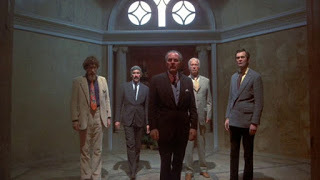 It could be that they find themselves in an idyllic country villa, where a nervous renovator needs reassurance about his various nightmares (al la Dead of Night), or maybe locked in the basement of a Thames-side tower block, where drink and the passage of time forces them each to reveal their deepest fears (a la Vault of Horror).
It could be that they find themselves in an idyllic country villa, where a nervous renovator needs reassurance about his various nightmares (al la Dead of Night), or maybe locked in the basement of a Thames-side tower block, where drink and the passage of time forces them each to reveal their deepest fears (a la Vault of Horror). Without further chit-chat, here are the stories and the casts I would choose:
The Shouting: Edward takes a rental cottage in a quiet corner of Devon, on the edge of coastal woodlands. But he soon becomes intrigued by the strange-looking children who pass his place while making an unexplained daily trip to a curious mound of turf deep in the trees ...
Edwina (no reason why it can’t be a woman) – Ruth Wilson
Bosworth Summit Pound: Fawcett, a man in ailing health, takes a boat trip along one of England’s lesser known waterways, which he doesn’t survive. His journal, however, relates a tale of terror concerning a bone-chilling encounter in a menacing canal tunnel at the journey’s halfway point …
Fawcett – Richard E Grant
Cwm Garron: Carfax embarks on a one-man holiday in the Welsh mountains. He stays at a peaceful inn in a picturesque valley. But a fellow guest, Elphinstone, a noted folklorist, advises him that not everything here is as pleasant as it may seem …
Carfax – Matthew Goode
Elphinstone (another gender change, but no harm done) – Alison Wright
Hawley Bank Foundry: During World War II, an industrialist reopens an abandoned ironworks deep in the Shropshire countryside, and immediately there are strange goings-on: reports of phantom figures and some type of unknown vermin that infest the factory and kill the local cats …
Frimley – Ken Stott
Clegg – Liam Cunningham
May 19, 2021
A few bits of news ... and a few maniacs too
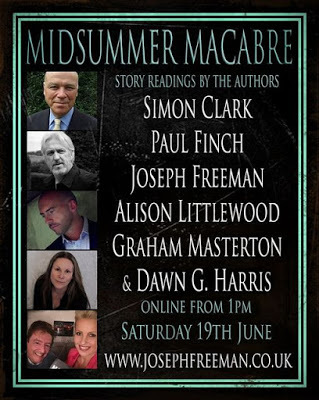 It’s a quick news update blogpost this week.
It’s a quick news update blogpost this week. We’re all aware that there are lots of big issues to discuss at present, but I also have a few writing-related items of interest that I thought people might be interested in.
And having just completed another rewrite on my next novel, today seems like a good opportunity to get them out there.
In addition, and because today I’ll mostly be talking about short story projects (all of a dark and disturbing bent, I hope), I thought this might also be an opportune time to review and discuss Stephen Jones’s epic anthology of the deranged, PSYCHO-MANIA!
If you’re only here for the Jones review, never fear. Just scoot on straight down to the lower end of today’s blogpost, the Thrillers, Chillers section, where all my reviews are posted. If, on the other hand, you have a bit more time, here are …
A few items of news
From the middle of next month onwards, I’ll be appearing online in MIDSUMMER MACABRE , as organised and edited by the tireless Joseph Freeman.
This is the current Covid version of the ghost, horror and suspense story readings that Freeman used to organise down in East Anglia in front of live audiences. As such a thing hasn’t been possible this last fourteen months or so, Freeman has since diversified into presenting the stories on videocast, each of the guest authors having recorded themselves narrating one of their personal favourite tales. I was very gratified to be asked to participate in MIDSUMMER MACABRE because initially I was invited to last Christmas’s WINTER TALES but my schedule ultimately got in the way. It’s surely a mark of the man that Joe Freeman was happy to invite me again.
This time I was able to contribute my short story, Children Don’t Play Here Anymore .
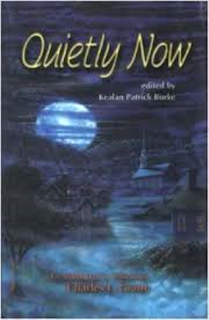 It was first published in Kealan Patrick Burke’s anthology
Quietly Now
, a tribute to the late, great Charles L Grant who, for those who don’t know, was a master of the subtle, slow-burn chiller, and whose fiction was often set in small-town America where much of the horror lay just below the surface. Anyway,
Quietly Now
was published in 2004, seventeen years ago I shudder to realise, and so I felt it high time my story was aired again.
It was first published in Kealan Patrick Burke’s anthology
Quietly Now
, a tribute to the late, great Charles L Grant who, for those who don’t know, was a master of the subtle, slow-burn chiller, and whose fiction was often set in small-town America where much of the horror lay just below the surface. Anyway,
Quietly Now
was published in 2004, seventeen years ago I shudder to realise, and so I felt it high time my story was aired again. Children Don’t Play Here Anymore centres around a retired police detective, who continually, on the same date each year, revisits the scene of the one murder he failed to solve. Every time, he puts more pieces of the confusing puzzle together. Every time, it gets a little bit more terrifying …
MIDSUMMER MACABRE goes live from June 19, and also includes submissions from Freeman himself, Simon Clark, Alison Littlewood, and Graham Masterton and Dawn G Harris.
Solving the insoluble
Later this month, meanwhile, I’m equally pleased to be featuring in a special promotional e-version of Greydogtales’ excellent OCCULT DETECTIVE MAGAZINE , which publishes and promotes fiction about those who meddle in the weird, the strange and the scary (I’m sure you get the picture: think Flaxman Low, Abraham Van Helsing, John Silence and, of course, Carnacki the Ghost-Finder).
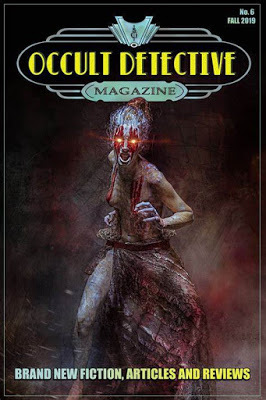 I’m particularly excited about this one, as it gave me an opportunity to bring back my own occult investigator, Major Jim Craddock, a former soldier of the Northwest Frontier who in the early 1860s takes over as Chief Officer of Police in Wigan, my home town of course, but a blot on the Lancashire landscape during the Industrial Revolution, a crucible of smoke, fire and squalor but also the venue for many bizarre events. The Craddock outing I’ve chosen on this occasion is
Shadows in the Rafters
, which was first published in 2003 in
The Derelict of Death
(edited by John B. Ford and Steve Lines).
I’m particularly excited about this one, as it gave me an opportunity to bring back my own occult investigator, Major Jim Craddock, a former soldier of the Northwest Frontier who in the early 1860s takes over as Chief Officer of Police in Wigan, my home town of course, but a blot on the Lancashire landscape during the Industrial Revolution, a crucible of smoke, fire and squalor but also the venue for many bizarre events. The Craddock outing I’ve chosen on this occasion is
Shadows in the Rafters
, which was first published in 2003 in
The Derelict of Death
(edited by John B. Ford and Steve Lines). In this particular case, Craddock is still dealing with the fall-out from a local pit strike when it comes to his attention that street-children are disappearing in the vicinity of one of the abandoned pit-heads, and that something is being seen at night, which local folk are referring to as the Scuttling Shadow …
This special OCCULT DETECTIVE MAGAZINE promo e-edition, which will be downloadable entirely FREE, will be out later this month. As soon as I get the links, I will post them on Twitter and Facebook.
Chuffed to bits
Lastly today, I was chuffed to bits recently to learn that online horror specialists HORROR DELVE have recently posted an article, TEN TERRIFYING TALES BY PAUL FINCH , in which author Matt Cowan focusses on the ten short stories of mine that he considers most frightening.
I’m completely flattered by this, and had no idea it was coming out.
It’s all subjective, of course. Not everyone will agree with Matt’s selections, but it’s a great honour that anyone should consider anything you have written to be worthy of mention online.
I’m tempted to list the stories here and run through them in synopsis terms, but I don’t think that would be very fair on Matt, as he’s just gone to great efforts to outline them himself.
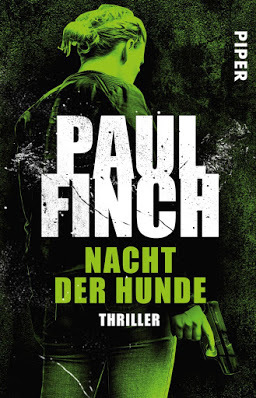 If you’re interested, just follow the link.
HORROR DELVE
is a great website anyway, taking regular deep dives into the wider genre both past and present.
If you’re interested, just follow the link.
HORROR DELVE
is a great website anyway, taking regular deep dives into the wider genre both past and present. Hounds of Hell
Moving away from horror briefly (though some would probably contest that assertion), I’m also pleased to assert that my third Lucy Clayburn novel, STOLEN , has now been translated into German, and will be published by prestigious Munich-baseed publisher, Piper Verlag, on Kindle in July, in paperback in September. The German title will be NACHT DER HUNDE ( Night of the Dogs in English), and to quickly recap, it sees Manchester police detective, Lucy Clayburn struggling to deal with the revelation that the father she never knew as a child is a major organised crime figure while at the same time trying to track down a mysterious black van, which may be an urban myth, but which has reportedly been seen several times in the vicinity of unexplained abductions …
And perhaps just to reinforce the scurrilous theory that NACHT DER HUNDE (or STOLEN ) contains one or two horror(ish) moments, here’s a very short extract:
… on reaching the bottom of the depression, Lucy scrambled over to look. The stench of decay thickened, becoming almost intolerable. Flies swarmed aggressively. In truth, it was a nightmarish scene, almost demonic: the figure of the nun, cadaverous, degraded, draped in her dirty, ragged raiment, yet hands joined in prayer as she stood upright on a hillside of waste and filth, a storm of winged horrors buzzing around her.
The contents of the pit were the crowning, hellish glory.
Lucy gazed down on a tangle of butchered, half-burned, half-rotted forms crammed on top of each other. Maybe ten or eleven, maybe more …
THRILLERS, CHILLERS, SHOCKERS AND KILLERS …
An ongoing series of reviews of dark fiction (crime, thriller, horror and sci-fi) – both old and new – that I have recently read and enjoyed. I’ll endeavour to keep the SPOILERS to a minimum; there will certainly be no given-away denouements or exposed twists-in-the-tail, but by the definition of the word ‘review’, I’m going to be talking about these books in more than just thumbnail detail, extolling the aspects that I particularly enjoyed … so I guess if you’d rather not know anything at all about these pieces of work in advance of reading them yourself, then these particular posts will not be your thing.
[image error]PSYCHO-MANIA! edited by Stephen Jones (2013)
Stephen Jones is one of a small handful of professional editors who for many years have been flying the flag for the written horror anthology despite all kinds of opposition from mainstream publishing, which, even now, despite an increasing prevalence of horror anthology movies, seems sceptical about the short story collection format. Jones has never let this dissuade him, and has continued to have mass-market hits. This book, Psycho-Mania! , was one of them, though this one adopted a slightly different approach from the norm.
Instead of collating a bunch of individual stories and putting them out under a single title, Jones commissioned horror writer, John Llewellyn Probert, to create a framework story, Screams in the Dark , much the way the anthology film-makers often did (surely, most horror enthusiasts will remember Peter Cushing as Doctor Shrek in Dr Terror’s House of Horrors , or Ralph Richardson as the stone-faced crypt-keeper in Tales from the Crypt ?) and then inserted the tales, both old and new, afterwards, but only after ensuring that they fitted the bill.
The result is this massive, rip-roaring horror antho, which takes murderous insanity as its overarching theme, and hits us with a grand line-up of stories, none of which, though they are all tied together at the central point, can’t also be read as thoroughly entertaining standalones.
Before we get into the nitty-gritty, I’ll let the publishers give you a flavour of it with an extract from their own official back-cover blurb:
When journalist Robert Stanhope arrives at the Crowsmoor asylum for the criminally insane to interview the institute’s enigmatic director, Dr Lionel Parrish, little does he realise that an apparently simple series of tests will lead him into a terrifying world of murder and insanity…
In this chilling new anthology, some of the biggest and brightest names in horror and crime fiction bring you twisted tales of psychos, schizoids and serial killers, many with a supernatural twist.
One thing you can always guarantee with a Stephen Jones anthology is a wide and eclectic selection of stories. Jones has long proved himself an expert at assembling wide-ranging tales with which to represent every aspect of his chosen theme. He doesn’t hold back from using reprints either, if they suit the tone of the book, though neither does he fall into the trap that other anthologists do of simply cobbling together bunches of well-known tales to provide huge names for inclusion on the cover, and repackage them as something new. When Stephen Jones dips into the past, he does so carefully, ensuring to find rare treasures that many of his readers are unlikely to have read previously.
As such, Psycho-Mania! is underpinned by several forays into the twisted minds of writers of earlier days that still feel as fresh and vital as they ever did, and portray criminal insanity in all its varied and garish forms.
For example, in Basil Copper’s The Recompensing of Albano Pizar , wherein a scheming literary agent humiliates the widow of a deceased best-selling author by selling private letters for publication, moving her to volcanic anger and a terrible revenge. Slightly more familiar perhaps, mainly due to its inclusion in the 1974 Amicus portmanteau horror, From Beyond the Grave , we also have R. Chetwynd-Hayes’s The Gatecrasher , in which a bored young Londoner holds a séance with his friends and unwittingly summons the soul of a mass killer who might even be Jack the Ripper (perhaps inevitably, one of several visits to Ripper territory that this antho makes). It’s a legendary tale, which many will know without possibly ever having realised that it commenced life as a short story.
An author who could never be described as belonging to former days is the inexhaustible Ramsey Campbell, even though he’s been supplying horror stories to the genre for what seems like umpteen generations now. His contribution here, the dark but expertly-written See How They Run , is another oldie (well … 1993, so not too old), and introduces us to Foulsham, a Crown Court juror, who strongly empathises with a suspect on trial for mass murder, though when that suspect is found guilty and commits suicide, he feels increasingly as if the killer is still close.
Two especially well-known stories in horrordom are Yours Truly, Jack the Ripper and The Tell-Tale Heart by Robert Bloch and Edgar Allan Poe respectively, but both merit their inclusion here given their status as two of the world’s stand-out Gothic horror stories, and their shared observation of human descent into madness. The former follows the famous murder case, but casts the killer as an immortal being who commits human sacrifices in the form of atrocious murders throughout the ages in an effort to continually extend his life, while the latter is Poe’s short but notorious study of claustrophobic and ultimately murderous paranoia.
Less well-known maybe, though not to the genre’s purists, is Harlan Ellison’s All the Birds Come Home to Roost . It’s something of an oddity by the standards of the rest of the fare on offer, but it all plays out at manic pace and its denouement completely satisfies (more about this one later).
But Stephen Jones has never been one of those anthologists who relies purely on re-unearthing great classics and dusting them off for new generations. Over the years, he’s given many a fledgling short story-writer a welcome leg-up in career terms, and at the same time has always been keen to summon relative newcomers to whatever anthology he happens to be working on, not just for diversity’s sake, but to bring in fresh, different voices and thereby ensure that every aspect of his chosen subject is explored.
Psycho-Mania! is no exception to that.
Of course, no one would consider a seasoned horror writer like Robert Shearman to be a new kid on the block, but with his edgy surrealism and dark explorations of damaged humanity, he’s certainly a writer for modern times. In That Tiny Flutter of the Heart I Used to Call Love , he takes us back to post-WW1 England, where Julian, who was too young to fight, marries Karen, who lost her brother on the front line. But Karen is a strange woman, who lives in a house inhabited mainly by dolls.
Another regular contributor to Stephen Jones anthologies, and very much an author of the now as well as being a master of the subtle chiller is Conrad Williams. In his very effective Manners , a homeless and seemingly harmless countryman ekes out a strange existence by living wild and feasting on roadkill. In this, he’s doing nothing wrong … not in his own mind, at least. These are only animals, which are already dead. Aren’t they?
Scott Edelman is another time-served genre writer who in Psycho-Mania! contributes a brand new story, The Trembling Living Wire , a total gut-punch in terms of psycho horror, while relative newcomer (in comparison), Rio Youers, swoops through the deceptively law-abiding suburbs to give us something equally terrifying in Wide-Shining Light , though both these stories are so powerful that these are two more I intend to discuss in more detail later on.
Psycho-Mania! also contains new stories featuring characters familiar to us from past escapades.
In the richly-written The Green Hour from ghost story maestro, Reggie Oliver, August Dupin, Edgar Allan Poe’s famous detective, is called out of alcoholic retirement to investigate a series of hideous mutilation-murders occurring around the Paris Exposition of 1867.
Meanwhile, in the deeply intriguing Bryant & May and the Seven Points , Christopher Fowler brings back two of his own criminal investigators, elderly and venerable police detectives, Bryant and May, who look into the disappearance of a depressed MI5 agent, their search leading them to an eerie London circus peopled by a whole range of menacing individuals.
Equally popular on the bookshelves today, Michael Marshall (still better known to horror fans by his original moniker, Michael Marshall Smith), revisits his ‘Straw Men’ universe in Failure , hitting us with the story of a quiet man in a pleasant suburban town who is so concerned that his domestically violent son might also be a rapist that he takes extreme action to discover the truth.
But Psycho-Mania! would not be a Stephen Jones anthology if it contained nothing but murder and mayhem. Jones’s many horror anthologies are no strangers to showcasing deeper, introspective material as well.
Take the ever-reliable Steve Rasnic Tem’s poignant The Secret Laws of the Universe , in which a schizophrenic suburbanite is constantly spoken to by his furniture and electrical appliances, all of which urge him to murder his wife. He desperately doesn’t want to, and finally opts to see if killing someone else will make it go away. Meanwhile, in Brian Hodge’s intricately-considered Let My Smile Be Your Umbrella , a disturbed girl makes a cry for help by staging a hunger strike live on the internet, only for an insane killer to commence stalking her, intent on teaching her the error of her narcissistic ways.
Similarly affecting, Michael Kelly’s The Beach tells the story of Elspeth, who lives in a summertime resort, but when autumn and winter come and the tourists depart, is literally driven mad by its air of loneliness and desolation. More alarming but equally personal, Dennis Etchison’s Got To Kill Them All sees a worn-out TV personality head home intent on brutally punishing the wife he is convinced has been cheating. En route, he makes the mistake of giving a ride to a depressed young man going through similar problems.
Another thing you’re always assured of when Stephen Jones occupies the editorial helm is not just the quality of the stories he chooses, but the quality of the writing overall. There’s always a danger in an age when so much fiction is self-published that substandard material will make it onto the market often enough for the reading public to come to accept it as the norm. Well, not on Mr Jones’s watch. In fact, I’d go further and say that, when compiling his anthologies, Jones often looks for writing he deems exceptional rather than simply good. There are two particular examples of this in Psycho-Mania!
The late, great Joel Lane’s prose was never less than exquisite, but in The Long Shift he excels himself. We meet Jim, a drunken loser, who travels to distant Wales to get even with Baxter, his former boss and an unapologetic office bully. Baxter is now retired, but Jim hates him and blames him for so much that he intends to kill him. Baxter’s cottage is isolated, however, and when Jim arrives, certain things inside it indicate that all is not as it should be.
Meanwhile, another fine author, Kim Newman, dips a little into horror movie culture (and proceeds to make hay with it) with The Only Ending We Have , which sees Jayne, a beautiful body-double flee the set of the movie, Psycho , after being groped once too often by the lecherous Alfred Hitchcock, only to drive into a storm and pull off the highway at a gloomy hotel run by a weird mother-and-son double act. Don’t think you already know how this one ends. Trust me, you don’t
Of course, a book like this can never just be about the publication of clever, compelling and insightful stories. They also have to be scary and horrific. At the end of the day, Psycho-Mania! is a horror anthology, and it wouldn’t be able to wear that tag if Stephen Jones hadn’t included several tales written purely and simply to freeze the blood.
For instance, in Robert Silverberg’s ghoulish The Undertaker’s Sideline , a respected mortician operates a nasty racket in which he exhumes his clients from their graves and sells their meat from a butcher’s shop in the next town. It’s a profitable system until a local youngster works out what he is doing.
The horror of this tale is perhaps topped in Peter Crowther’s seriously chilling Eater , which sees a bunch of cops spending an eerie night in the station house while keeping a cannibal killer in the holding cells, only for one of them to become increasingly certain that the ultra-dangerous suspect can somehow possess the bodies of others.
But perhaps the two most disturbing stories of all owe their icky aura to their sheer plausibility, to the fact that you could easily believe they are accounts of real crime sprees.
In Paul McAuley’s I Spy , an abused child isolates himself as he grows up, imagining that he has developed secret super-powers and abilities to do good deeds, though in reality he is terrorising the whole town. Then we have Mark Morris, who provides possibly the darkest story in the book, Essence , which introduces us to an ordinary married couple who secretly are also serial killers. Hidden behind their genial appearance and apparent respectability, they have raped and murdered dozens of girls. Their secret is an MO that is completely foolproof. Or so they think …
There are many more stories in Psycho-Mania! Some 35 in total, which means that you’re going to get a lot more bang for your buck than this review may imply. I’m not going to mention them all, mainly because there isn’t time or space, but also because I have to leave you wanting something. But put it this way, with authors whose work I haven’t yet mentioned like Lawrence Block, Neil Gaiman, Joe R Lansdale and Brian Lumley, you’re not going to go far wrong with Psycho-Mania! It gets my strongest recommendation as another cracking horror anthology from that master of darkness, Stephen Jones.
And now …
PSYCHO-MANIA! – the movie (not to be confused, of course, with Psychomania, the biker chiller of 1973)
Okay, no film maker has optioned this book yet (as far as I’m aware), and if they ever do, unavoidable similarities would be drawn with Amicus’s Asylum of 1972, but as this part of the review is always the fun part, I’m proceeding with it anyway. So, here are my thoughts just in case someone possessing that rare combination of brains AND money decides that Psycho-Mania! simply must be a film.
Note: these four stories are NOT the ones I necessarily consider to be the best in the book, but these are the four I perceive as most filmic and most right for inclusion in what would be a more complex compendium horror than usual. On this occasion, we don’t need to look for a mist-begirt railway waiting room or a labyrinth of underground catacombs to provide us with a wraparound story.
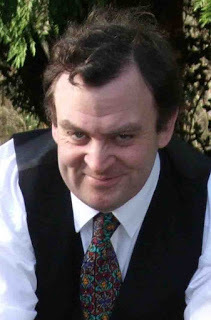 On this occasion, John Llewellyn Probert (pictured) tells us all we need to know with his overarching tale, Screams in the Dark.
On this occasion, John Llewellyn Probert (pictured) tells us all we need to know with his overarching tale, Screams in the Dark. Without further messing about, here are the stories and the casts I would choose:
Screams in the Dark (by John Llewellyn Probert): Cynical medical journalist, Robert Stanhope, is invited to attend Crowsmoor, a high-security hospital for the criminally insane. In response to several scurrilous articles he has written concerning the institution, the senior clinician there, Dr Lionel Parrish, offers him access to the hospital files and challenges him to pick through them and declare which of the blood-curdling entries relate to genuine patients and which are entirely fictional …
Robert Stanhope – Harry Lloyd
Lionel Parrish – John Llewellyn Probert himself (I mean, come on ... who could do a better job?)
The Trembling Living Wire (by Scott Edelman): Mr Iz, a deranged choirmaster, makes his prize students’ voices more soulful by secretly doing dreadful things to their families, often depriving them of those they love most. But then Celia comes along with the voice of an angel, and he singles her out for special treatment …
Mr Iz – Peter Capaldi
Celia – Georgie Henley
The Tell-Tale Heart (by Edgar Allan Poe): A nameless but nervous man is gradually driven mad by the filmy blue ‘vulture-like eye’ of the old man whom he lodges with in a grim tenement building, and conceives a plan to murder and dismember him, concealing the gruesome remains under the floorboards. But when the job is done, the killer is increasingly aware of a strange thumping sound …
The lodger – Ben Daniels
The old man – Malcolm McDowell
All the Birds Come Home to Roost (by Harlan Ellison): A successful attorney (and a user and abuser of women) goes slowly insane as some bizarre quirk of fate sees him revisited by one past girlfriend after another, all the time drawing him closer and closer to the strange and frightening Cindy …
Kirxby – David Morrissey
Cindy – Rachel Weisz
Wide Shining Light (by Rio Youers): Two old schoolfriends reunite after many years. One of them, Martin, is going through an acrimonious divorce, but the other, Richard, a thoughtful widower, is able to offer help and advice. The two become firm pals again, but Richard has some fairly dark secrets of his own, and it isn’t long before Martin is drawn into them …
Martin – Martin Freeman
Richard – Mark Gatiss
Lorna – Natalia Tena
May 7, 2021
Heck back soon chasing worst of the worst
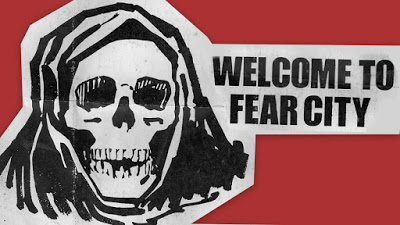
Okay … today I’ve decided that I owe all my Heck fans an update.
I’m currently completing the edits on my second stand-alone thriller for Orion (title and cover art to be revealed in the very near future), but I’m regularly hammered with emails and private messages enquiring about my Heck series and when it will resume. So, it’s clearly high time that we had a chat about that in some detail.
In addition today, on the subject of ongoing detective series, I’m very pleased to be offering a detailed review and discussion of Richard Montanari’s SHUTTER MAN, the ninth outing for Philadelphia crime-fighting duo, Byrne and Balzano.
If you’re only here for the Montanari review, you’ll find it, as is always the case, in the Thrillers, Chillers section at the lower end of today’s post. Feel free to rattle on down there straight away. On the other hand, if you want to talk a little about Heck first, stick around a bit at this end.
Rampage
The last Heck book I wrote, the seventh in the series, was KISS OF DEATH, which was published in 2018. It was described by an online reviewer as ‘a rampage of a novel,’ the central character going through an ‘ordeal of an investigation’, which at the very end ‘leaves the readers as bruised and brutalised as he is’.
 I could be wrong, but I don’t think he meant that in a bad way. The book still sits on Amazon with an average rating of 4.5 stars.
I could be wrong, but I don’t think he meant that in a bad way. The book still sits on Amazon with an average rating of 4.5 stars. Perhaps the biggest talking-point about it, though, was the ending, which appears to have caused shockwaves among my readers and is, I suspect, the main reason behind the plethora of mail I’ve been getting recently. I think it’s also the case that because two and a half years have passed since then, and I’ve had two other books – neither of them Hecks – published in the intervening time, Heck fans have been getting worried that the series has ended prematurely.
‘Surely you’re not going to leave it hanging like that?’ one asked.
‘You’re not going to end the series there,’ came another missive. ‘There has to be more.’
And possibly the best one to date: ‘I command you to write more. It won’t do to finish things like that.’
Without going into too much detail about KISS OF DEATH, because there are bound to be some thriller fans who haven’t read it yet, I purposely let the book end on a big cliff-hanger, the idea being to shake the world of crime-writing with my own personal bombshell.
Okay, I’m not sure that actually happened, but as you’ve seen, it made something of an impact. I should hastily add that it was not my original intention to keep everyone waiting a long time for Heck 8, the direct follow-up, but this period of my writing life coincided with a change of publisher. I moved from Avon at HarperCollins, who had published all the previous Heck books, to Orion, who were more interested in stand-alone thrillers. I’ve always been a stand-alone fan, so I found that new arrangement very satisfactory. However, it was always my intention to get back to Heck at some point.
Therefore, Heck 8, the sequel to KISS OF DEATH, which will pick up the story only a couple of months later, is written and now going through the editing process. It will be published, if all goes to plan, early next year. But I’m aware that this is always a fluid situation, so I’ll continue to post updates on this blog.
In the meantime, if you’re a Heck fan, and you’ve read all the books that are currently out there, you may not be aware that there are also some Heck e-stories and e-novellas you can gobble up. These are primarily set in Heck’s past – i.e. well before the recent calamities that have befallen him – but combine similar levels of action, terror and frank, in-yer-face cop stuff, and include guest appearances by a host of familiar faces from the novels.
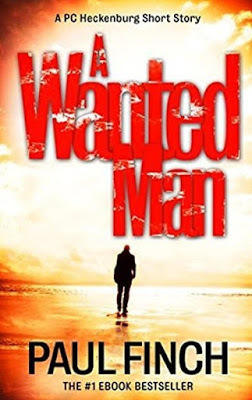 First up is
A WANTED MAN
(2015).
First up is
A WANTED MAN
(2015). Here’s the official blurb:
Get back to where it all started in this race-against-the-clock short story, as a young PC Mark Heckenburg tackles the first in a long line of very bad criminals…
It’s 1997 and PC Mark ‘Heck’ Heckenburg is patrolling the rain-lashed streets of Manchester. In the quiet hours of the early morning, nothing stirs.
Until the crackle of Heck’s police radio signals that all isn’t well out there in the darkness…
‘The Spider’ – a housebreaker notorious for his violent, vicious assaults – has come out to play. And it looks like Heck’s about to become his next prey …
Another you might like the sound of, especially as the ebook in this case is FREE (yes, you read that correctly!), is DEATH’S DOOR (2018).
Here’s the official blurb:
Obsession makes the heart grow fonder . . .
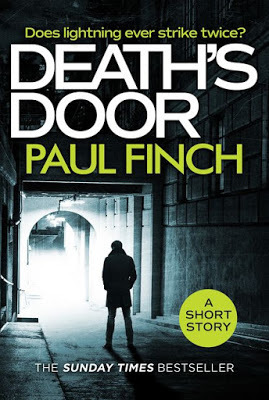 When a stalking case lands on DC Mark ‘Heck’ Heckenburg’s desk it seems pretty straightforward.
When a stalking case lands on DC Mark ‘Heck’ Heckenburg’s desk it seems pretty straightforward.But when Heck discovers that the victim lives in the same house that a young woman was brutally murdered in six years earlier, instinct tells him that it’s not so simple after all.
Before long Heck is entangled in something far more dangerous than he had expected. In a race against the clock, can Heck and Gemma stop history from repeating itself – or will they end up getting caught in the crossfire?
In the above story, Heck has by this time joined the Metropolitan Police, and is working as a divisional CID officer in London, alongside the smart and spirited DC Gemma Piper.
He’s at the same stage of his career in this next one … although I feel honour-bound to tell you (as it’s May) that this third choice has a Christmas setting, but then again, this too is FREE, and in this case you don’t even need a Kindle to read it.
In BRIGHTLY SHONE THE MOON THAT NIGHT (2017) Heck is still a divisional DC, working in Bethnal Green, but it’s Christmas Eve, a very snowy Christmas Eve, which is causing no end of transport and communications problems. Heck is on duty alone, providing solo CID night cover when Gemma Piper pops in to keep him company.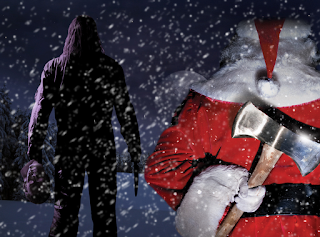 Which is perfect timing on her part.
Which is perfect timing on her part. Because an horrific crime-spree has just commenced, which is seemingly the work of a very weird bunch of carol singers …
As I say, you don’t even need an e-reader to check out this one. You can find it here: PART 1, PART 2 and PART 3.
Hopefully, if you haven’t read these extra tales, they’ll be of some interest if you’re a keen Heckie. But if you have already, fear not. As I say, the next novel isn’t too far in the future.
THRILLERS, CHILLERS, SHOCKERS AND KILLERS …
An ongoing series of reviews of dark fiction (crime, thriller, horror and sci-fi) – both old and new – that I have recently read and enjoyed. I’ll endeavour to keep the SPOILERS to a minimum; there will certainly be no given-away denouements or exposed twists-in-the-tail, but by the definition of the word ‘review’, I’m going to be talking about these books in more than just thumbnail detail, extolling the aspects that I particularly enjoyed (I’ll outline the plot first, and follow it with my opinions) … so I guess if you’d rather not know anything at all about these pieces of work in advance of reading them yourself, then these particular posts will not be your thing.
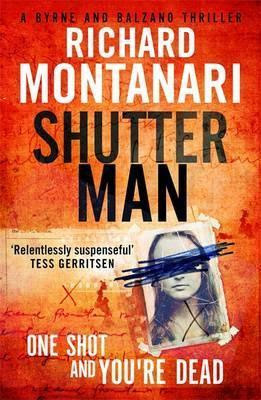 SHUTTER MAN
by Richard Montanari (2015)
SHUTTER MAN
by Richard Montanari (2015)Outline
This ninth outing for Richard Montanari’s popular Philadelphia crime-fighting team of Kevin Byrne and Jessica Balzano takes a three-stranded approach to storytelling, though all these plots quickly entwine.
First off, Byrne and Balzano are no longer working hand-in-hand. Balzano has left Homicide to join the DA’s office, while Byrne, seeming older and slightly more world-weary, now trudges the murder investigation footpath alone. Not that they won’t be working together again very shortly (as if we would expect otherwise).
When Byrne attends a horrific crime scene where a suburban family have been massacred, the mother, father and son duct-taped to chairs and shot, the mother’s face peeled off as though for a trophy, he suspects that this won’t be the last he hears of the killer (or killers) and it seems highly likely that the Homicide division and the District Attorney are going to be focussed on this case together.
The second attack follows in short-order, an elderly man tied up and shot in his own home, his face also removed. Clues now begin to emerge; for example, both the primary victims have had their birth certificates stolen, and in the second case, a handkerchief is found written on in blood. Even more disturbingly, reports are now coming in that, in the latter case, a mysterious woman in white was seen singing close to the crime scene at roughly the time when the slaying occurred.
Byrne can’t help wondering if some kind of occult ritual is being enacted here, though – and this happens early in the plot, so it isn’t a spoiler – further evidence increasingly links the murders to the Farren clan, a notorious family who for decades have tormented the population of Philly’s tough Irish neighbourhood, Devil’s Pocket.
Which brings us to the second strand of the novel.
Jumping back in time to 1976, we find Devil’s Pocket a poor but lively district. The Farrens, an innately lawless breed, who arrived here from the Old Country decades earlier, are still governed by their fearsome matriach, Moira, but while carefully polishing a reputation for being a bunch of likeable rogues, the reality is that one generation of Farren men after another, all taking their lead from the amoral grandmother they idolise, have scrounged, stolen and used violence and even murder to impose their will on their neighbours.
Local slum kids – like Kevin Byrne, for example – are very wary of them, but still, on the whole, enjoy their rough-and-tumble lives. However, on July 4 that year there is an eruption in the neighbourhood when Catriona Daugherty, a beautiful and delicate 11-year-old (and daughter of the homely but handsome local housewife, Angelica Daugherty, later to remarry as Angelica Leary), is sexually murdered. Kevin Byrne’s gang, who were particularly fond of Catriona, suspect Desmond Farren, a simple-minded, seemingly innocent member of the notorious clan because for a time there’ve been indications that he has unhealthy interests in young girls. Shortly afterwards, perhaps inevitably, Desmond Farren is also murdered, executed by a single gunshot to the back of the head, and a tidal wave of brutality is expected in response.
Back in the modern age, the third strand of the story introduces us to the youngest member of the Farrens, Michael. A good-looking and mostly polite young man, Michael harbours a deep and unusual secret. He suffered a car accident as a child, which afflicted him with the ultra-rare condition, prosopagnosia, alternately known as ‘face blindness’, which means that he is unable to recognise faces, even those of his loved ones, and therefore must carry photographs around all the time. This is something of a problem for all those who deal with him given that Michael, for all his outward charm, is also a cold-blooded killer, not just following in his family’s villainous tradition, but having emerged from his catastrophic injuries with a psychotic alter-ego, Billy the Wolf.
As these various threads gradually weave together, it isn’t long before Byrne and Balzano realise that they aren’t just pursuing an everyday serial killer, though the closer the investigation leads them to the double-tragedy of 1976, the more uneasy Kevin Byrne in particular becomes …
Review
There is a reason that Richard Montanari is regarded as one of America’s best crime writers, and it is books like Shutter Man, what may at first seem like it’s going to be just another creepy serial killer story very quickly expanding into an epic, generations-spanning crime saga with cops, criminals and multiple intriguing storylines interweaving, all kinds of clearly-drawn characters coming and going, the whole thing centred around the rough, tough real-life neighbourhood of Devil’s Pocket in the Irish quarter of Philadelphia.
It’s actually not complex. Though we move back and forth in time and change perspective regularly, the narrative bounces along at a jaunty pace, every segment dovetailing nicely with the one before and afterwards so that clarity remains at all stages, the tension increasing steadily as the grande finale approaches.
Characterwise, we’re in completely safe territory. As I mentioned earlier, this is the ninth outing for Byrne and Balzano, a pair of chalk and cheese investigators who, rather ingeniously by Montanari, both feel as if they’ve aged as the books have gone on, and yet nevertheless still speak the same language professionally and are both experts in their own fields. As relationships go, this one is completely platonic, though the duo are closely united in their drive to maintain law and order in a city known for its ‘brotherly love’ but which often – at least from a police POV – proves to be otherwise.
Byrne is an instinct cop, who, though lacking the spiky persona of Harry Bosch or the slick, organisational backup of Charlie Parker, is a steady, dependable worker, the sort you can always rely on to close a case quickly, while Balzano is the analytical brain and legal genius who perhaps was always destined for the top table. Both make for compelling characters because they are no frills ‘everymen’ and yet, thanks to Montanari’s trademark psychological analysis of his more maladjusted characters, are regularly called upon to tackle extraordinary opponents.
Even by Montanari’s normal standards, the primary antagonist in Shutter Man, Billy the Wolf, is particularly worth talking about. In some ways, he’s probably more interesting than either Byrne or Balzano, because, despite some titillating revelations about Byrne’s wild youth, our two heroes are mostly straight bats, whereas in comparison, Billy’s face-blindness gives him a unique place among fictional villains. I’ve certainly never before encountered a key character who, from one minute to the next, cannot recognise those around him and is just as likely to draw his gun and fire on friends as foes.
Aside from this condition, he has other mental frailties – severe ones. To start with, he is a psychopath, lacking any kind of rational or questioning mind when it comes to his own family, which allows him to become engulfed in the Farrens’ age-old superstitious beliefs to a point where it completely subsumes and dehumanises him, though (again typically of Montanari, whose villains are rarely 100% evil) this is done so subtly that it never removes the genuine air of pathos the author manages to evoke for this confused young man, not least because, though he has given in to his own darkness, Billy is also, quite clearly, a pawn being used in a larger, more Machievellian game.
I think it’s safe to say that Richard Montanari is not impressed by criminal clans, especially those like the Farrens who came to the United States in the belief that escaping from poverty and injustice gave them a blank cheque to employ violence and dishonesty as their new way of life. This, I feel, is the actual subtext of Shutter Man: when the sins of the past are not purposely erased, they will come back at some point to hurt you. And if they’re actually celebrated, in due course you and everything you hold dear may be destroyed by them.
But don’t worry. Montanari doesn’t go too heavy on this. It’s all layered into the story and characters without you having to put your thinking cap on. Equally subliminally, he juggles issues of justice and revenge, wondering if you can ever have one without the other and concluding, after some soul-searching, that justice, while it must remain blind, can never – whatever the provocation – be a blunt instrument by which the innocent may be punished alongside the guilty.
Again, I stress that Shutter Man is not an overly deep crime thriller, but it’s hugely intelligent and a real cut above the normal ‘psycho on the loose’ story.
If it has any weaknesses, they are minuscule. Some reviewers have complained about the plethora of police protocol detail. The same charge could be levelled at other crime writers, of course, to varying degrees, but for my money it’s not intrusive in Shutter Man and it helps create a real feeling of authenticity. Others, meanwhile, have claimed that the jumping between time zones has fuddled them, but if that’s the case, many modern novels in all genres must have the same impact, so that’s pretty much their problem.
The only criticism levelled at Shutter Man that I lean towards a little bit, is that the history of the Farrens is given to us in unnecessarily detailed exposition, so many thugs and hoodlums passing through the book’s pages that they all tend to blend into one, while at the same time, particularly in these sequences, it rises to several terrifyingly gory and sadistic climaxes, which, woven in, as they often are, with atmospheric scenes of mid-20th century Americana, hark straight to the more visceral Mafia movies that we’ve seen in recent years. But in truth, neither the extensive nature nor the melodrama of this massive backstory are unimportant when the author is looking to tell such a big story. I can’t really see that merely dropping hints about it or dealing with those issues via glimpses of faded memory would have sufficed.
It’s all subjective, of course, but I found Shutter Man an invigorating, large-canvas thriller, carefully constructed around two highly likeable (and deeper than usual) central characters and a superbly mysterious and yet sympathetic villain.
And now, here we go again, I’m going to be dumb enough to try and cast the main characters myself in the event that Hollywood, or someone like that, comes a-knocking. I don’t think they have done yet, but you never know, it may only be round the corner (and what a treat that would be).
Kevin Byrne – Patrick Wilson
Jessica Balzano – Alyssa Milano
Michael ‘Billy the Wolf’ Farren – Jamie Dornan
Anjelica Leary – Laura Dern
Moira Farren – Fionnula Flanagan
(The image of the Christmas killers comes to us from DeviantArt and has no actual connection to any of these publications. Likewise, the pamphlet at the top, which was circulated in New York in the 1970s, a time when the city was suffering an epidemic of violent crime, not least the Son of Sam killings).
April 13, 2021
At last getting back to some kind of normal
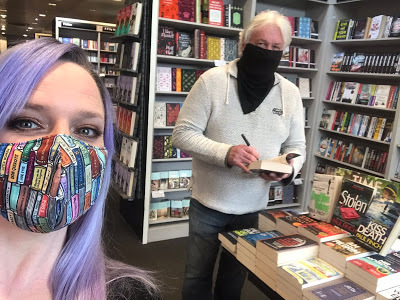
Well, life is finally getting back to something approximating normality. The pub beer gardens reopened yesterday, which was a huge relief for lots of us. More important than that, for me at least, our non-necessary shops were also allowed to reopen, which, on a lovely spring day as we had yesterday seemed to bring town centres to life all across the country.
I know there are lots of hoops to jump through yet, and there’ll be plenty more concerns before we hit full recovery, but if nothing else, it feels as though we’ve come a long way since those dull, dark, deep-frozen nights in December and January when I could walk my dogs through Wigan and Standish and see everything closed and scarcely a living soul.
Anyway, to celebrate this change for the better, I yesterday received a most unexpected treat. Check the pic above and read on for the details.
Alas, it’s not all good news this week. I’ll also be talking a little today about the loss of a friend (albeit one I haven’t seen in the flesh for several years) and a very important figure in genre fiction. More details about that one further down too.
On top of everything else, I’m now in the process of compiling TERROR TALES OF THE SCOTTISH LOWLANDS. It’s far too early to talk about it in detail yet, but I’ve been getting some great fiction in for it, while the non-fiction I’ve collected is, as usual, hair-raisingly chilling. Keep reading and I’ll drop a few mischievous hints.
On the subject of original short-form horror, I’ll also be reviewing the VALANCOURT BOOK OF WORLD HORROR STORIES #1 today, as edited by James D Jenkins and Ryan Cagle.
If you’re only here for the Valancourt review, that’s cool. As ever, you’ll find it in the Thrillers, Chillers section at the lower end of today’s blogpost. Feel free to rattle on down there and get stuck in, though if you’ve got a bit more time, perhaps you’ll be equally interested in …
Celebration Day
Yesterday’s full reopening of walk-in retail came as a big respite to many in England, not least because lots of people I know are book addicts, readers or writers or both, and to be able to go into shops and browse along bookshelves again was a lunchtime or weekend joy which, up until yesterday, they’d been torturously denied for months on end.
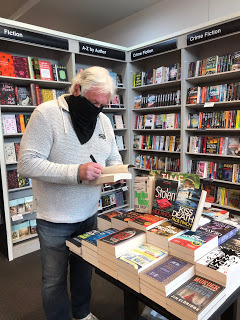 Now, there’s no doubt that the book-buying public has been well-served by the online sector (not to mention the nation’s delivery men and women), who’ve done a sterling job during these dark days. But there’s something inherently magical about being able to pop into bookshops as well: the relaxing ambience, the quiet, respectful chatter, the soft rustle of pages as you and others like you search eagerly for the next find. Imagine my delight yesterday, therefore, when Kate, the irrepressible manager at Waterstones Wigan, my local branch (pictured at the top with my good self), contacted me in the morning and asked if I’d be interested in marking their grand reopening by popping in and signing those books of mine that they had in stock.
Now, there’s no doubt that the book-buying public has been well-served by the online sector (not to mention the nation’s delivery men and women), who’ve done a sterling job during these dark days. But there’s something inherently magical about being able to pop into bookshops as well: the relaxing ambience, the quiet, respectful chatter, the soft rustle of pages as you and others like you search eagerly for the next find. Imagine my delight yesterday, therefore, when Kate, the irrepressible manager at Waterstones Wigan, my local branch (pictured at the top with my good self), contacted me in the morning and asked if I’d be interested in marking their grand reopening by popping in and signing those books of mine that they had in stock. What an honour. How could I say no?
A friend later commented: ‘It must be wonderful to be a celebrity in your own town.’
Well … I’d completely dispute that. I slipped in and out of the shop, in truth. It was a fairly unobtrusive event even though – and this was great to see – the store was nicely busy on its first day back. But there was a good feeling in the air and a really positive vibe, which I was delighted to contribute to in my own small way.
Support your local bookshop whenever you can, folks. And don’t think purely in terms of those small independents who always needs customers (though you can’t buy their wares enough, in my view). While Waterstones may be a nationwide operation, your local branch will only be there as long as people go into it. Our high streets are in a meagre enough state as it is, especially since Covid started. Let’s not also lose our booksellers too, whoever they might be.
A big loss
On a more sombre note, I was upset yesterday to hear about the death, at only 63, of JOHN PELAN , a US writer, editor and publisher of dark and weird fiction, and a huge and positive influence within the genre, not just in the States, but here in Europe as well.
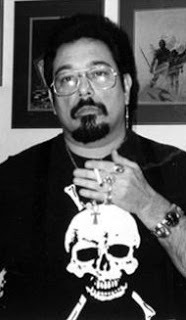 Basically, John lived and breathed the scary stuff. His suburban Seattle home, which my wife and I were very graciously welcomed into by John and his wife, Cathy, back in 2001, was, in the wise words of horror maestro Brian Keene, ‘like going into the greatest library in the world’. I couldn’t believe it as I was conducted from one room to the next, both upstairs and down, each one of which was lined with shelves groaning beneath the weight of classic horror and mystery novels and anthologies.
Basically, John lived and breathed the scary stuff. His suburban Seattle home, which my wife and I were very graciously welcomed into by John and his wife, Cathy, back in 2001, was, in the wise words of horror maestro Brian Keene, ‘like going into the greatest library in the world’. I couldn’t believe it as I was conducted from one room to the next, both upstairs and down, each one of which was lined with shelves groaning beneath the weight of classic horror and mystery novels and anthologies. But John wasn’t just a collector. As I said, he wrote himself, he edited, he published (he particularly favoured bringing forgotten classics back to public attention), but perhaps most important of all, he was a huge supporter and promoter of new talent. I was fortunate enough to come under his wing when I was starting out, as did many others I know (Brian Keene, Tim Lebbon, Michael Arnzen, Matt Cardin etc, to name a few). John keenly explored rafts of new and prospective writing. He was a towering figure to new authors, and yet unfailingly polite, constructive and encouraging about material he considered to be promising.
A priceless mentor and adviser to so many of us. He’ll be sorely missed.
Rest in peace, big guy.
The Low Road
And now all things Scottish. Or at least Lowlands Scottish.
It’s an oddity, but the popular song Loch Lomond , sung lustily by many a Sassenach and his family as they head north for a holiday in that green and beautiful land beyond Hadrian’s Wall, particularly the catchy chorus line – ‘O ye’ll tak’ the high road, and I’ll tak’ the low road, And I’ll be in Scotland a’fore ye – originated as a Jacobite ballad featuring a brave rebel who returned to Scotland before those of lesser courage as he’d been despatched there by the English hangman.
Yes. A grimmer ditty than many may realise.
But this nicely sums up the attraction to me that the Scottish Lowlands presented when I was looking to edit my next volume of TERROR TALES.
Often seen as a gentle, benign landscape compared to the bleak fastnesses of the Highlands, the Lowlands boasts scenic ranges of hills, glens and lochs all of its own. There is much wilderness to be found there, though thanks to the Lowlands’ proximity to Scotland’s two largest cities, Edinburgh and Glasgow, it tends to be more populous and somewhat less geographically dramatic. However, in terms of history and mythology, the Lowlands is considerably more blood-soaked and brutal.
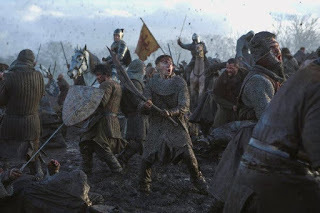 This was the realm where most of Scotland’s battles with England were fought, but also where civil strife took its bitter course, and where reiver clans raided and feuded. As such, the landscape is studded with castles, towers, gibbets and other relics of war and violence, while the ghosts that haunt it are a veritable who’s who of Scottish notables, everyone from the Black Douglas (beheaded in 1463) to Lord Darnley, husband to Mary, Queen of Scots (strangled in 1567).
This was the realm where most of Scotland’s battles with England were fought, but also where civil strife took its bitter course, and where reiver clans raided and feuded. As such, the landscape is studded with castles, towers, gibbets and other relics of war and violence, while the ghosts that haunt it are a veritable who’s who of Scottish notables, everyone from the Black Douglas (beheaded in 1463) to Lord Darnley, husband to Mary, Queen of Scots (strangled in 1567). The Lowlands were also immortalised by a plethora of poets and rural balladeers, who painted it as lovely but mysterious, spinning vivid tales of witches, warlocks, brownies and selkies. Even the great cities of this region, now among the greatest in Europe, once harboured evil reputations, Edinburgh (or ‘Auld Reekie’), formerly a filthy slum notorious for plague and atrocity, Glasgow renowned for its bad old days of sectarianism and organised crime.
The book is only due out from Telos in the autumn, so I won’t say much more about it in terms of revealing detail. Though I will mention again that I’ve had some superb submissions already, while the local folklore is living up every inch to the horror I anticipated. And just to whet your appetites even more, here are some pics I’ve purloined from the Net (credits will be given at the bottom of today’s column, if it’s possible to find them), which I hope hint strongly at the chills to come. Feel free to play a guessing about who or what these images refer to.
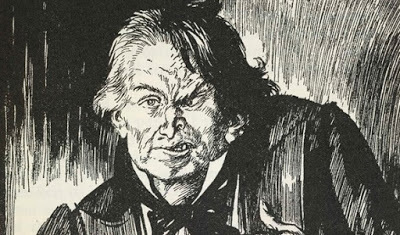
Gentleman by day, killer by night ...
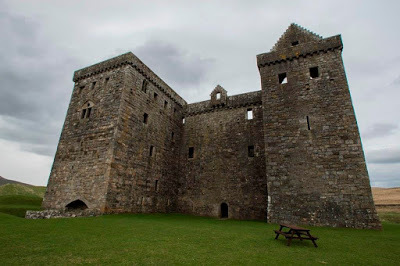
True life horror embodied in border stronghold granite ...
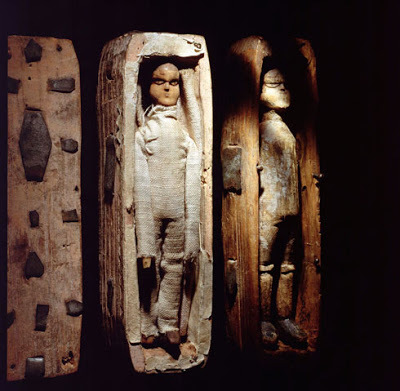
A host of miniature corpses found buried in miniature coffins ...
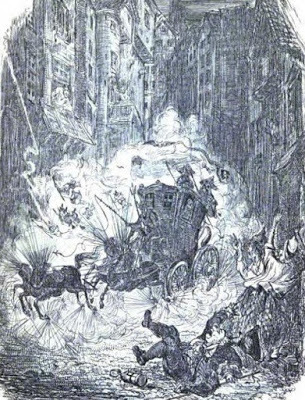
A hellishly burning coach, crashing around Edinburgh’s midnight streets ...
THRILLERS, CHILLERS, SHOCKERS AND KILLERS …
An ongoing series of reviews of dark fiction (crime, thriller, horror and sci-fi) – both old and new – that I have recently read and enjoyed. I’ll endeavour to keep the SPOILERS to a minimum; there will certainly be no given-away denouements or exposed twists-in-the-tail, but by the definition of the word ‘review’, I’m going to be talking about these books in more than just thumbnail detail, extolling the aspects that I particularly enjoyed … so I guess if you’d rather not know anything at all about these pieces of work in advance of reading them yourself, then these particular posts will not be your thing.
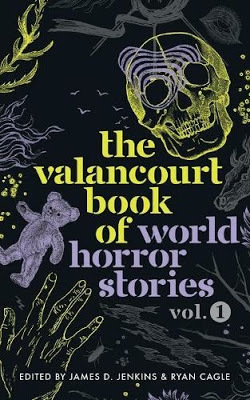 VALANCOURT BOOK OF WORLD HORROR STORIES #1
VALANCOURT BOOK OF WORLD HORROR STORIES #1
ed. by James D Jenkins and Ryan Cagle (2020)
Valancourt Books are fast becoming the go-to publishers for quality but out-of-print fiction. An American independent firm, they were started by James Jenkins and Ryan Cagle in 2005, their aim to rediscover and republish masterworks from former eras that are now largely forgotten. Thus far, their focus has been divided about equally between gay fiction and Gothic horror fiction, many of the latter titles dating way back into the 1800s, though quite a few were published as recently as the 1980s.
But Valancourt are also increasingly interested in putting out horror anthologies, particularly – and this appears to be very in keeping with their raison d’être – bunches of tales that, for whatever reason, have slipped under the radar of the modern western reader.
No horror anthology that I’ve seen and read in many a year more appropriately meets this ambition than the Valancourt Book of World Horror Stories . But before we discuss it in detail, I’ll let the publishers themselves explain the purpose behind this book in their own official blurb:
What if there were a whole world of great horror fiction out there you didn't know anything about, written by authors in distant lands and in foreign languages, outstanding horror stories you had no access to, written in languages you couldn't read? For an avid horror fan, what could be more horrifying than that?
For this ground-breaking volume, the first of its kind, the editors of Valancourt Books have scoured the world, reading horror stories from dozens of countries in nearly twenty languages, to find some of the best contemporary international horror stories. The stories in this volume come from 19 countries on 5 continents and were originally written in 13 different languages. All 20 foreign language stories in this volume are appearing in English for the first time ever. The book includes stories by some of the world's preeminent horror authors, many of them not yet known in the English-speaking world …
Two things struck me straight away about the Valancourt Book of World Horror Stories 1 .
Firstly, that it’s already being billed as Volume One. Well, if that’s not a good sign, nothing is. Valancourt certainly appear to have strong confidence in their titles. And why not, as they’ve been a success story for quite a few years now. Let’s hope that this clear indication they intend the series to run plays out in full.
Secondly, that the quality of the stories in this collection is extraordinarily high. It’s often the case, I think, that when you pick up any kind of anthology, you probably won’t expect much more than half of its contents to really delight you if for no other reason than tastes differ. There’ll always be a few stories that you’re okay with but won’t really remember, probably one or two more that you’re indifferent to, and maybe a couple that you absolutely hate. Either way, it’s a rarity that anyone closes an anthology satisfied that every contribution thrilled and excited them.
I can’t honestly claim that that’s the entire story here, and I’m sure that editors Jenkins and Cagle would not expect that. But the vast majority of the fiction here is simply superb. And even the tiny handful of stories that didn’t blow me away are all excellently written (and translated – we must never forget the various translators, who have done an excellent and enormous job with this particular volume).
One thing that did surprise me is the lack of obvious folk-horror. It’s a current trend in the genre for authors to go rural, digging up ancient tales and arcane customs, and imposing them on the modern world. I expected the Valancourt Book of World Horror Stories to go exactly that way. Folklore is a rich seam to tap if you’re looking to scare people, and there must be many non English-speaking authors who dip regularly into that vast reservoir of world mythology lying beyond the boundaries of the Anglosphere. But aside from a couple of stories, this doesn’t really happen here.
What we’ve got instead is a very eclectic range of material, brought to us from countries as culturally and geographically diverse as Ivory Coast and Sweden, Mexico and Canada. But the bulk of it falls into one of two categories: either traditional horror stories in that they contain ghosts, devils, monsters etc, or the bizarre, leaning towards slipsteam and surrealism. However, without fail, all are eerie, disturbing and ultra-dark.
If we look at the more traditional stories first, they range over a variety of subject matter, but all are frightening in the best possible way.
Take Twin Shadows , penned by Québécois author Ariane Gélinas. It tells the eerie tale of young Floriane, who grows up in a huge spooky old house, but who has a constant companion in the form of a twin sister that no one else cares about or even, if the truth be told, knows about. This one would sit comfortably in any edition of classic ghost stories. A similarly Gothic tale, albeit perhaps even more frightening, is Backstairs , written by Sweden’s Anders Fager, a period piece that takes us to another dismal mansion with a chilling mystery at the heart of it (this is an astonishingly good piece of work, so more about this one later).
More contemporary in tone but still packed with classic tropes we have Dutch writer Christien Boomsma’s The Bones in Her Eyes , a story of witchcraft and dark magic set in the suburbs (though this is another top quality contribution, so more about this one later as well). Less ghostly, but no less mysterious and disturbing, is Senior Ligotti by Mexico’s Bernard Esquinca. In this one, Estaban, a struggling writer with a pregnant wife falls for the charm of Senior Ligotti, an elderly but wealthy reader, who offers him a cheap apartment and access to a major publishing house in return for friendship. Unfortunately, Ligotti’s idea of friendship is not Estaban’s.
From Finland comes a classic monster story. Pale Toes by Marko Hautala is not to be read by anyone who suffers from claustrophobia. It features a married couple, mismatched in age, their relationship clearly failing, but who take a hiking holiday along the Franco-Spanish border and meet a scruffy Englishman who promises to show them subterranean cave drawings that no one else has ever seen. They are wary of accepting, but in the end, unfortunately, they do.
Perhaps the one clear occasion when Valancourt Book of World Horror Stories does stray into the realms of folk-horror is with The White Cormorant by Norwegian writer, Frithjof Spalder, though it is set in Ireland. It concerns a cocky young fisherman who opts to sale single-handed around a deadly mass of ocean rocks, but who is subsequently wrecked in the foam and then saved by a mysterious being, as a result of which encounter his life will never be the same again.
Leaning a little away from traditional themes towards a more surreal form of horror, we have two other pieces that I’ll be pleased to talk a little bit more about later on. Down, in Their World by Romanian writer, Flavius Ardelean, has the typical air of a dark Slavic fairy tale in that it’s instructive as well as terrifying. Perhaps one of the creepiest stories in the entire book, though, is provided by Hungarian author, Attila Veres, The Time Remaining , an apparently gentle study of a child’s attachment to his favourite childhood toy, which rapidly descends into a nightmare.
More firmly in the world of the weird, Spain’s Jose Maria Latorre provides Snapshots , a short quirky chiller in which a young man heads for a city centre photobooth, only to find that each set of images shows him looking older than the time before. Thinking the machine faulty, he determinedly continues, but the pictures now show him ageing fast …
From Italy, and, if anything, even more disturbing is Luigi Musolini’s deeply psychological Uironda , in which a depressed truck-driver, worn out and at the end of his tether, takes on endless long, hard jobs, but hears increasingly about a mysterious turn-off leading to a mythical city (Uironda), which no sane trucker would ever want to visit … so why does our weary hero feel drawn there?
Also from the world of deranged psychology comes Cristina Fernandez Cubas’ much-reprinted Spanish parable, The Angle of Horror . In this tale, which is already famous in the Spanish-speaking world, young Julia is delighted when her beloved older brother, Carlos, returns from a trip to England, only to find that he is behaving strangely. The rest of the family suspect he is in love, but Carlos confides in Julia that he has discovered the ‘horror of the angle’. This is a subtle one by any standards and probably bears a second reading, though much more on the nose is Peruvian writer Tanya Tynjala’s memorable The Collector , which sees a young man, Julian, so desperate for intimate relations with the beautiful Diana, that eventually, on a promise, he arranges to meet her at the rundown café attached to an isolated gas station. Almost immediately, though, it feels as if something isn’t quite right.
More complex, though no less sinister, we have two genuine slices of dark surrealism. Firstly, in Menopause , courtesy of Ivory Coast author, Flore Hazoume, which takes us into the heart of a small community where, for no obvious reason, all the women are young and fair and all the men wise and mature. Secondly, equally concerned with issues of gender and inequality, from Ecuador, Solange Rodriquez Pappe provides Tiny Women , which commences with a woman attempting to clean out her infirm parents’ dirty, trash-filled house, and discovering a colony of tiny women living like insects in the debris. They aren’t easy to disperse, but then her philandering, sexist brother arrives for the night, and all hell will soon be let loose.
I’m not going to talk about every story in the Valancourt Book of World Horror . There are obviously many others, 21 in overall total, so be under no illusions, this is a big chunky anthology with lots more going for it than I have mentioned here. On top of this, editors Jenkins and Cagle introduce each entry in concise but informative fashion, ensuring that we know all we need to in advance of what in many cases may be our first foray into high-quality ‘foreign language’ horror. For that reason alone – never mind that this book features genuinely scary fiction almost all the way through – I urge you to take a chance on it. And at the same time express my fondest hope that this really is only Volume One of what will shortly become an ongoing series.
And now …
WORLD HORROR STORIES – the movie.
I doubt that any film maker has optioned this book yet (thus far, at least), and who knows how likely it is ever to happen, but as this part of the review is always a bit of a laugh, here are my views just in case some major player decides to transfer it to the big screen.
Note: these four stories are NOT the ones I necessarily consider to be the best in the book, but these are the four I perceive as most filmic and most right for adaptation in a compendium horror. Of course, no such horror film can happen without a central thread, and this is where you guys, the audience, come in.
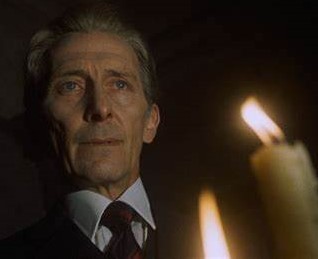 Just accept that four strangers have been thrown together in unusual circumstances which require them to either relate spooky stories or listen to them. It could be that some doctor must judge the sanity of his patents from them, a la Asylum (pictured), or maybe the tales are spun to bored travellers by a mysterious tarot card-reader on a trans-continental train in an international version of Dr Terror’s House of Horrors.
Just accept that four strangers have been thrown together in unusual circumstances which require them to either relate spooky stories or listen to them. It could be that some doctor must judge the sanity of his patents from them, a la Asylum (pictured), or maybe the tales are spun to bored travellers by a mysterious tarot card-reader on a trans-continental train in an international version of Dr Terror’s House of Horrors. Without further messing about, here are the stories and the casts I would choose:
The Bones in Her Eyes (by Christien Boomsma): Caring Tara runs over a pet cat while driving through the suburbs, and regretfully takes the dying animal to its aged owner, Mrs Gottlieb. But the nice old lady seems strangely unconcerned, while Tara then goes on to suffer a succession of eerie dreams, about a cat that cannot die and a small, neat house filled with necromantic magic ...
Tara – Sylvia Hoeks
Mrs Gottlieb – Willeke van Ammelrooy
Down, in Their World (by Flavius Ardelean): Four poverty-stricken men attempt to steal iron from an abandoned mine in which a paedophile killer once dumped his victims. Increasingly they feel they are not alone down there, and when one of them is critically injured, two go for help, leaving only the casualty and his brother behind …
Stere – Vlad Ivanov
Nicu – Alec Secăreanu
The Time Remaining (by Attila Veres): A distressed child is persuaded by his mother that Villi, his favourite cuddly toy, is sick and dying. The child can’t have this and decides to do everything in his power to keep the ailing Villi alive…
The Child – You’ll have to fill this blank in yourselves, as I know no Hungarian child actors.
Backstairs (by Anders Fager) A psychotherapist investigates the case of a wealthy widow’s daughter, a pretty girl who is constantly beset by the most horrific nightmares and who even manifests cuts and bruises as if these terrifying fantasies are actually real …
Elvira – Alicia Vikander
Dr Lohrman – Stellan Skarsgård
Mrs Wallin – Lena Endre
(Ownership of the pix used in today ’s blogpost are as follows: Kate took the shots at Waterstones, while the movie stills come from Outlaw King (2018) and Asylum (1972). The image of Jekyll and Hyde comes from the advertising accompanying a British Library event concerning The Strange Case of Dr Jekyll and Mr Hyde; I ’m not sure who the actual illustrator was, but if he or she would like to make themselves known, I will happily post a credit. The picture of the murder dolls comes to us from the National Museum of Scotland, while the burning coach is West Bow, Midnight by AA Ritchie. I ’ m unaware who took the photo of the late, great John Pelan, but again, if the photographer would like to make him or herself known to me, I will happily post a credit.
January 29, 2021
Ever hit the big screen without knowing it?

So, what do you do when you cheerfully boot up your PC in the morning and immediately see references to a new movie or TV series that sounds remarkably similar to your last novel or play or short story?
It’s happened to me at least three times now, once quite recently … so yes, that’s going to be the subject of today’s chit-chat.
Of course, when it comes to creating exciting fiction, good ideas are good ideas, and you can never assume that you’re the only person who hatches them. In fact, there are some subjects we’ve seen tackled again and again throughout the history of literature, and so, while we’re on the general subject today of familiar ideas, the book I’ll be reviewing this week is Giles Blunt’s extraordinarily chilling horror novel, COLD EYE.
The concept behind this one is familiar in all kinds of ways, but carried off with such aplomb that I was shaken to my core when I read it. I ’ ll admit right now that this was the first novel I’ve read in quite a while that I was still thinking about, discomforted, several days later.
If you’re only here for the Giles Blunt review and discussion, no problem. As always, you’ll find it in the Thrillers, Chillers section at the lower end of today’s blogpost.
However, if you’re interested in discussing other stuff too, perhaps you might want to stick around a while at this end first, for …
Great Minds
Great minds think alike, or so they say. As I mentioned in my intro today, no one has a monopoly on cool ideas. Two completely different people can easily come up with something similar and each think they are the sole inventor of it. Yes, I’ve heard all that before, and it’s true … but that didn’t prevent me feeling royally miffed a couple of weeks ago when I first heard about upcoming Netflix movie, The Formula, which is set to star Robert De Niro and John Boyega.
Here’s the basic outline: a young Formula One star is forced to work as a getaway driver in order to protect his family.
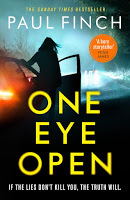 And, just out of interest, here’s a key element of the outline to my crime novel of August last year,
ONE EYE OPEN
: a Formula One star sees his career flagging and so opts to work as a getaway driver in order to earn some quick money.
And, just out of interest, here’s a key element of the outline to my crime novel of August last year,
ONE EYE OPEN
: a Formula One star sees his career flagging and so opts to work as a getaway driver in order to earn some quick money. Now, okay … I’m not suggesting for one second that Netflix have taken inspiration from me. It’s almost certainly the case that no one in that august institution has ever even heard of Paul Finch and ONE EYE OPEN. Let’s be honest, it’s probably not so original an idea anyway. It’s highly likely that somewhere else in the world of fiction, perhaps long before my novel was published, a legitimately trained super-driver was compelled to put his skills to criminal use.
And that latter is possibly the most valid point of all. None of us really knows how original our ideas are. There’ve been millions of novels and screenplays created over the decades, and millions more that were never published or filmed. We can never know for sure whether or not our latest high concept piece is truly the ground-breaker we like to think.
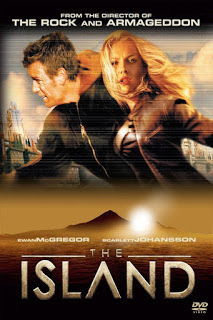 But that doesn’t stop it being frustrating when this happens. As a friend said to me recently when I mentioned it: ‘Shame. That’s any potential film or TV deal gone.’ You would certainly think so, but the film or TV deal might never have come along anyway. It’s a blow you’ve just got to ride with.
But that doesn’t stop it being frustrating when this happens. As a friend said to me recently when I mentioned it: ‘Shame. That’s any potential film or TV deal gone.’ You would certainly think so, but the film or TV deal might never have come along anyway. It’s a blow you’ve just got to ride with. You’ve also got to be wary of egocentricity. Never assume that you are the only person this has happened to.
One of the best examples I ever heard about was the 2005 Dreamworks film, The Island, which basically involves members of a mysterious enclosed community discovering that they are clones being used for organ harvesting, and subsequently seeking to escape. And yet, nine years earlier, in 1996, English novelist Michael Marshall Smith wrote the novel Spares, which focusses on the caretaker of a secret farm where cloned humans are being kept for spare parts.
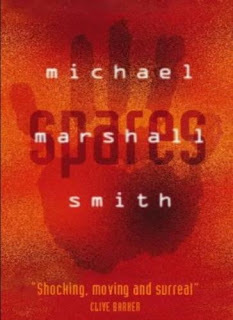 The similarities between those two projects sound remarkable to me. And it’s all the more worrying when you hear that Smith’s novel was briefly optioned by Dreamworks in the late 1990s.
The similarities between those two projects sound remarkable to me. And it’s all the more worrying when you hear that Smith’s novel was briefly optioned by Dreamworks in the late 1990s. Smith chose not to take any kind of legal action, but I’d imagine that it rankled with him for years afterwards. One that certainly rankled with me, much more so than the apparent similarities between ONE EYE OPEN and The Formula concerned Dirty Work.
This was the screenplay for a two-part television drama, which I wrote in the late 1990s, featuring a blue-collar Manchester police detective called Lucy Clayburn. Lucy came from a poor background, her mother a depressed single parent, her younger brother a drug addict, all of which meant that she was regarded with suspicion in her job. Even more so when she was co-opted onto a special unit investigating a series of brutal underworld murders and began to suspect that they’d been carried out by rogue police officers looking to cover up misdemeanours by their colleagues during earlier investigations.
At the time, a number of historical miscarriages of justice were being exposed in the UK and some police officers who’d misbehaved in the past were being publicly censured. So I thought it was very timely. Others seemed to agree, including an independent television producer I’d worked with before, who was keen to get it made.
For various complex reasons, it didn’t happen – and that’s a story all writers will be familiar with. Speculative work so rarely seems to pay off, but all you can do is take it on the chin and move on. However, not long afterwards, my producer friend contacted me to tell me how irritated he was that certain people he’d shown Dirty Work to appeared to have been influenced by it. A new British police drama was by then in the works, the basic concept of which bore one or two similarities to my earlier script.
Was anyone actually involved in the new show who my producer mate had show my original script to?
Yes.
Once again, I can’t sit here and assert that an idea was stolen. Because it most likely wasn’t. The similarities were small, though their appearance on television in a completely different property meant that I had to make some hefty changes to the Lucy Clayburn back-story when I was novelising her exploits in the 2010s.
But good grief, it does rankle
It’s important to remember that there’s no copyright on ideas. Because, as I say, people innocently come up with similar concepts, or, even if they don’t, they can’t always help being influenced by something else. An idea might have been put into the back of your mind by something that impressed you, and when it pops to the front again years later, you think it’s all your own.
You can’t always assume the worst. Even the great geniuses of the world have, unwittingly or otherwise, trespassed on other people’s territory. Shakespeare’s most popular play during his lifetime, Romeo and Juliet, which premiered in 1597, tells much the same story as The Tragical History of Romeus and Juliet, which Arthur Brooke translated from the Italian original in 1562.
Even two of our most beloved entertainers, Morecambe and Wise, great originators of classic knockabout comedy, are perhaps best-remembered today for their breakfast-making stripper routine, which first aired in 1976. And yet Benny Hill, a lesser light in TV comedy in modern eyes, performed a very similar sketch, Breakfast Cha-Cha, circa 1968.
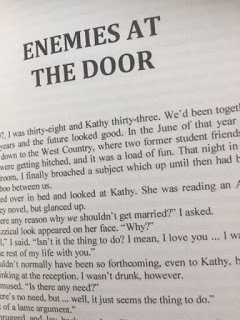 I think the most unlikely personal example I can come up with was when my short story
Enemies at the Door
was published in
The Third Alternative
in 1996. It focussed on a veteran of the Falklands War, who’d suffered a severe head-wound, and as he grows older, begins to detect hidden doors leading to backstage corridors connecting with various periods of his life, which have clearly been nothing more than scripted entertainment for an unknown audience. When he seeks to escape, he encounters violence.
I think the most unlikely personal example I can come up with was when my short story
Enemies at the Door
was published in
The Third Alternative
in 1996. It focussed on a veteran of the Falklands War, who’d suffered a severe head-wound, and as he grows older, begins to detect hidden doors leading to backstage corridors connecting with various periods of his life, which have clearly been nothing more than scripted entertainment for an unknown audience. When he seeks to escape, he encounters violence. Two years later, the Jim Carrey vehicle, The Truman Show, came out, in which an ordinary man discovers that his entire life is a TV show for the masses; he too tries to escape.
Am I saying the latter was in any way influenced by the former? No (for all the reasons I’ve already underlined, but also because The Truman Show was most likely inspired by Joseph Michael Straczynski’s 1988 episode of The Twilight Zone, Special Service, which was very similar in concept – and which just goes to show that I too, unknowingly at the time, had ventured a little bit into someone else’s idea).
But I won’t pretend that it didn’t still rankle.
THRILLERS, CHILLERS, SHOCKERS AND KILLERS …
An ongoing series of reviews of dark fiction (crime, thriller, horror and sci-fi) – both old and new – that I have recently read and enjoyed. I’ll endeavour to keep the SPOILERS to a minimum; there will certainly be no given-away denouements or exposed twists-in-the-tail, but by the definition of the word ‘review’, I’m going to be talking about these books in more than just thumbnail detail, extolling the aspects that I particularly enjoyed (I’ll outline the plot first, and follow it with my opinions) … so I guess if you’d rather not know anything at all about these pieces of work in advance of reading them yourself, then these particular posts will not be your thing.

COLD EYE by Giles Blunt (1989)
Outline
Thirty-something New York artist, Nicholas Hood, has it all. Married to a beautiful and sensitive wife, Susan, who also happens to be an acclaimed professional musician, he owns a comfortable Manhattan apartment and shares a spacious studio with his best friend, Leo Forstadt. His paintings sell reasonably well; not sufficiently to make him rich, but they are appreciated enough to occupy space in a nearby gallery, where they are regularly viewed by art-lovers and critics alike, which means that his name at least is known.
However, Nick Hood is not a happy man. Convinced that his work is worth more than he manages to earn from it, wondering if his chosen subject-matter – murder – is what puts the big buyers off, but determined to stick with this as it totally obsesses him, he waits impatiently for the day when his talent will be trumpeted from the rooftops.
Nothing about Hood is immediately attractive. He is cool and unaffectionate with his wife, he flirts continually with beautiful life model, Valerie Vale, he is unimpressed by Leo’s stolid approach to art, figuring that his friend will always be a journeyman painter because he has no real ambition, and he is belligerently jealous of the other artists he shares space with in the gallery, especially those who do well, certain that they have simply been lucky while he has not.
Hood’s attitude is even reflected in his style of work. It is remarked on by various characters in Cold Eye that he is too dispassionate about his controversial subject, displaying more interest in the architecture filling up the backgrounds than the personal tragedy playing out in the foreground (where someone is invariably being violently killed or committing suicide). But he peevishly dismisses such viewpoints. As far as Hood is concerned, he is a genius and it’s only a matter of time before others realise this – but when will his moment arrive?
Most creatives could probably identify with this yearning to be discovered. Many who produce art are often their own worst critics and may be irrationally in love with their output, thus failing to recognise its flaws. Nick Hood is one such. In fact, so narcissistic is he that when his work features in a high-profile exhibition, and the arts correspondent for the New York Times reviews every piece of work positively save those of Hood’s, which (out of kindness, in his view) he doesn’t mention at all, the young painter is almost driven out of his mind.
Drunk and despairing, he is on the verge of suicide when he encounters one Andre Bellisle, a stunted and disfigured dwarf who is also staggeringly wealthy. Bellisle claims to be an admirer of Hood’s work and makes the astonishing claim that if Hood will come under his wing, he can guarantee success. Hood has no idea what this means and at first is repulsed by the grotesque little man, but then Bellisle gives several demonstrations of his influence: getting Hood into the Rockefeller Centre Rainbow Room when it is closed; even more mysteriously, predicting the imminent death of a bar-room reveller, which duly happens; and then, in a display of power that really swings it, anonymously arranging for several of Hood’s pre-existing paintings to be sold to overseas collectors for outrageous sums, which catapults the struggling painter’s name into a much higher category.
In no doubt that his ship has come in, Hood puts himself in Bellisle’s charge. What follows, however, is a series of terrible incidents on the streets of New York, which somehow or other, Bellisle is able to predict, and which Hood is there to mentally photograph and thus recreate on canvas, creating some of the most astonishingly vivid and horrific paintings of his career. Fame and fortune follow, but of course it isn’t going to be that easy.
If Hood’s own personality changes (for the worse!) don’t indicate to him that something is unnatural and wrong about this arrangement, Andre Bellisle’s gradual physical transformation into an angel-like being ought to. And yet that doesn’t either, and Nick Hood is now on the fast-track to some truly terrifying events …
ReviewThe pros and cons of the Faustian pact is a common subtext in horror, but rarely have I seen it as effectively and chillingly investigated as in Cold Eye .
Remarkably, this was Canadian author Giles Blunt’s first book, so I must give him every kind of accolade for presenting me with a story that is easily one of the most disturbing I’ve ever read, and which finally reaches such a crescendo of horror that it kept me awake that night (genuinely – and I don’t make that claim lightly).
Blunt is probably better known these days for his superb John Cardinal series, which are hardcase crime thrillers, but in Cold Eye he started out with a stand-alone and unashamedly, almost from the word ‘go’, wove it with the supernatural. Whether or not this is a genre he intends to revisit in the future I have no idea, but I sincerely hope he does.
Not everything about the book is perfect. I found Nick and Susan’s relationship a trifle odd, Susan perhaps a bit too good to be true (and yet someone who’s judgement clearly lapsed badly when she chose the man in her life), while in the character of cop, Gary Lauzon, Blunt makes a big assumption that inner-city Homicide detectives would have the time to play cat-and-mouse games with unlikely suspects in deaths that might not even be suspicious. But it would be churlish to make too much of this. It’s all good fun, and Nick and Lauzon’s continued not-so-accidental meetings work well to raise both the tension and the stakes.
We’ve already touched on the flawed character that is Nick Hood – he’s much more antihero than hero – every one of his unlikeable traits ramping itself up as Bellisle’s baleful hold on him strengthens. But one thing I particularly liked about Cold Eye, and Nick Hood’s place in it, is the way his slide into wickedness happens with incremental slowness, neither he nor we really noticing it. To me, that’s a vivid and authentic depiction of the way human corruption works. There is an event late on in the book, which I won’t comment on in detail for fear of spoiling, except to remark that it really shocked me, I mean literally jolted me out of my seat … and yet when I sat back and thought about it, I realised that it shouldn’t have shocked me at all. Nick Hood has become so dangerously self-centred by this point that he’s lost all grasp of real life and the cost and consequence of not living it like a normal citizen.
This leads us to the other main villain of the piece, Andre Bellisle himself. Giles Blunt doesn’t spend too much time detailing this character other than in describing his astonishing physical changes. But that’s because he doesn’t really need to. It won’t be much of a spoiler if I point out that Bellisle is much more than an ordinary man. As I mentioned before, we all know the story of Faust, and have seen it done umpteen times, the demonic force at the heart of it coming in all shapes and sizes.
That said, Bellisle is an interesting example. His name isn’t hugely dissimilar to ‘Belial’, a demon-prince who in Milton’s Paradise Lost epitomises self-indulgence. And indeed, while much of Cold Eye runs like a contemporary thriller, its modern-day Manhattan setting and superficially mundane focus on the greed and potential ruthlessness of humans unhappy in their everyday lives, he could easily have been imported into it from a Gothic horror novel: the hunched and twisted dwarf with the raddled face, and yet who is cultured in his manners and speech and limitlessly wealthy and influential
A couple of reviewers have taken issue with this, arguing that Bellisle’s presence in Cold Eye is a little too on the nose. But not me. I found him the perfect complement this very grim tale of envy and ambition.
Cold Eye is a must-read for all fans of dark fiction. It was first published in 1989, which means that by now it may be flying under quite a few radars, but don’t let that stop you. It’ll chill you to the bone and punch you in the gut. So, don’t mess around. Read it. And weep.
Cold Eye has already been made into a movie once, the French film, Les Couleurs du Diable, in 1997, but it’s yet to hit the screen in English, So, as always, I’m being ill-advised enough here to suggest a cast in case this ever comes to pass. I mean, they’d obviously come to me first.
Nick Hood – Antony Starr (older than in the book, but he does flawed characters so well)Susan Hood – Rebecca Ferguson
Andre Bellisle – Antony Sher
Gary Lauzon – Nick Offerman
Leo Forstadt – Thomas Kretschmann
Valerie Vale – Alice Englert
January 3, 2021
Gloomy year but with some lights in black
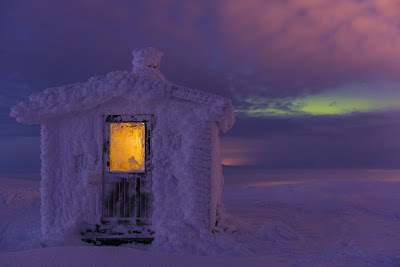
Well … 2020 bowed out the way so many of us feared it would but hoped it wouldn’t: doomy and gloomy thanks to the seemingly unending Covid crisis. I can’t complain too much, of course. I’m sure that my 2020 was a lot less painful and difficult than the one endured by so many others, but there’ve been times when it’s been extra-trying for all of us, and there’s no immediate end to the problem in sight yet.
Still, if nothing else, we had a frosty, snowy Christmas and New Year here in Lancashire, even if we weren’t allowed to get together to enjoy it properly, and I will admit, despite all these other distractions, to having had a prodigious year in terms of output. In fact, when I look back on 2020, I’m staggered by how much material of mine has actually got out there. So, in today’s blogpost, I’ll be running a quick but completely self-indulgent recap on everything of mine that’s been published during this darkest of years, and thanking those responsible.
In addition, because we appear to be sitting in a real-life freezer at present, today would seem like an opportune time to run a fairly detailed review and discussion of Tim Curran’s nightmarish novel of South Antarctic horror, HIVE.
If you’re only here fore the Curran review, that’s no problem. You’ll find it, as usual, at the lower end of today’s blog, in the Thrillers, Chillers section. Meanwhile, if you’ve got a bit more time, you might be interested in this …
Roundup and thanks
So, 2020 was more of a short story year for me than I’ve had in recent times, which is something I’m very glad about, as I’ve always loved penning short-form scary stuff and in previous years haven’t felt that I’ve found enough time for it.
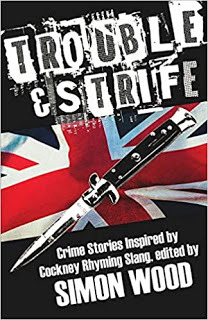 Things got going on that front from the word ‘go’ when the psycho-thriller anthology,
TROUBLE AND STRIFE
, was published over the Christmas and New Year period in 2019, though it was 2020 before it first started doing the rounds properly.
Things got going on that front from the word ‘go’ when the psycho-thriller anthology,
TROUBLE AND STRIFE
, was published over the Christmas and New Year period in 2019, though it was 2020 before it first started doing the rounds properly. I was chuffed to bits to be invited to this by editor and writer, Simon Wood, and remain eternally thankful to Down & Books for putting out such a superbly finished piece of dark literature.
The antho comprised stories drawing on Cockney rhyming slang. Mine, Mr Kipper, told the tale of a nervous employee working alone at a book recycling centre in the heart of a town being terrorised by a Ripper-type serial killer. Other amazing tales came from such luminaries of the thriller genre as Steve Brewer, Jay Stringer and Catriona McPherson.
Another anthology contribution followed in April, in the ALCHEMY PRESS BOOK OF HORRORS 2. This book more or less speaks for itself, being the second in the series of annual horror anthologies put out by Alchemy Press, one of the busiest and yet highest quality independent publishing houses in the UK.
 Huge thanks go to editors Peter Coleborn and Jan Edwards for inviting me to participate (I’m strongly hoping that it won’t be the last time I do).
Huge thanks go to editors Peter Coleborn and Jan Edwards for inviting me to participate (I’m strongly hoping that it won’t be the last time I do). My story was What Did You See?, which followed the (mis)fortunes of two young women who travel to the heart of the Cotswolds one snowy Christmas Eve, not intending to enact an ancient ritual, but inevitably finding themselves drawn towards it. Of course, I wasn’t alone. The book also included superb horror stories from the likes of Gail-Nina Anderson, John Llewellyn Probert, Thana Niveau, Nancy Kilpatrick and Samantha Lee, among many others.
The middle part of the year was given over to what I will always consider my main writing output, which is my crime novels. On this occasion it was ONE EYE OPEN, my first title for Orion Books. It was longer in the making than a couple of months, of course. I’m sure the ball started rolling on this one way back in 2019, but the book was finally completed and published in August 2020. Since then it’s done very nicely in terms of sales, I’m happy to report.
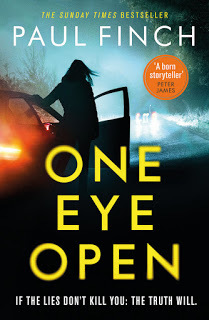 It tells the story of Sergeant Lynda Hagen, a female Traffic officer, who investigates a serious road accident and single-handedly detects anomalies but, because her supervisors don’t take it seriously, is drawn almost alone into a deadly confrontation with the underworld.
It tells the story of Sergeant Lynda Hagen, a female Traffic officer, who investigates a serious road accident and single-handedly detects anomalies but, because her supervisors don’t take it seriously, is drawn almost alone into a deadly confrontation with the underworld. My thanks go to Orion Books for the great job they did with this one, but also to my editor at Orion, Emad Akhtar for his robust and constructive approach. I could never have created the finished product without him.
My second big publication of 2020 came shortly afterwards in September. As well as writing dark fiction, some may know that I also enjoy editing it … specifically in the shape of my Terror Tales series. Now in its 10th year, this series of folklore-themed horror anthologies, each volume set in a different geographical region of the UK (and maybe beyond, depending on how long the series lasts), has been very close to my heart for quite a time now. I commenced it with Gray Friar Press, but the last three volumes have come out via Telos Publishing, who’ve taken on the mantle in sterling fashion.
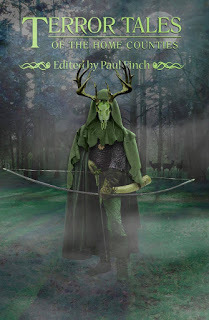 This year’s volume was
TERROR TALES OF THE HOME COUNTIES
, the 12th in the series and one of the most positively reviewed to date. Many thanks to Telos for their usual hi-spec finish on the book, and to the host of great authors who responded to my call. It contains excellent stories from the likes of Steve Duffy, Reggie Oliver, Helen Grant, Tina Rath, David J Howe, Jason Gould and many others.
This year’s volume was
TERROR TALES OF THE HOME COUNTIES
, the 12th in the series and one of the most positively reviewed to date. Many thanks to Telos for their usual hi-spec finish on the book, and to the host of great authors who responded to my call. It contains excellent stories from the likes of Steve Duffy, Reggie Oliver, Helen Grant, Tina Rath, David J Howe, Jason Gould and many others. Autumn followed, of course, and I spent the bulk of that evocative season preparing three Christmas-themed releases. These comprised a re-issue of my festive Victorian-era novella, SPARROWHAWK, which back in 2010 was short-listed for the British Fantasy Award but last October was put out again in paperback, in a spanking new cover, in ebook form, and on Audible, narrated by the amazing Greg Patmore.
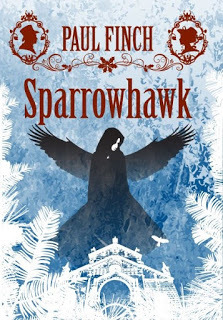 It concerns John Sparrowhawk, an ex-cavalry soldier who is released from the debtor’s prison just in time for the Christmas of 1842, but, having no home to call his own, takes employment with the beautiful and enigmatic Miss Evangeline, who pays him to stand guard over a mysterious house in Bloomsbury. It seems easy enough, until the season turns bitterly cold and a terrifying supernatural presence reveals itself.
It concerns John Sparrowhawk, an ex-cavalry soldier who is released from the debtor’s prison just in time for the Christmas of 1842, but, having no home to call his own, takes employment with the beautiful and enigmatic Miss Evangeline, who pays him to stand guard over a mysterious house in Bloomsbury. It seems easy enough, until the season turns bitterly cold and a terrifying supernatural presence reveals itself. Narrator Greg Patmore went on to do a similarly incredible job with the other two October publications, a pair of collections of Christmas-themed horror stories: IN A DEEP, DARK DECEMBER and THE CHRISTMAS YOU DESERVE, the former an original (again in paperback, on Kindle and in Audible) and the latter a reissue (again, in all formats).
I repeat that a special thanks goes to Greg for bringing these three autumn/Christmas releases to life with his atmospheric readings (and an astonishingly wide range of character voices).
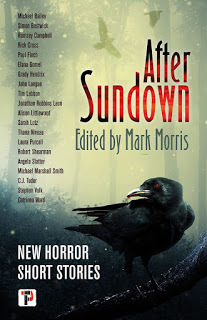 But October was a busy month for other reasons too. On the 20th, I was delighted to hit my third anthology of the year, when a short story of mine,
Branch Line
, appeared in the Flame Tree Press horror anthology,
AFTER SUNDOWN
, edited by the inexhaustible Mark Morris, who also selected works from the likes of Tim Lebbon, Ramsey Campbell, Sarah Lotz and CJ Tudor.
But October was a busy month for other reasons too. On the 20th, I was delighted to hit my third anthology of the year, when a short story of mine,
Branch Line
, appeared in the Flame Tree Press horror anthology,
AFTER SUNDOWN
, edited by the inexhaustible Mark Morris, who also selected works from the likes of Tim Lebbon, Ramsey Campbell, Sarah Lotz and CJ Tudor. My own story was one I particularly liked. It centres around a stretch of abandoned railway line, reputedly haunted, and the terrible fate that awaits two schoolboys who venture up there.
Once again, huge thanks go to Mark Morris and to Flame Tree Press for choosing my work and showcasing it in such a fine publication.
Meanwhile, a short story from last year, The New Lad (which appeared in Titan Books’ EXIT WOUNDS, edited by Paul Kane and Marie O’Regan), almost regained traction when it made the short-list for the 2020 Dagger Awards in the capacity of Best Short Story, but it was beaten at the death during the Awards (the first time they’ve ever been held online) by Lauren Henderson’s excellent tale, #Me Too (which appeared in the anthology Invisible Blood, edited by Maxim Jakubowski).
So, 2020 hasn’t always been a story of win-win. But it’s never unpleasant to find oneself moving in such esteemed company.
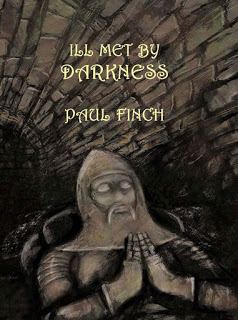 Back in the world of horror, November saw the publication of
ILL MET BY DARKNESS
, a hardback collection of four of my novellas, all brand new, from Sarob Press. In chronological order, the stories it contains are
Snicker-Snack
, which brings the Jabberwock into present-day London,
Down to a Sunless Sea
, which concerns the archaeological exploration of an undersea Greek temple,
The Hell Wain
, in which two gangsters arrive in a remote Lancashire town to carry out a hit, only to find the place mysteriously deserted even though it’s Bonfire Night, and
Spirit of the Season
, the story of an academic’s attempt to make contact with the real Father Christmas.
Back in the world of horror, November saw the publication of
ILL MET BY DARKNESS
, a hardback collection of four of my novellas, all brand new, from Sarob Press. In chronological order, the stories it contains are
Snicker-Snack
, which brings the Jabberwock into present-day London,
Down to a Sunless Sea
, which concerns the archaeological exploration of an undersea Greek temple,
The Hell Wain
, in which two gangsters arrive in a remote Lancashire town to carry out a hit, only to find the place mysteriously deserted even though it’s Bonfire Night, and
Spirit of the Season
, the story of an academic’s attempt to make contact with the real Father Christmas. The physical quality of this particular book took my breath away. So, once again I owe a huge debt of thanks to Sarob and Rob Morgan in particular for asking me to send him something, and for doing such a great job when it arrived.
The last thing of mine to hit the public realm in 2020 was the reprint of my 1998 short story, THE FIMBULWINTER, which I posted on my blog on December 17 as my annual free-to-read Christmas story, though, given that it pitches an everyday copper into the midst of the winter at the end of the world, it’s not expressly about Christmas and can easily be read … well, now.

THRILLERS, CHILLERS, SHOCKERS AND KILLERS …
An ongoing series of reviews of dark fiction (crime, thriller, horror and sci-fi) – both old and new – that I have recently read and enjoyed. I’ll endeavour to keep the SPOILERS to a minimum; there will certainly be no given-away denouements or exposed twists-in-the-tail, but by the definition of the word ‘review’, I’m going to be talking about these books in more than just thumbnail detail, extolling the aspects that I particularly enjoyed (I’ll outline the plot first, and follow it with my opinions) … so I guess if you’d rather not know anything at all about these pieces of work in advance of reading them yourself, then these particular posts will not be your thing.
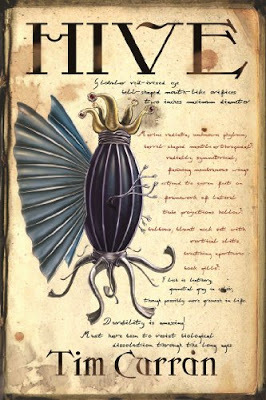 HIVE by Tim Curran (2012)
HIVE by Tim Curran (2012) Outline
Deep in the central Antarctic, in the face of a fast-approaching winter, the US research base, Kharkhov Station, where scientific tests are underway across a wide range of disciplines, makes an incredible discovery. At Medusa Drift, a deep excavation camp some distance from HQ, maverick paleobiologist, Professor Robert Gates, has uncovered several inhuman mummies encased in the ice. Quite clearly, these horrific specimens belong to an unknown species, and so Gates feels they are worthy of detailed examination.
Isolated in a storage unit separated from the main camp, the extinct life-forms, which appear to be weird composites of fish, reptile and insect, are slowly thawed out. Chief engineer, Jim Hayes, is unsure whether this is a good idea as they know nothing about these bizarre creatures, while station hand, Lind, becomes disoriented, insisting that his mind is being invaded by unknown intellects, and finally suffering a spectacular nervous breakdown and being confined to Biomed by the deeply concerned Doctor Elaine Sharkey. Only oddly unemotional station chief, LaHune, seems unmoved by these chilling events.
The crew has no real idea what they have found, but as more and more members of staff are beset by weird dreams concerning lost civilisations, fantastical cities constructed in Antarctica at the dawn of time, and hordes of winged monstrosities sweeping aggressively overhead, Gates develops an incredible theory that an ancient, non-human race settled this region before it froze over, and that their relics still remain buried under the ice sheet.
The weather worsens meanwhile, further isolating the base, and back at Medusa Drift one of the scientists disappears. When all communications are cut, Hayes realises that they are in serious trouble. Gates, meanwhile, returns to Medusa Drift. He is intent on finding his missing colleague, but in the process, in company with other scientists, descends through a complex series of ice caves, finally discovering the terrifying primordial city that so many of the others have been dreaming about. It soon becomes clear that whatever beings dwelled here, they were immensely powerful and malign. What’s more, though dormant, they are not necessarily dead.
While all this is happening, the story intersects with (though some readers have said ‘is interrupted by’) two additional but separate narratives in the form of journals from the 1920s.
Firstly, when British academic, Arthur Blackburn, had a nightmarish experience as he too ventured into this forbidden realm and in the process aroused the ire of a truly horrific beast. And secondly, when a fearless explorer called Fox set out with his own team to find out what happened to Blackburn, and also uncovered evidence that an alien civilisation once called the South Pole home, a civilisation so heartlessly cruel that it is all but inimical to the survival of mankind …
ReviewIt’s impossible to talk about Hive without mentioning the many influences that are clearly on show here. The first and most obvious one is HP Lovecraft’s original short novel of Antarctic terror, At the Mountains of Madness . Whether Hive was ever intended to be an actual sequel to that, I’m unsure, but it fulfils that role completely, unofficially maybe, though in so many ways it’s a re-run of the same story. We have the archaeological expedition marooned in the frozen waste; we have the discovery of a city sunken beneath the ice; we have the re-emergence of a prehistoric evil long thought dormant in the depths of that city, and so forth.
There are some key differences which I’ll talk about in due course, but the similarities are many, even down to the atmosphere of the setting, and the tone of the language, which, while not quite as grandiose as Lovecraft’s, is florid and descriptive.
Then there are strong hints of the John Carpenter film, The Thing, itself an adaptation of John W Campbell’s Who Goes There? (written in 1938, interestingly, only four years after At the Mountains of Madness) though it’s the film that Hive most resembles, dealing mainly with a contemporary polar base, the discovery by accident of an extra-terrestrial horror buried beneath ice caps millions of years old, and its explosion back to life amid fountains of spraying blood, bursting brains and other liquified human tissue, not to mention the arrival of demonic human husks now horrifically possessed.
The third piece of work it reminds me of is Nigel Kneale’s era-defining Quatermass and the Pit(1958), though in terms of this comparison it’s more to do with human race-memories of a wicked, winged species, who, having cultivated and culled one civilisation after another, crossed the vastness of space to Earth, where they fell into a dreamless state, only to wake up several billennia later when disturbed by human excavation.
All of these similarities with Hive are very obviously there, but while many sci-fi/horror/fantasy purists object to that on principle, I can’t say that it bothered me a great deal.
Everything’s derivative of other things. As I implied earlier, Who Goes There? provided the basis for The Thing but might itself have been influenced by At the Mountains of Madness. And none of this has prevented Tim Curran from telling a rattling good yarn. That said, I did have one or two problems with it.
For example, the jury still seems to be out on whether the additional 150 pages of 1920s expeditionary detail, apparently absent from some earlier versions of Hive, were worth including. This may be unfashionable, but it’s my personal view that, while they don’t add massively to the whole, they are better written, more intriguing and, in truth, a lot more frightening than much of the 21st century section. Everything about them is raw, more visceral, more brutal. The prose is leaner, the characters more satisfying (perhaps because both Blackburn and Fox are instantly recognisable as stiff-upper-lip Brits, different from each other in personality, but still the types of guys who even in that end-of-Empire era, still thought it their duty to go out and conquer unknown places).
Given that there was probably no hope of either of these additional sections of the story seeing the light of publication as stand-alones – they wouldn’t really serve any purpose in that capacity other than to re-tread At the Mountains of Madnesseven more closely than Hive itself does – they do add to the book because they contain quality writing. That said, this doesn’t mean they don’t feel a bit jemmied in, or that they don’t interrupt the general flow of the narrative.
I also had the feeling that Tim Curran could have wielded his editor’s pen a tad more vigorously. Okay, that was a problem Lovecraft suffered from too, but as the inventor of this mythos, he usually gets a pass. In Curran’s case, admittedly wonderful but also endless descriptions of the Antarctic ice sheet and the many geophysical challenges it presents – the near impassable barriers of the Dominion Mountain Range and the Transantarctics, for example – get wearing as they roll on for page after page. It’s the same with all the technical stuff. It’s all fascinating at first, the complexities of setting up a ‘deep drift camp’, of drilling down to Lake Vordog, of simply surviving through four months of complete darkness and temperatures below –60. The descriptions of the camp, and the instructive technical writing this involves, are all completely believable, and they absolutely place you there, right on the spot. But there’s just too much of it.
It’s the same with the alien city beneath the glaciers. So often we’re told it’s indescribably evil, and yet so often Curran tries to describe it. Yes, this was another problem that Lovecraft suffered from, and in both cases, it gets a little boring.
But everything I’ve said notwithstanding, Tim Curran writes very well. His prose is vivid and powerful, and he handles the overall story excellently, recreating what in real life would be a colossal undertaking in totally authentic detail. At times, it feels as if Curran himself has been involved in the setting up and managing of an Antarctic research station.
And while this is a horror novel, is it frightening?
Yes. Undeniably.
It was a chilling concept from the beginning, when Lovecraft first hatched it. But as I mentioned a few paragraphs back, Curran has made some interesting changes off his own bat, adding whole new dimensions of cosmic (Quartermass-ian?) horror, inasmuch as the Old Ones are no longer just callous cosmic entities who could destroy mankind or nourish him at a whim, but evil genocidal schemers who, once they’ve been awakened, can finally put into action an almost unimaginably abhorrent plan.
But for all that, the most frightening sequences of all are provided, as is so often the case in Lovecraftian fiction, by the shoggoths, the Old Ones (or Elder Things), mindless but unstoppable servants. I won’t go into too much detail, but on the strength of this book, Curran does the shoggoths excellently well; better than I’ve seen anyone else. One scene in particular, when a blizzard-begirt camp is attacked by one such monstrosity, is literally spine-chilling and gripped me intensely.
In so many ways, Hive is an extraordinary piece of work. As I say, it’s a little dragged out in parts, and the linear narrative, even when not interrupted twice by different storylines, is too repetitious for its own good. But there is all kinds of good stuff here. If you like horror at the ends of the Earth, if you like ancient evils blazing back to life after aeons of slumber, if you like Lovecraft, hell if you only like John Carpenter’s The Thing, this novel should be of very genuine interest.
I’m certain it’d be a pointless exercise wishing to see Hive hit either the TV or the cinema screens, as any movie mogul behind such a wonderful Lovecraftian enterprise would surely want to go back to the source and do At the Mountains of Madnessinstead, but just on the off-chance, in case some heroic individual with loads and loads of money opts to do Curran’s version first, I’m yet again going to get my oar in early, and recommend the perfect cast:
Jim Hayes – Clayne CrawfordDoctor Elaine Sharkey – Jessica Chastain
Professor Robert Gates – Daniel Bruhl
Dennis LaHune – Cory Michael Smith
Cutcheon – Neil Grayston
Fox – Matt Smith



